- Carnival 2020
- Tenerife Buzz
- More Tourists in July
- Tenerife Free Wi-Fi
- New Air Routes
- New Flights to Tenerife
- Tenerife Hotels
- Tourists in Tenerife

Tenerife Map
- Customs & Traditions
- When to go to Tenerife
- Tenerife Airports
- Ports of Tenerife
- What to Bring
- Passports/Visas
- Airport Transfers
- Driving In Tenerife
- Opening Hours
- Electricity
- Time & Water
- Dangers & Nuisances
- Emergency Numbers
- Communications
- Speaking Spanish
- Gay & Lesbian Travellers
- Disabled Facilities
- Senior Citizens
- Weather Forecast
- Average Temperatures
- Satellite Image
- Santa Cruz – Capital
- Playa de las Américas
- Puerto de la Cruz
- Los Cristianos
- Northwest Tenerife
- Teide National Park
- Lunar Landscape
- Los Gigantes
- Anaga Mountains
- Pyramids at Güímar
- Barranco del infierno
- Costa Adeje
- Golf del Sur
- Playa de Las Américas
- El Bollullo
- Playa de Las Teresitas
- Playa Jardín
- Lago Martiánez
- Playa San Marcos
- Playa del Duque
- Playa Fañabé
- About Loro Parque
- Dolphinarium
- Chimpanzees
- Penguinarium
- Tenerife Events
- Loro Parque
- Hovima Costa Adeje
- HOVIMA La Pinta
- Europe Villa Cortés
- Costa Adeje, Tenerife
- Parque Santiago IV
Travel Info
- How to get to Tenerife
- Getting Around
Passports, Visas & Vaccinations
PASSPORTS Tenerife is a Spanish territory and therefore all passport and residency rules are the same as on the Spanish mainland.
European Union citizens can travel to Tenerife with national ID cards alone. If your country does not issue identity cards, then a valid passport is required. All non-EU nationals require a full valid passport.
Keep your passport and other important documents safe at all times, perhaps lock them away in the secure box, which is supplied by your hotel. However, remember that you will need your passport or other photo ID documents, like a driving licence, if you are paying by credit or debit card or hiring a car for instance.
VISAS Nationals of the EU as well as Norway and Iceland do not require a Visa for a stay of up to 90 days. If you wish to stay longer than 90 days you will need to apply for a Residency Permit during the first month of your stay.
VACCINATIONS You do not require any vaccinations to visit the Canary Islands, unless you are coming from an infected area. Make a point of checking with your tour operator or local Spanish Embassy if in any doubt.
EU citizens can obtain a refund of most medical costs by using form EHIC, which are available from post offices, health or social security offices in your country.
© Copyright 2001-2024 All Rights Reserved
- Privacy Policy
- Terms & Conditions
Tenerife Airport
Tenerife south airport (tfs).
- About Tenerife South Airport
- Arrivals Information
- Departure Information
- Security Screening Tenerife South Airport
- Smoking at Tenerife South Airport
- Airport News
- Entry Requirements for Tenerife
- EES – Entry/Exit System
Travel Insurance
Thieves and pickpockets.
- Travelling with your pet
- Flying When Pregnant
- Flying With Babies and Young Children
- Flying with a Medical Condition
- EU Cabin Regulations
- Baggage allowance
- Child Car Seats, Booster Seats & Pushchairs
- Lost Luggage and Lost Property
- VIP Airport Lounge
- Airport Parking
- Airport Shopping
- Cash Machines & Currency Exchange
- Internet WiFi
- Places to Eat & Drink
- Reduced Mobility When Flying
- Wheelchair/Mobility Aid in Tenerife
- Flying to Tenerife with a Guide Dog or Assistance Dog
- Disabled Parking in Tenerife
- Tenerife South Airport (TFS) Flight Arrivals Today
- Tenerife South Airport (TFS) Flight Departures Today
- Destinations from Tenerife South Airport
- Private Jet Charter A
- Hotels Costa Adeje
- Hotels Los Gigantes
- Hotels Puerto de la Cruz
- Holiday Rentals
- Taxis From Tenerife Airport
- Airport Bus
- Buses across Tenerife
- Tenerife Tram
- Taxi Transfers from Tenerife South Airport to Alcalá
- Taxi Transfers from Tenerife South Airport to Amarilla Golf
- Taxi Transfers from Tenerife South Airport to Buzanada
- Taxi Transfers from Tenerife South Airport to Callao Salvaje
- Taxi Transfers from Tenerife South Airport to Costa Adeje
- Taxi Transfers from Tenerife South Airport to Costa del Silencio
- Taxi Transfers from Tenerife South Airport to El Médano
- Taxi Transfers from Tenerife South Airport to Garachico
- Taxi Transfers from Tenerife South Airport to Golf del Sur
- Taxi Transfers from Tenerife South Airport to Guía de Isora
- Taxi Transfers from Tenerife South Airport to La Caleta
- Taxi Transfers from Tenerife South Airport to La Laguna
- Taxi Transfers from Tenerife South Airport to La Orotava
- Taxi Transfers from Tenerife South Airport to Las Caletillas
- Taxi Transfers from Tenerife South Airport to Los Cristianos
- Taxi Transfers from Tenerife South Airport to Los Gigantes
- Taxi Transfers from Tenerife South Airport to Masca
- Taxi Transfers from Tenerife South Airport to Palm-Mar
- Taxi Transfers from Tenerife South Airport to Playa de Fanabe
- Taxi Transfers from Tenerife South Airport to Playa de las Americas
- Taxi Transfers from Tenerife South Airport to Playa la Arena
- Taxi Transfers from Tenerife South Airport to Playa Paraiso
- Taxi Transfers from Tenerife South Airport to Playa San Juan
- Taxi Transfers from Tenerife South Airport to Porís de Abona
- Taxi Transfers from Tenerife South Airport to Puerto de la Cruz
- Taxi Transfers from Tenerife South Airport to Puerto de Los Cristianos
- Taxi Transfers from Tenerife South Airport to Puerto Santiago
- Taxi Transfers from Tenerife South Airport to Santa Cruz de Tenerife
- Taxi Transfers from Tenerife South Airport to Santa Ursula
- Taxi Transfers from Tenerife South Airport to Sueño Azul
- Taxi Transfers from Tenerife South Airport to Torviscas
- Costa Adeje
- Los Gigantes
- Los Cristianos
- Playa de Las Americas
- Puerto de la Cruz
- Santa Cruz de Tenerife
- Estate Agents/Real Estate Tenerife
- Tenerife Property Shop S.L.
- Tenerife Bike Training
- Bike Point Tenerife
- Tenerife Golf Holidays
- Tenerife Top Paragliding
- Los Abrigos
- Golf del Sur
- Weddings in Tenerife
- Mesón El Monasterio
- Tenerife Weather in January
- Tenerife Weather in February
- Tenerife Weather in March
- Tenerife Weather in April
- Tenerife Weather in May
- Tenerife Weather in June
- Tenerife Weather in July
- Tenerife Weather in August
- Tenerife Weather in September
- Tenerife Weather in October
- Tenerife Weather in November
- Tenerife Weather in December
- Covid 19 – Coronavirus – Tenerife South Airport
- Covid test Tenerife South Airport
- Covid-19 Travel Documentation for Tenerife South Airport
Tenerife Travel Advice
Tenerife entry requirements.
Tenerife is part of the European Union and belongs to the Schengen Area. The travel documentation needed and potential visa requirements depend on your nationality. Please see our Entry Requirements page for more information on this topic:
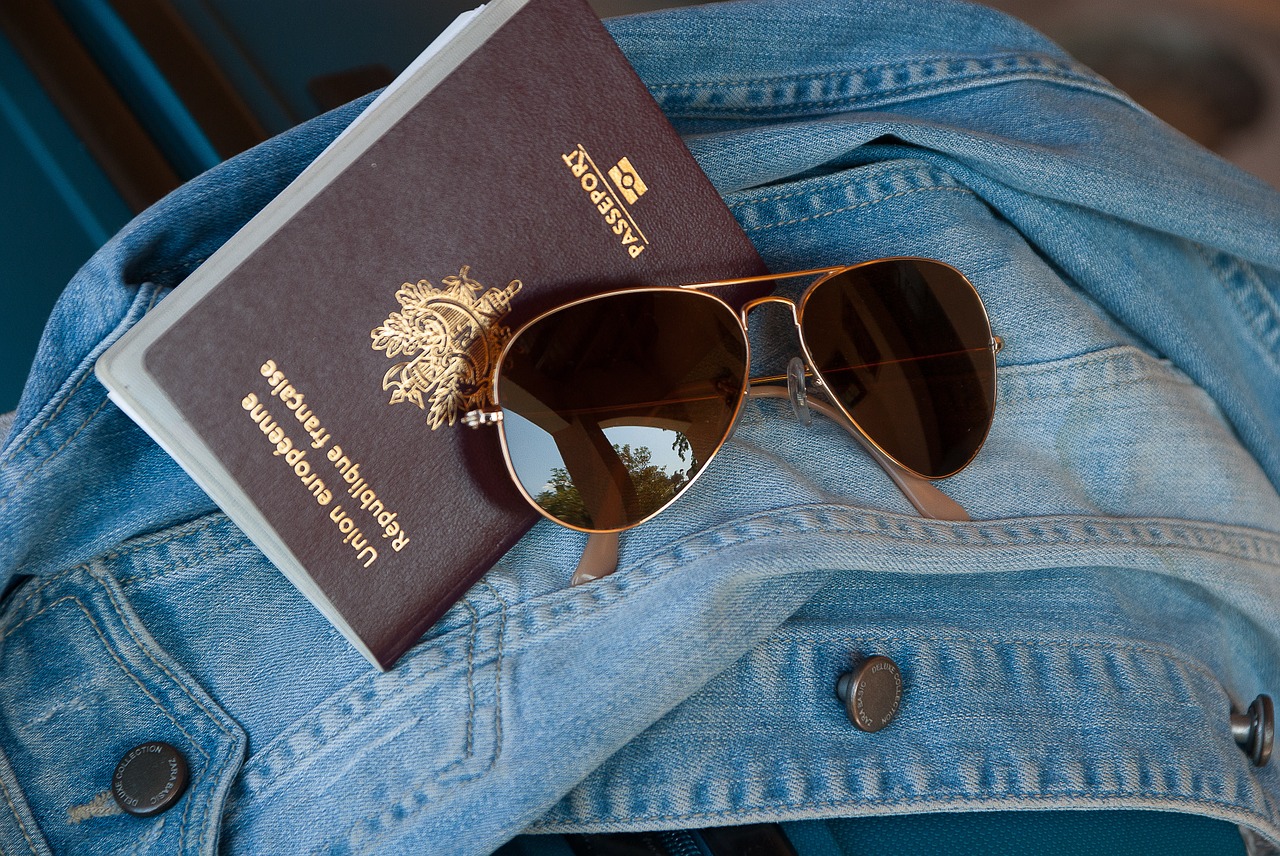
➥Tenerife Entry Requirements
The vast majority of people visiting Tenerife have no need to consult a doctor or visit a hospital, however, sometimes the unexpected does happen. It is therefore good to be prepared for this eventuality to avoid costly medical bills. In some situations, you may be able to access state health care. At other times, you may need to consult a doctor privately. More detailed information can be found on our page Travel Insurance Tenerife :

➥Travel Insurance
Tenerife is a safe destination, however, thieves and pickpockets do operate on the island, the same as in all other holiday destinations. They rely on the fact that people are unaware or distracted. Read our information on the techniques and scams that are commonly used, to ensure that you don’t become a victim:

➥Thieves and Pickpockets
Climate and Weather in Tenerife
Tenerife has a subtropical climate and benefits from relatively consistent weather throughout the year. This makes the island a popular year-round destination and an attractive winter escape. Find out more about the climate and the weather in Tenerife throughout the year:
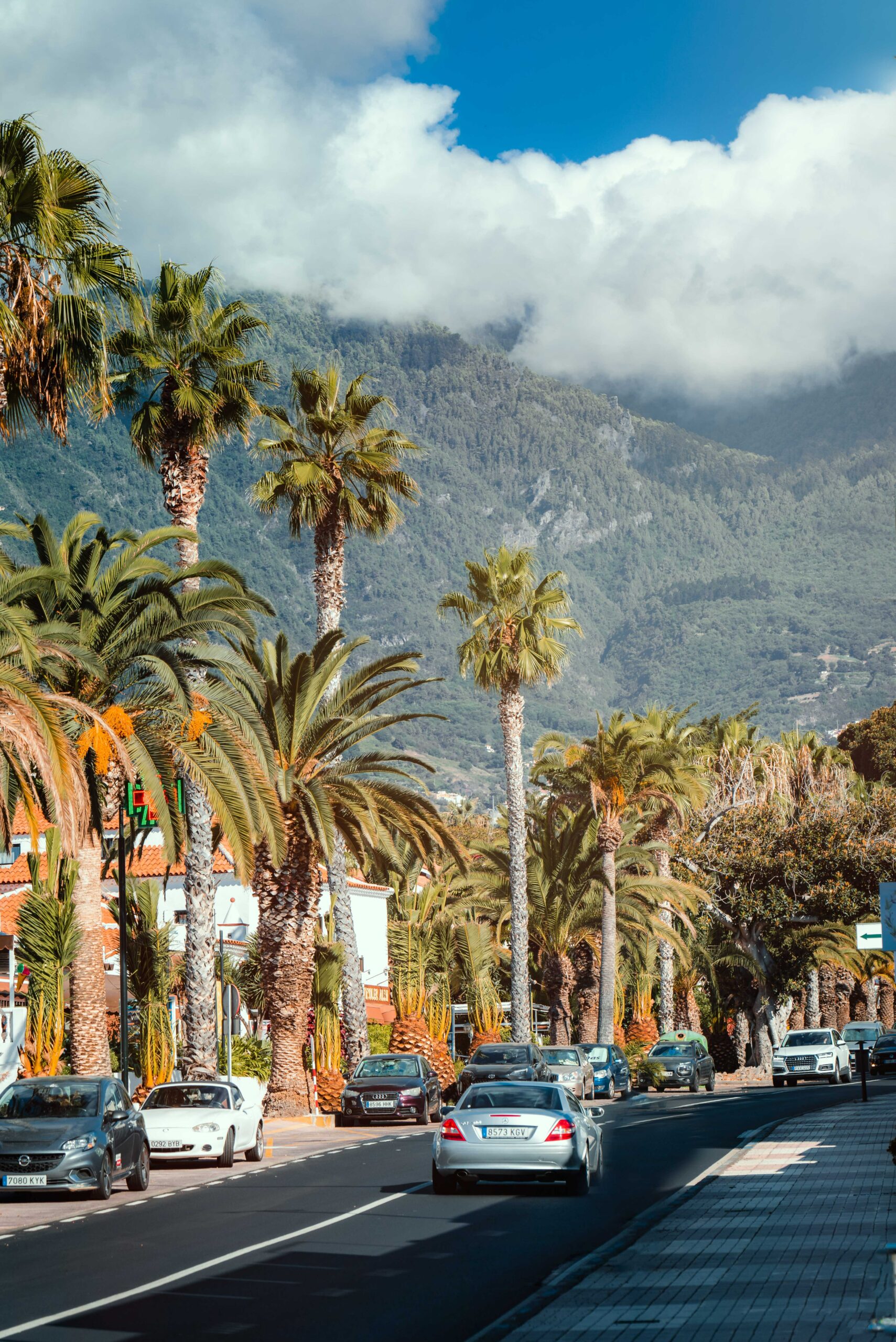
➥ Climate in Tenerife
Covid-19 Travel Guidance
The rules and guidance regarding travel during Covid-19 change frequently. We have summarised the latest advice for travel via Tenerife South Airport here. For detailed information on the Covid documentation required for travel to Tenerife, please see here .
Tenerife Airport Car Rental
- Compare every car hire company at TFS
- Great prices guaranteed
- 100% secure online payment
- Choose your currency
- Inclusive no-excess deals

We’re sorry, this site is currently experiencing technical difficulties. Please try again in a few moments. Exception: request blocked

Do I need a visa to go to Tenerife?
Are you dreaming of a sun-soaked vacation on the beautiful island of Tenerife? The warm climate, stunning landscapes, and vibrant culture make it an irresistible destination. But before you start packing your bags, there’s one important question you need to answer: Do I need a visa to go to Tenerife?
This seemingly simple question can quickly become a perplexing dilemma for travelers. The rules and regulations surrounding visas can be complex and vary depending on your country of origin. But fear not, as we have all the answers you need to ensure a smooth and hassle-free journey to this captivating island.
In this article, we will delve into the intricacies of visa requirements for Tenerife, providing you with the latest statistics, expert opinions, and even a compelling anecdote to demonstrate the importance of understanding the visa process. By the end of this article, you will have a clear understanding of whether or not you need a visa, and if so, how to obtain one efficiently.
Here’s a quick preview of what you can expect to find in the rest of the text:
1. An overview of visa requirements for Tenerife, including the countries that require visas and those that are exempt. 2. Expert opinions on the significance of adhering to visa regulations and the potential consequences of non-compliance. 3. A step-by-step guide on how to navigate the visa application process effectively, including necessary documentation and application timelines. 4. Real-life stories from travelers who encountered unexpected visa issues and how they resolved them, highlighting the importance of thorough preparation.
So, if you’re eager to embark on a memorable adventure to Tenerife, keep reading to discover everything you need to know about visa requirements and ensure a stress-free journey.
Traveling to Tenerife: Visa Requirements and Everything You Need to Know
Tenerife is a Spanish territory located in the Canary Islands, an archipelago off the northwest coast of Africa. As a part of Spain, the visa requirements for Tenerife are aligned with those of the Schengen area.
If you are a citizen of a Schengen Agreement country, including all 26 European Union (EU) member states as well as Iceland, Liechtenstein, Norway, and Switzerland, you do not need a visa to travel to Tenerife. The Schengen Agreement allows for visa-free travel within the participating countries for a period of up to 90 days within a 180-day period.
However, if you are not a citizen of a Schengen Agreement country, you may need to obtain a visa before traveling to Tenerife. The specific visa requirements depend on your nationality and the purpose of your visit. It is important to check the requirements for your particular country of origin well in advance of your trip.
In general, if you are planning a tourist visit to Tenerife for less than 90 days, you will usually need to apply for a Schengen tourist visa. This visa allows you to travel to Tenerife and other Schengen countries for tourism, family visits, or business purposes. The application process usually involves filling out a form, providing necessary documents such as a valid passport, proof of travel insurance, flight itineraries, and proof of accommodation.
It is important to note that visa requirements and application processes can vary between countries, so it is highly recommended to consult the nearest Spanish embassy or consulate in your country for the most up-to-date and accurate information.
Additionally, it is always advisable to apply for a visa well in advance of your intended travel dates, as processing times can vary and unexpected delays may occur. It is also important to ensure your passport is valid for at least six months beyond your intended departure date from Tenerife.
In summary, Tenerife follows the visa requirements of the Schengen Agreement. Citizens of Schengen Agreement countries can visit Tenerife visa-free for up to 90 days within a 180-day period. Non-Schengen Agreement country citizens may need to obtain a Schengen tourist visa before their visit. It is crucial to consult the nearest Spanish embassy or consulate for the most accurate information regarding visa requirements and application processes.
Do I need a visa to go to Tenerife: Conclusions
In this article, we have learned that whether or not you need a visa to go to Tenerife depends on your nationality. Citizens of the European Union, Switzerland, Norway, Iceland, and Liechtenstein do not need a visa to visit Tenerife, as they have the right to freedom of movement within the Schengen Area. However, if you are traveling from a non-EU country, it is important to check the visa requirements beforehand.
For those who do require a visa, it is necessary to apply for a Schengen visa. This is a short-stay visa that allows travelers to visit Tenerife and other Schengen countries for up to 90 days within a 180-day period. The application process typically involves filling out a form, providing supporting documents such as a valid passport, proof of accommodation, and travel insurance, and paying a fee.
It is worth noting that visa requirements can change, so it is always recommended to check with the embassy or consulate of your home country for the most up-to-date information. They will be able to provide you with accurate details regarding the specific visa requirements and procedures.
In conclusion, the need for a visa to go to Tenerife depends on your nationality. Citizens of the European Union and certain other countries do not require a visa, while others may need to apply for a Schengen visa. It is important to research and understand the visa requirements before planning your trip to ensure a smooth and hassle-free travel experience.
If you found this article helpful, be sure to explore our blog for more useful travel information. Don’t forget to share this article on your social media profiles to help others who may have the same question about traveling to Tenerife.
Do I need a visa to go to Tenerife: Faqs
No, if you are a citizen of the European Union or a citizen of a country that has a visa exemption agreement with the Schengen Area, you do not need a visa to travel to Tenerife. However, if you are a citizen of a country outside the European Union without a visa exemption agreement, you will need to apply for a tourist visa before your trip.
What is the currency in Tenerife?
The currency used in Tenerife, as well as in the rest of Spain, is the Euro (€). It is advisable to have some cash on hand, but credit and debit cards are widely accepted in most establishments, including hotels, restaurants, and shops.
What is the best time to visit Tenerife?
The best time to visit Tenerife depends on your preferences and the activities you plan to do. The island enjoys a mild and warm climate throughout the year, making it a popular destination for beach lovers. The summer months (June to September) are ideal for sunbathing and swimming, while the winter months (December to February) are perfect for outdoor activities and hiking. However, Tenerife’s peak tourist season is during the summer, so if you prefer fewer crowds, consider visiting during the shoulder seasons of spring (March to May) or autumn (October to November).
What are the must-visit attractions in Tenerife?
Tenerife offers a wide range of attractions for visitors to enjoy. Some of the must-visit attractions include: – Teide National Park: Home to the iconic Mount Teide, the highest peak in Spain. – La Laguna: A UNESCO World Heritage site known for its colonial architecture and historical significance. – Masca Village: A picturesque mountain village nestled in a valley. – Siam Park: One of the best water parks in the world. – Los Gigantes Cliffs: Impressive cliffs that drop into the Atlantic Ocean. – Anaga Rural Park: A beautiful natural park with hiking trails and stunning landscapes.
Table of Contents
Tenerife City related Post:

About The Author
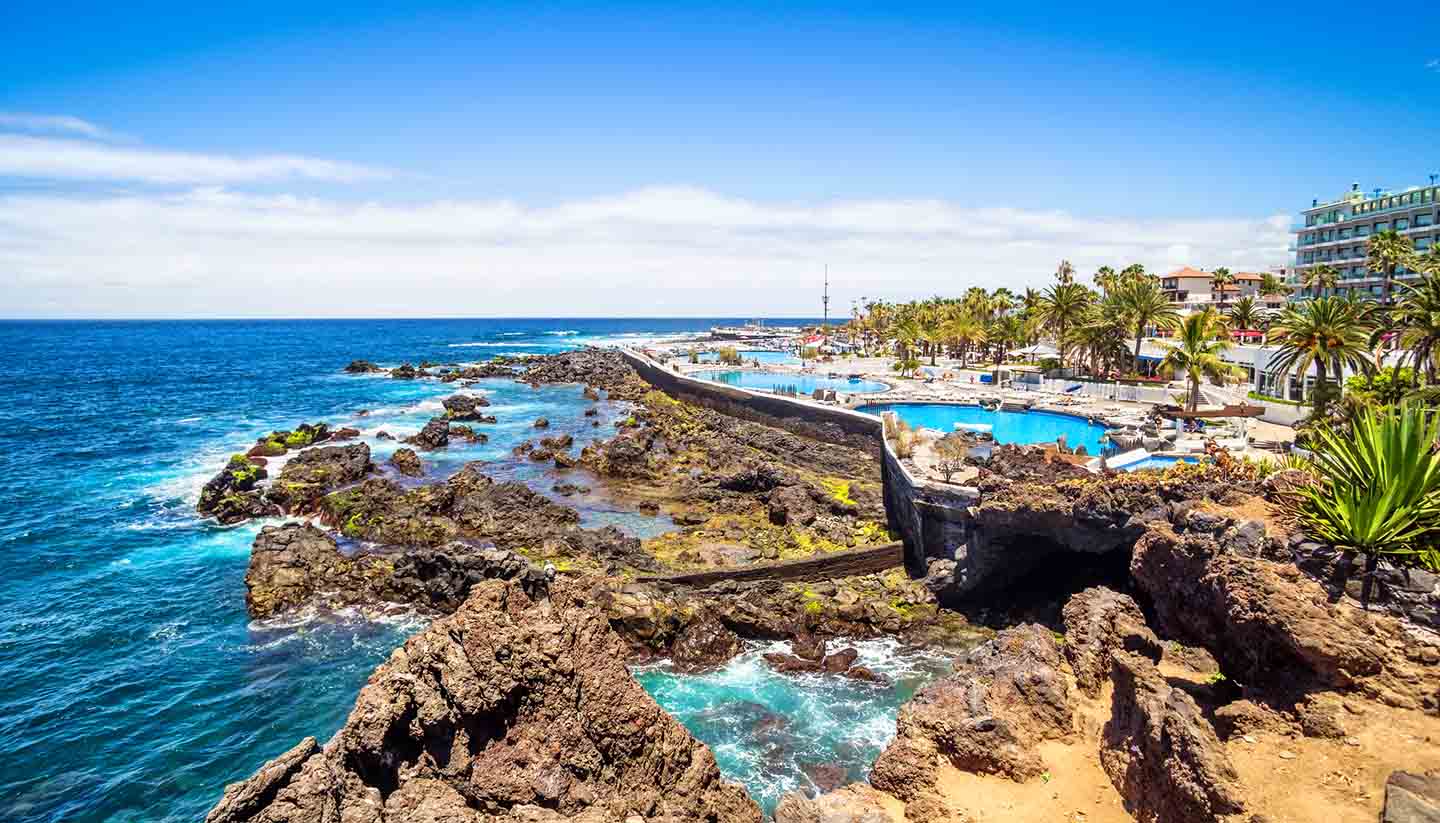
Introducing Tenerife
- About Tenerife
- Images of Tenerife
- History, language & culture
- Weather & geography
Plan your trip
- Travel to Tenerife
- Where to stay
While you’re there
- Things to see & do
- Shopping & nightlife
- Food & drink
- Getting around
Spain: Key Info
- Passport & visa
- Public Holidays
- Money & duty free
Book your flights
- Tenerife Sur Airport
- Los Cristianos beaches
- Playa de Las Americas beaches
Cruise Locations
Tenerife visa and passport requirements, embassies and tourist offices, embassy and consulate of the kingdom of spain in the usa.
2375 Pennsylvania Avenue, NW, Washington, DC 20037, USA Tel: (202) 452 0100 or 728 2340/30 (consulate). www.maec.es
Spanish Consulate General in the UK
20 Draycott Place, London SW3 2RZ, UK Tel: (020) 7589 8989 or 0906 550 8970 (recorded visa information; calls cost £1 per minute) or 0906 554 0714 (to make an appointment; calls cost £1 per minute). www.conspalon.org Opening hours: Mon-Fri 0915-1400 (visa information by appointment only).
Spanish Embassy in the UK
39 Chesham Place, London SW1X 8SB, UK Tel: (020) 7235 5555. www.maec.es

Book a Hotel
© Columbus Travel Media Ltd. All rights reserved 2024
Go Tenerife
Required documentation to visit tenerife.
The island of Tenerife is part of the Canary islands, one of Spain’s 17 autonomous communities. Therefore, the requirements to enter Tenerife are the same as the requirements to visit the rest of Spain. The requirements to enter Tenerife are set by the Spanish government, and are managed by the Spanish Foreign Affairs Ministry .
In this section, we are talking exclusively about the documentation required to visit the island as a tourist. For other purposes, please consult the official website of the Spanish Foreign Affairs Ministry.
Based on the visitor’s nationality, the documentation required to enter the island is as follows:
🇪🇺European Union
The Canary Islands are part of the European Union and the Schengen Area. Citizens of EU Member States or the Schengen Area only need a national ID document or valid passport to enter. Visas and other special documents are not required.
Countries which do NOT require a visa
For stays of less than three months for tourism purposes, nationals of the following countries only require a valid passport:
Albania, Andorra, Antigua and Barbuda, Argentina, Australia, Bahamas, Barbados, Bosnia and Herzegovina, Brazil, Brunei, Canada, Chile, Colombia, South Korea, Costa Rica, Dominica, El Salvador, United Arab Emirates, United States of America, Georgia, Granada, Guatemala, Honduras, Israel, Japan, Kiribati, Macedonia, Malaysia Marshall, Mauritius, Mexico, Micronesia, Moldova, Monaco, Montenegro, Nicaragua, New Zealand, Palau, Panama, Paraguay, Peru, United Kingdom, Solomon, Samoa Islands, Saint Kitts and Nevis, San Marino, St. Vincent and the Grenadines, St. Lucia, Holy See (Vatican City State), Serbia, Seychelles, Singapore, East Timor, Tonga, Trinidad and Tobago, Tuvalu, Ukraine, Uruguay, Vanuatu, Venezuela
For stays of longer than three months, or stays for reasons other than tourism, visitors from countries that are outside the EU and the Schengen Area should request the same visa that is required to enter Spain.
Countries which DO require a visa
Afghanistan, Angola, Saudi Arabia, Algeria, Armenia, Azerbaijan, Bangladesh, Bahrain, Belize, Benin, Belarus, Burma / Myanmar, Bolivia, Botswana, Burkina faso, Burundi, Bhutan, Cape Verde, Cambodia, Cameroon, Central African, Republic, Chad, China, Comoros, Congo, Congo, Democratic Republic Of, North Korea, Ivory Coast, Cuba, Dominican Republic, Ecuador, Egypt, Eritrea, Eswatini, Ethiopia, Philippines, Fiji, Gabon, Gambia, Ghana, Guinea, Guinea-Bissau, Equatorial Guinea, Guyana, Haiti, India, Indonesia, Iraq, Iran, Jamaica, Jordan, Kazakhstan, Kenya, Kyrgyzstan, Kuwait, Laos, Lesotho, Lebanon, Liberia, Libya, Madagascar, Malawi, Maldives, Mali, Morocco, Mauritania, Mongolia, Mozambique, Namibia, Nepal, Niger, Nigeria, Oman, Pakistan, Papua New Guinea, Qatar, Rwanda, Russia, Sao Tome And Principe, Senegal, Sierra Leone, Syria, Somalia, Sri Lanka, South Africa, Sudan, South Sudan, Surinam, Thailand, Tanzania, Tajikistan, Togo, Tunisia, Turkmenistan, Turkey, Uganda, Uzbekistan, Vietnam, Yemen, Djibouti, Zambia, Zimbabwe
Additional information
If your country doesn’t appear on this list, or if you would like further information, please consult the official website of the Spanish Foreign Affairs Ministry .
You can check the health documentation necessary to enter Spain on the official website of the spanish Ministry of Health .
Tips for planning a holiday in Tenerife
Tenerife travel guide.
If it’s your first time traveling to Tenerife and you’re not sure how to start planning your adventure, I’m here to help. I created this guide with all the information you need about planning a holiday in Tenerife , including things like places to visit, where to stay, and how to get around.
Plan your holiday in Tenerife step-by-step
This Tenerife travel guide will cover everything you need to know so you can organize your trip step-by-step:
1. Best things to do in Tenerife
- 2. Best time to visit Tenerife
3. Plan your Tenerife travel itinerary
- 4. How to travel to Tenerife cheaply
- 5. Where to stay in Tenerife
6. How to get around Tenerife
- 7. Where to eat in Tenerife
- 8. Travel budget for a Tenerife trip
- 9. What to pack for Tenerife + tips
- 10. Tourist map of Tenerife
People travel to Tenerife for beautiful beaches, scenic landscapes, and charming villages. Whatever you want to do here, I’ll help you plan a memorable trip.
After visiting Tenerife several times as a couple, with family, and with friends, I’ve become familiar with the most beautiful places on the island. No matter your interests, you’ll find endless things to see and do here.
Here is an overview of the best things to do in Tenerife :

How to climb Mount Teide

Things to do in Santa Cruz de Tenerife
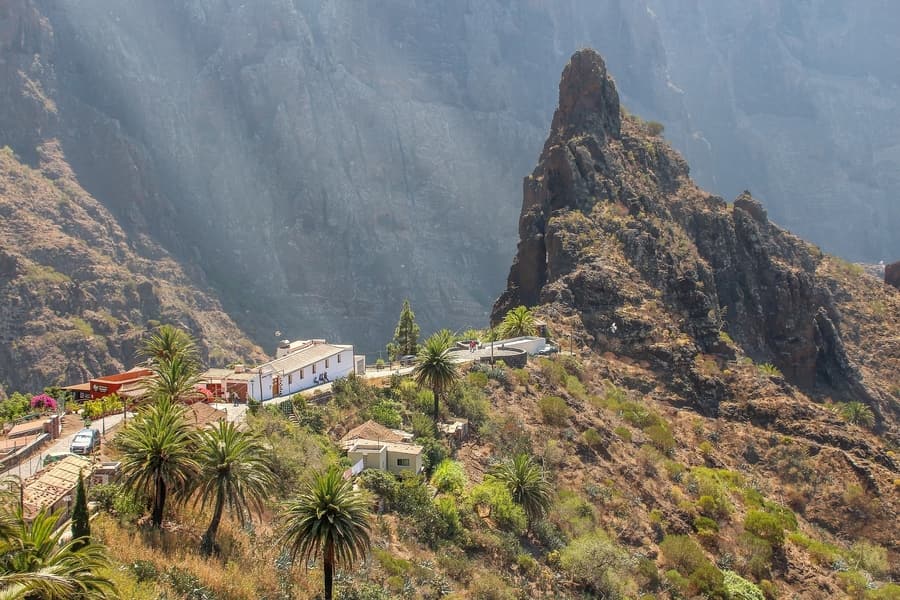
Guide to hiking the Masca Gorge

Guide to Anaga Rural Park
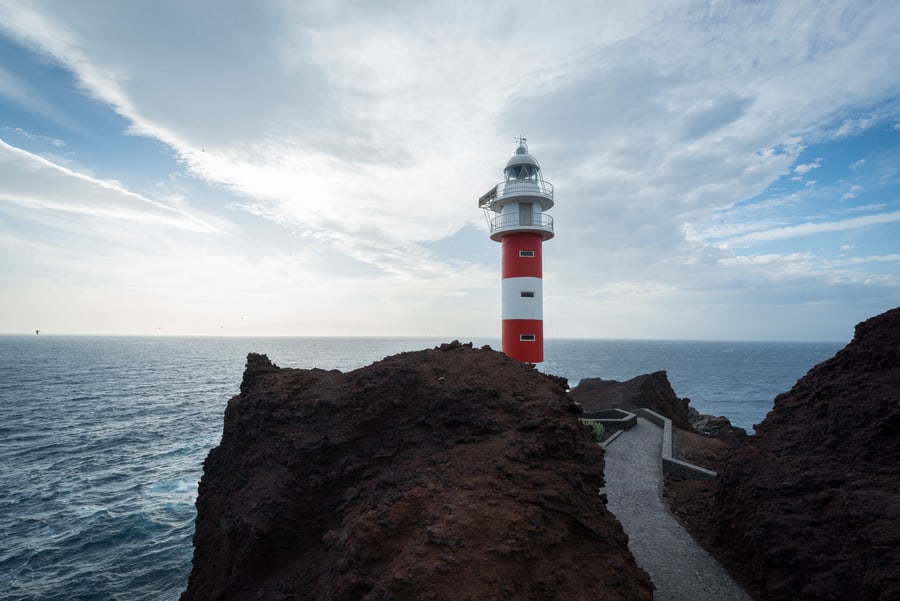
Guide to visiting Punta de Teno
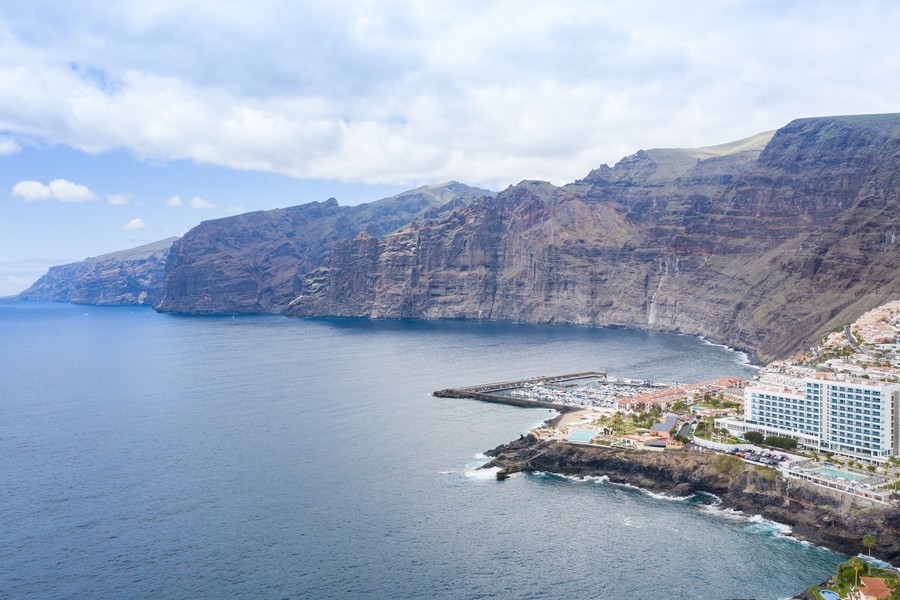
Things to do in Los Gigantes, Tenerife

Things to do in Puerto de la Cruz
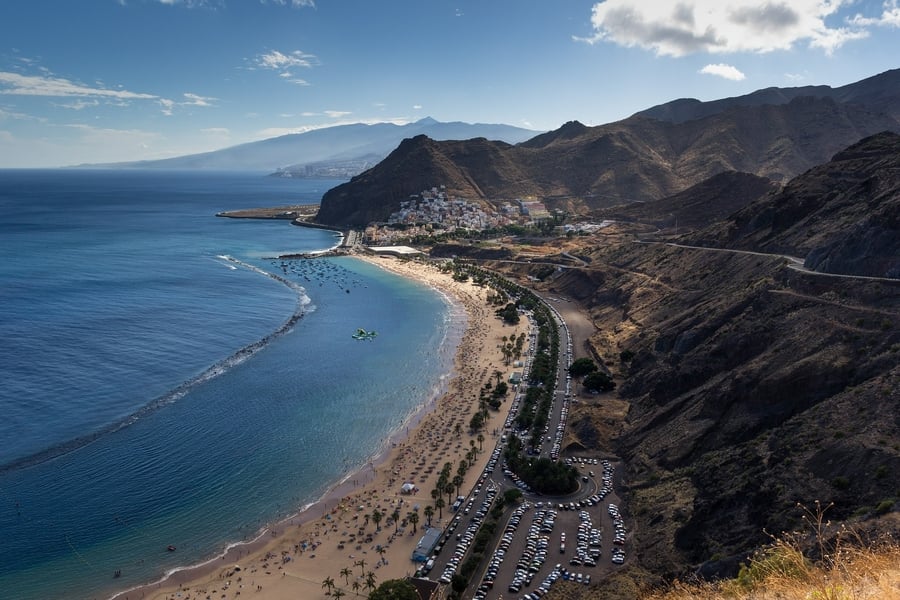
Best beaches in Tenerife
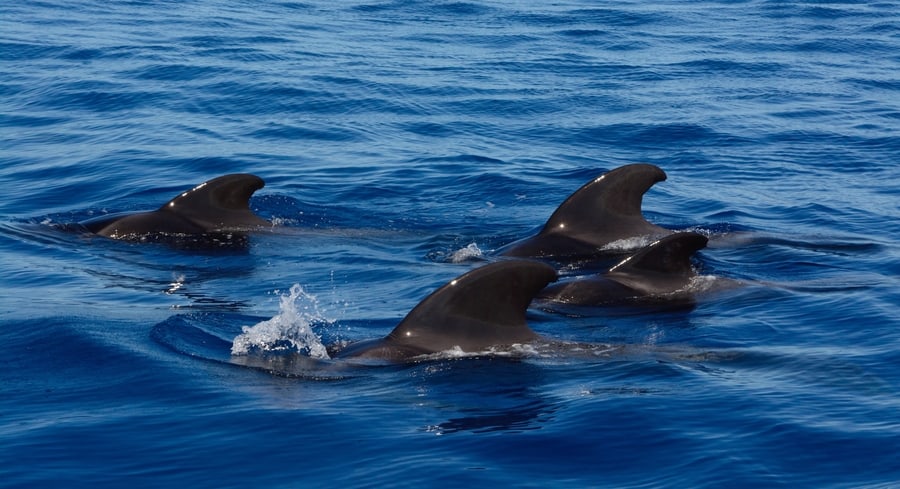
Whale and dolphin-watching in Tenerife

Things to do in Icod de los Vinos
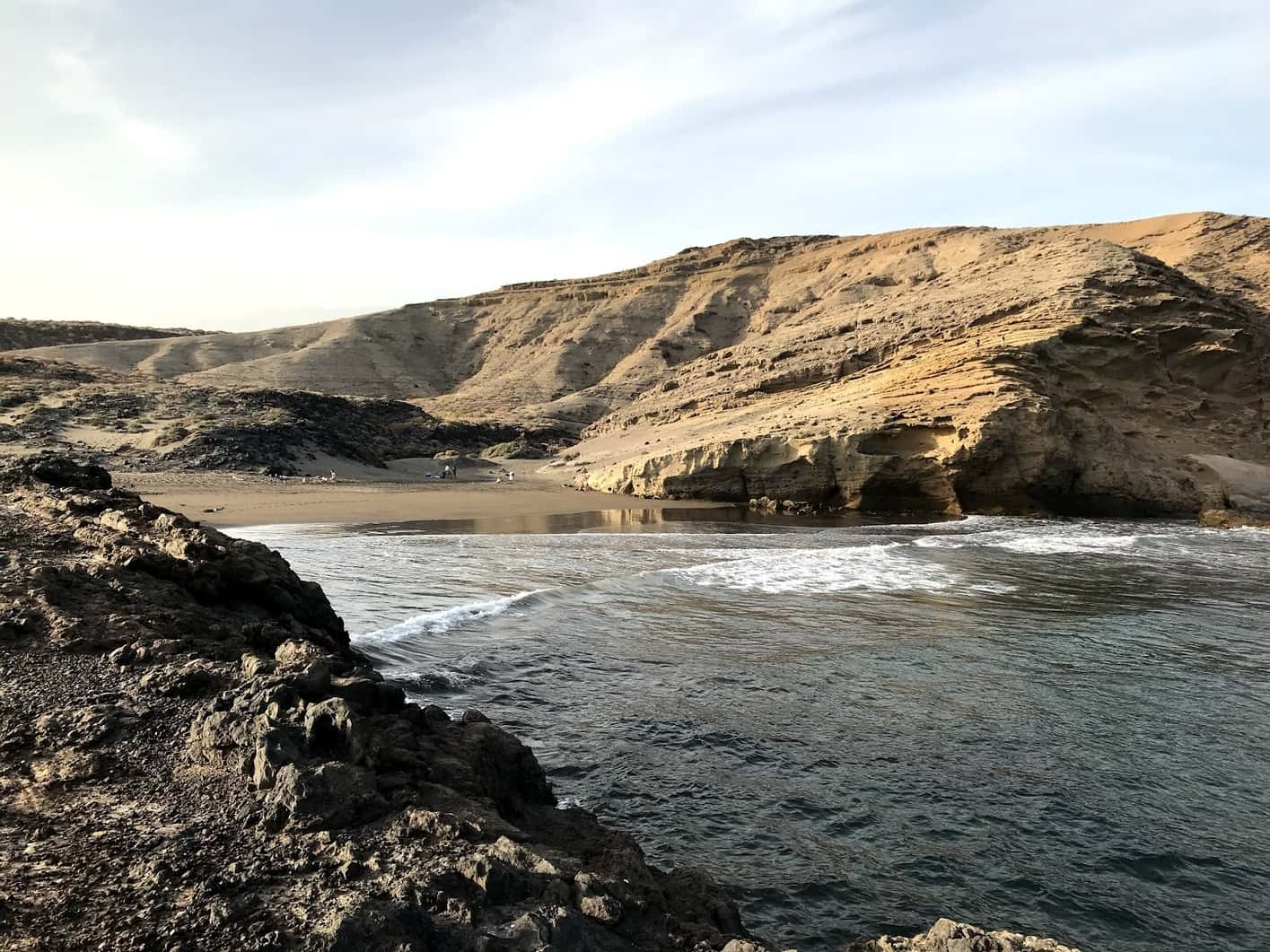
Things to do in El Médano
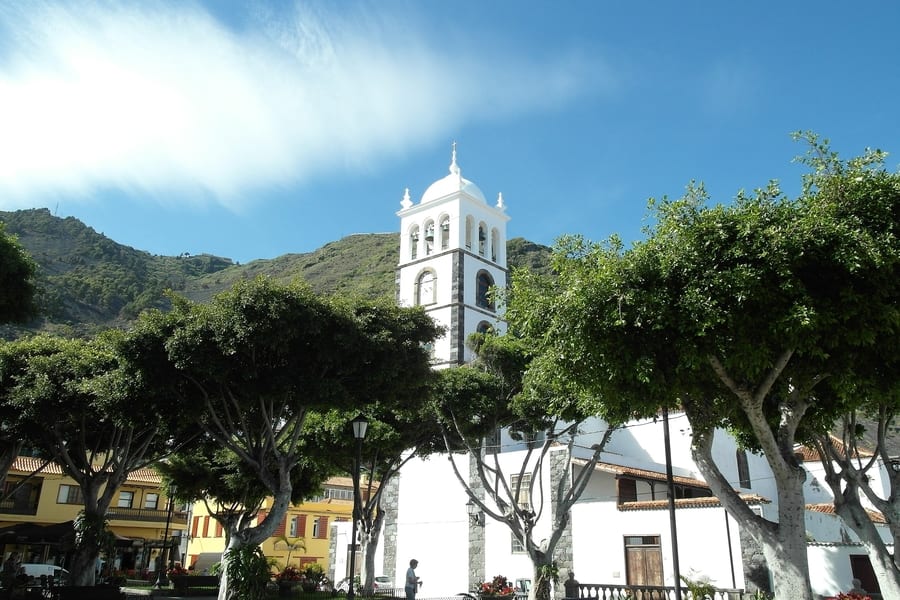
Things to do in Garachico
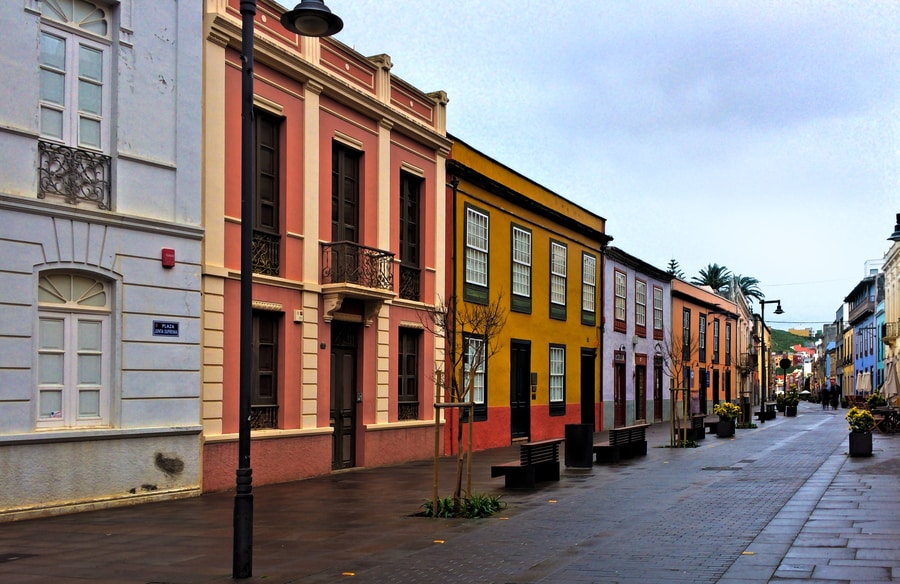
Things to do in La Laguna
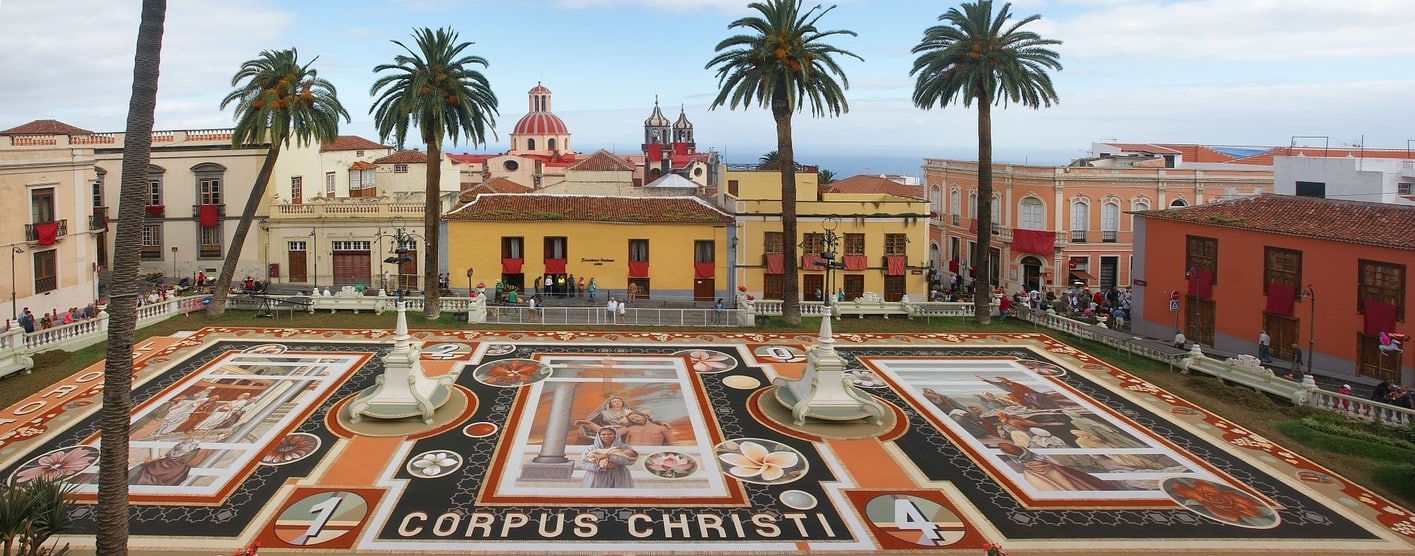
Things to do in La Orotava
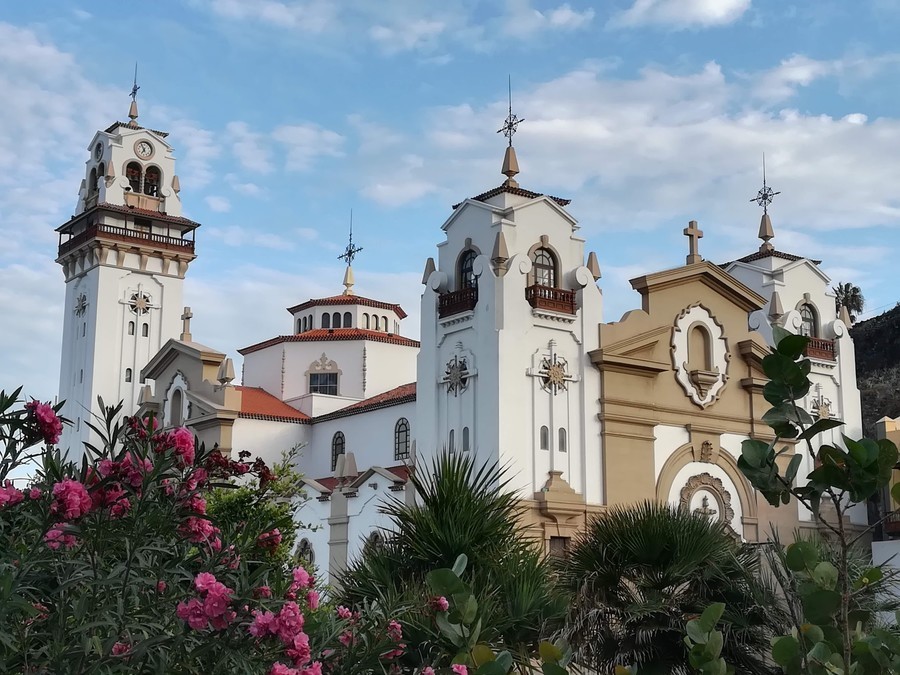
Things to do in Candelaria
As you can see, there are plenty of places to visit during your trip to Tenerife , from traditional towns to natural parks. If you don’t have much time and can only visit part of the island, don’t worry. We have specific guides on things to do in Tenerife North and things to do in Tenerife South , so you can plan a wonderful getaway.
Don’t get overwhelmed; the island isn’t that big, so regardless of where you stay, you’ll be able to visit the main points of interest in the north and south. Your best bet is to rent a car so you can move freely around the island. However, if you’d rather not worry about driving during your Tenerife holiday, there are lots of great excursions around Tenerife that will allow you to discover the most popular attractions .
2. best time to visit Tenerife
If you’re wondering about the best time to visit Tenerife , there really isn’t a bad time to go. The temperatures on the island are quite mild throughout the year, with an average temperature of 77 °F (25 °C) in the summer and 65 °F (18 °C) in the winter.
Keep in mind that there are about 25 microclimates on the island, meaning there may be small thermal variations from one area to another. For example, the south tends to get more sun, so the temperatures are a few degrees higher than in the north. As for the northern part of the island, it usually gets more rain, especially in winter. That said, there are only 2-3 rainy days per month on average, so you’ll still be able to enjoy your vacation to Tenerife .
Overall, you can enjoy a pleasant trip to Tenerife year-round.
Best month to travel to Tenerife
If you want a specific answer for when to travel to Tenerife , it’s difficult to pinpoint an exact time, as the temperatures and weather in Tenerife are mild year-round. Something to keep in mind is that, depending on what you want to do during your holiday in Tenerife , some months may be better than others.
For example, for lazy days on the beach, plan to travel to Tenerife in the summer months, specifically July, August, and September. The temperatures should be around 77 °F (25 °C), with very little rain and up to 12 hours of daylight. That said, during this time of year, there are often sudden changes in temperature from one area of the island to another, depending on altitude. So, if you want to climb Mount Teide , be sure to bring some warm layers to wear. Also, one of the drawbacks of traveling in Tenerife during the summer is that the prices for everything are higher since it’s peak tourist season.
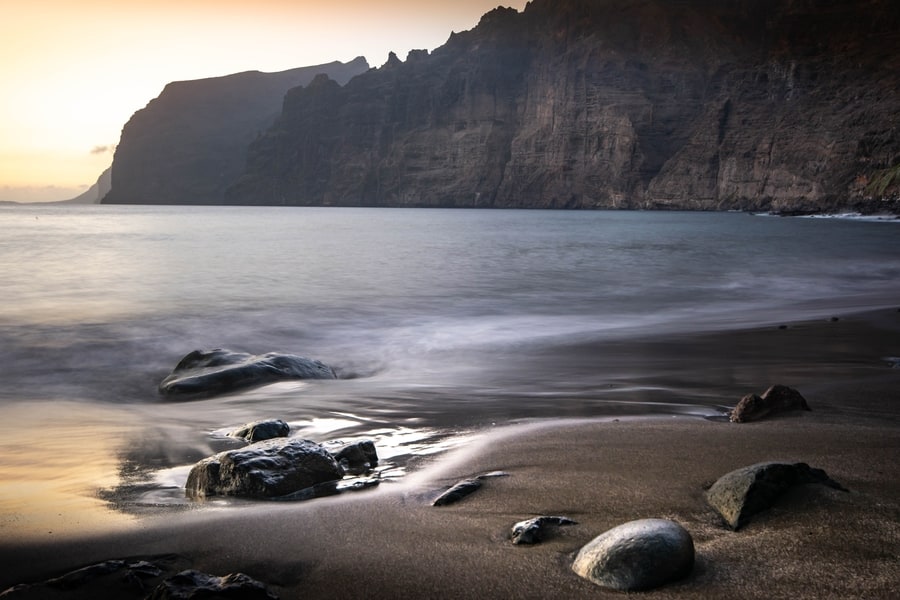
Best month to visit Tenerife
On the other hand, if you want to go to Tenerife in the winter (January, February, and March) the temperatures will still be quite nice, with an average of 65 °F (18 °C). This time of year also brings more rainfall, although it’s usually no more than 2-3 rainy days per month. So, this could be the best time to travel to Tenerife if you want to go hiking and try other outdoor activities.
The spring (April, May, and June) and the autumn (October, November, and December) are the best for taking a cheap holiday to Tenerife . It’s the low season, so accommodation and food prices will be more affordable. Plus, there will be fewer crowds and the weather will still be pleasant, so you can visit the beach, go hiking, and enjoy other attractions .
Once you’ve decided to travel to Tenerife , it’s time to plan your itinerary. Below, you’ll find all the information you need to organize a trip itinerary and route so you can make the most of your time.
Should you travel to Tenerife North or South?
One of the most common questions I see is whether to travel to Tenerife North or South . Both parts of the island offer beautiful sites and exciting attractions. Depending on your personal preferences, one area will appeal to you more than the other.
First, if you visit Tenerife North , you’ll be able to explore some of the most important metropolitan areas on the island, such as Santa Cruz de Tenerife and Puerto de la Cruz . The north is also home to several charming towns like La Orotava and Garachico , where you can try some authentic Canarian cuisine. There are also incredible natural areas here, like Anaga Rural Park , and beaches like Las Teresitas. So, if you’re interested in history, culture, and stunning hiking trails, you’ll love exploring all the tourist attractions in Tenerife North .
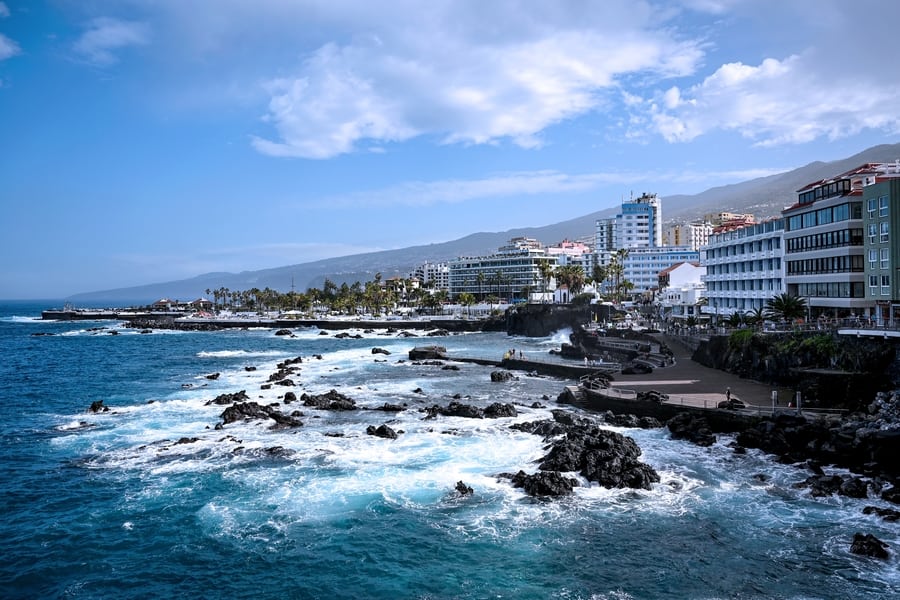
As for Tenerife South, it’s known for its white sand beaches, where you can practice watersports like kayaking and surfing, as well as dolphin and whale-watching. There are also some lovely historical towns here like Vilaflor de Chasna and El Médano , not to mention magnificent landscapes like the Masca Gorge , one of the best places to visit in Tenerife South . And if you’re looking to enjoy some shopping and nightlife while traveling in Tenerife , there are lots of restaurants, shops, and nightclubs in Tenerife located in this part of the island.
Remember, you can get from one end of the island to the other by renting a car, booking a tour, or taking the bus. So, just because you’re staying in one part of Tenerife, that doesn’t mean you can’t explore other interesting areas. I will say that the quickest and easiest way to get around is by renting a car in Tenerife .
How many days do you need to visit Tenerife?
Most tourists in Tenerife spend 4-5 full days on the island, which is enough time to see all the main points of interest, including Mount Teide . If you want to explore Tenerife in more depth, I recommend spending 7 days here.
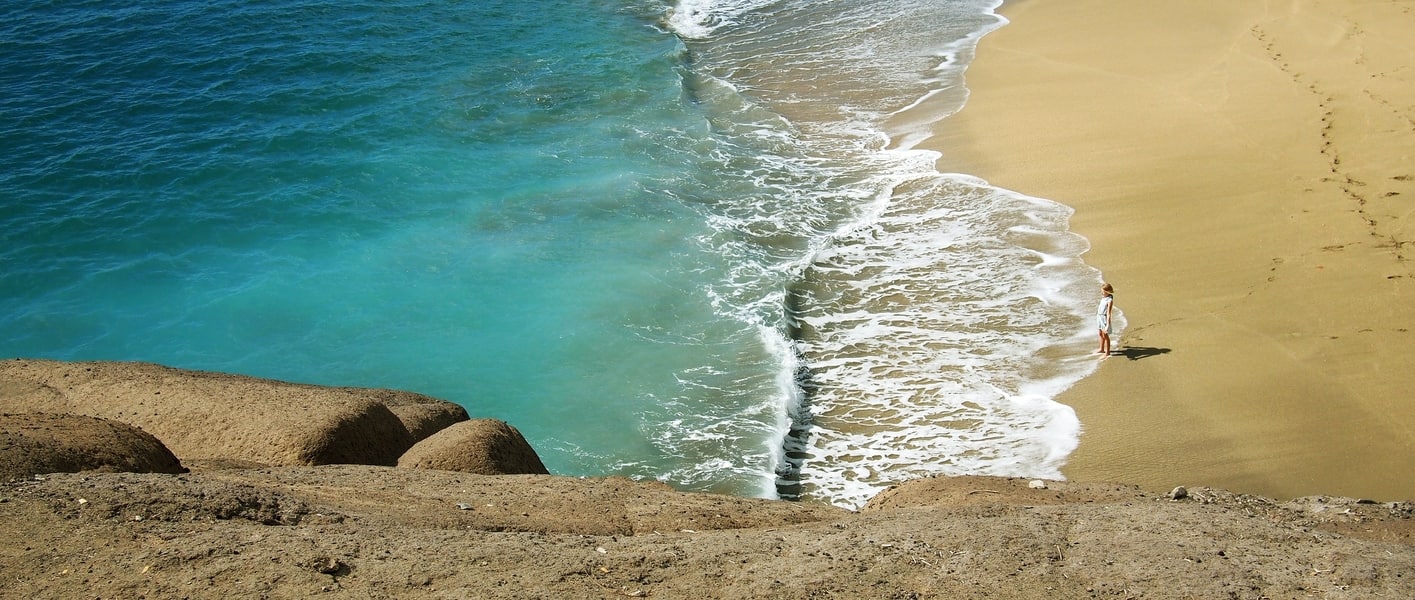
Of course, if you don’t have that much time, you can still visit Tenerife ’s top attractions in 3 days. To help you plan your route through the island, here are some itinerary ideas:
Itinerary ideas for a Tenerife holiday
7 days in tenerife, 5 days in tenerife, 3 days in tenerife.

Spend the first day of this trip through Tenerife by getting to know Vilaflor and its otherworldly lunar landscapes. If you take the road from Vilaflor and head towards the Cañadas del Teide, you’ll see some of the most incredible viewpoints in Tenerife. Take your time and capture some photos!

Day 1 – Efrén Yanes
You can also take the opportunity to picnic in the Cañadas del Teide and wait for nightfall, as this is one of the best areas to stargaze and photograph the Milky Way . You can book this tour , which includes dinner and telescopic observation of the night sky.
Finally, to get the most out of your visit to Tenerife , stay overnight at the Parador de Las Cañadas del Teide .
The second day of your holiday in Tenerife can be dedicated to climbing Mount Teide , which is something I recommend everyone do. Most travelers take the cable car up to La Rambleta, then walk the remaining 650 feet to the summit. However, to do the final route, you must request this permit in advance. You can also skip the cable car and make the ascent up Mount Teide by taking the Sendero 7 (Montaña Blanca) route.

After spending some time on Teide, head back to Santa Cruz de Tenerife for a good night’s rest. Some of the best 5-star hotels in Tenerife are here, such as the Iberostar Heritage Grand Mencey ; although the Silken Atlántida Santa Cruz is another good option, and where we stayed during our Tenerife trip . Another excellent accommodation, especially for tight budgets, is Hotel Príncipe Paz , one of the top-rated cheap hotels in Santa Cruz de Tenerife.
During your third day traveling in Tenerife , do a tour of the capital city, Santa Cruz de Tenerife . Here, you can see the Castle of San Cristóbal, Our Lady of Africa Market, and Plaza de España.

At lunchtime, go to San Cristóbal de La Laguna, a declared UNESCO World Heritage Site. There are lots of cool places to see in La Laguna , including Plaza del Adelantado and the Palacio de Nava. Later, return to Santa Cruz de Tenerife, stopping at Las Teresitas Beach along the way. It’s one of the most beautiful beaches in Tenerife , and one of the few white and golden sand beaches in the north.
You can spend the night in the same hotel in Santa Cruz de Tenerife from day 2.
The next day, begin with a visit to Anaga Rural Park , one of the most magical places to visit in Tenerife . Its laurel forests are a declared Biosphere Reserve and look like something out of a fairy tale. Best of all, there are several walking trails here, including the popular Trail of the Senses.
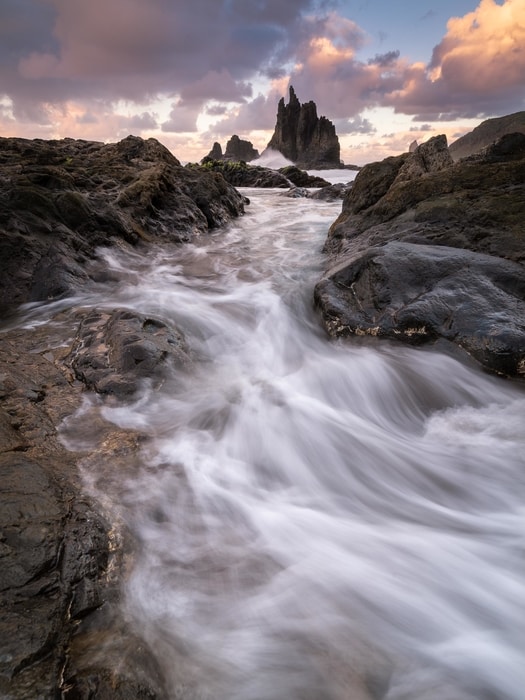
Day 4 – Efrén Yanes
After that, make the 35-minute drive to Benijo Beach , one of the wildest, virgin beaches on the island. Be very careful if you go swimming, as there are strong currents and waves. At night, I recommend returning to your Santa Cruz de Tenerife hotel.
My tips for Tenerife day 5 include getting to know Puerto de la Cruz and La Orotava, two important towns in the northern part of the island.
There are many interesting places in Puerto de la Cruz , although you can’t miss Plaza del Charco, Plaza Europa, the port, and the Church of Nuestra Señora de la Peña de Francia.
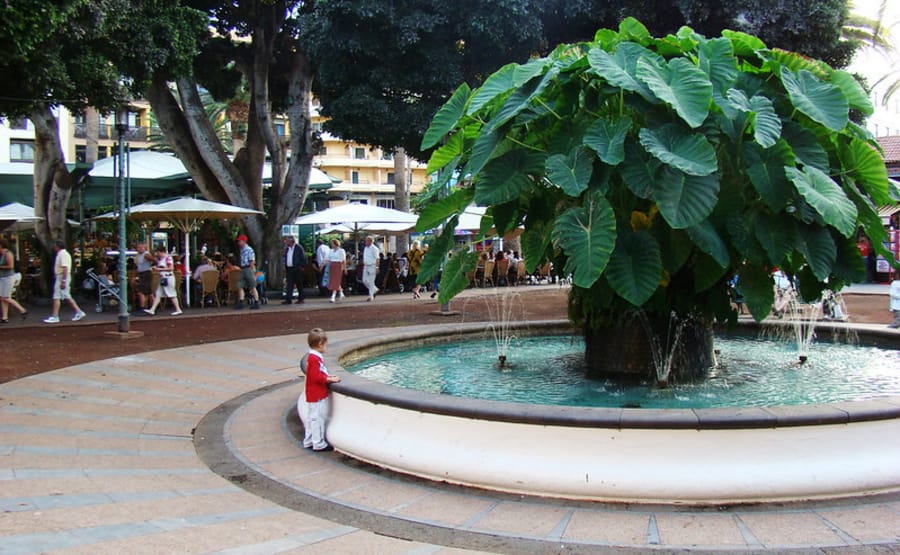
In La Orotava , you’ll find all kinds of restaurants and beautiful attractions like Casa de los Balcones, Plaza de la Constitución, and the Church of Our Lady of the Conception.
After visiting La Orotava, head to Icod de los Vinos, where I recommend spending the night. There are some small, intimate hotels here, like the Hotel Emblemático San Agustín or the Casa Rural Montiel .
If you’ve spent the night in Icod de los Vinos , you can start your day exploring its lovely town center. You can’t miss the Cueva del Viento, a volcanic cave that formed over 27,000 years ago after the Pico Viejo eruption. The Drago Milenario, an over 800-year-old dragon tree, is another must-see.
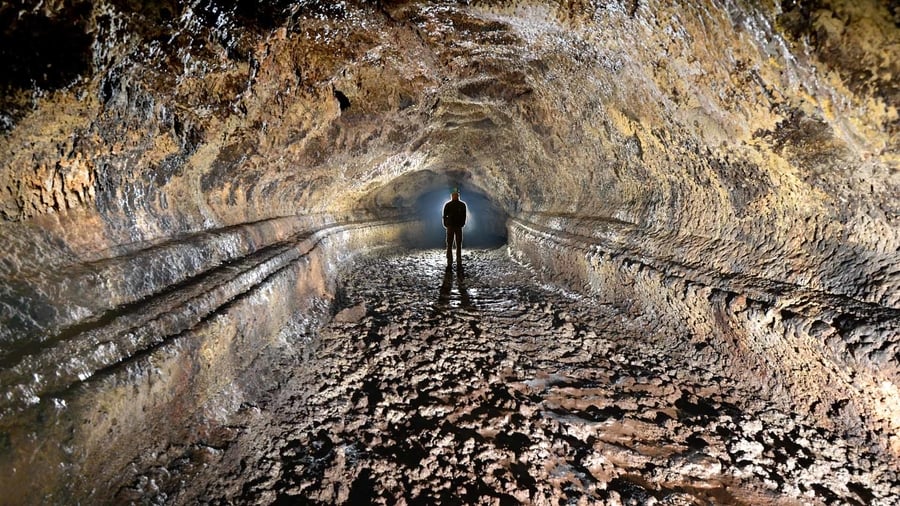
Grab some lunch in Icod de los Vinos, then head to Garachico , which is just 15 minutes away and offers awesome sites like El Caletón , one of the best natural pools in Tenerife . If you have the time, visit the Punta de Teno Lighthouse in Teno Rural Park , where you can witness a magnificent sunset. Otherwise, go directly to Masca and rest up for the final day of your Tenerife holiday . We stayed at Sweet Home Masca .
On the last day of your trip to Tenerife , get to know Masca, perhaps by hiking the Masca Gorge . Keep in mind that this activity takes up the whole day, so you may prefer to visit the town of Masca and Los Gigantes. Here, you can marvel at the impressive cliffs and take one of the best whale and dolphin tours in Tenerife , like this one .
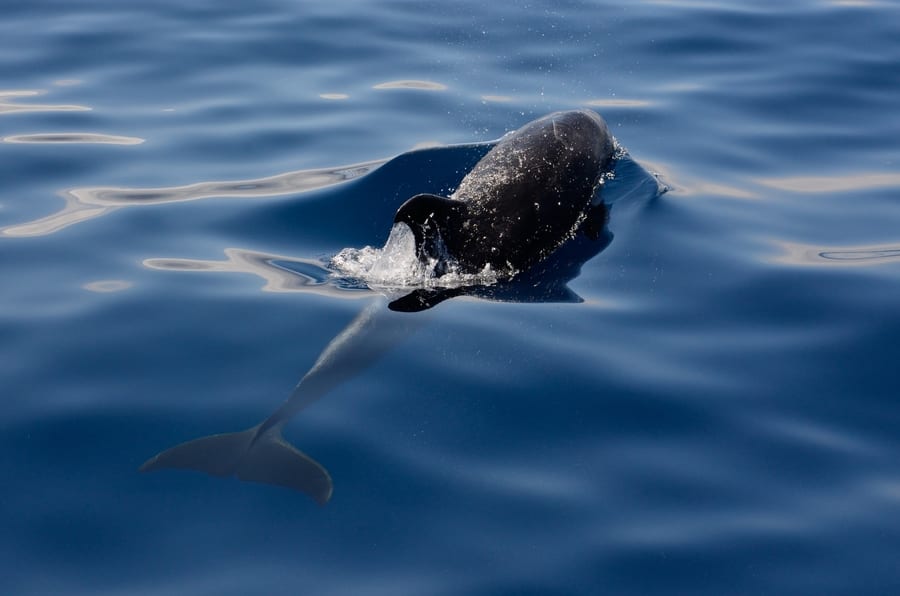
Then, take advantage of your last afternoon in Tenerife to explore Playa de Las Américas and its vibrant atmosphere. You’ll find shops, restaurants, clubs, and resorts here, like the Sir Anthony hotel, one of the most luxurious hotels in Tenerife . Some other great options include the Olé Tropical Tenerife , an all-inclusive hotel in Tenerife South ; and Catalonia Oro Negro , one of the best cheap hotels in Tenerife .
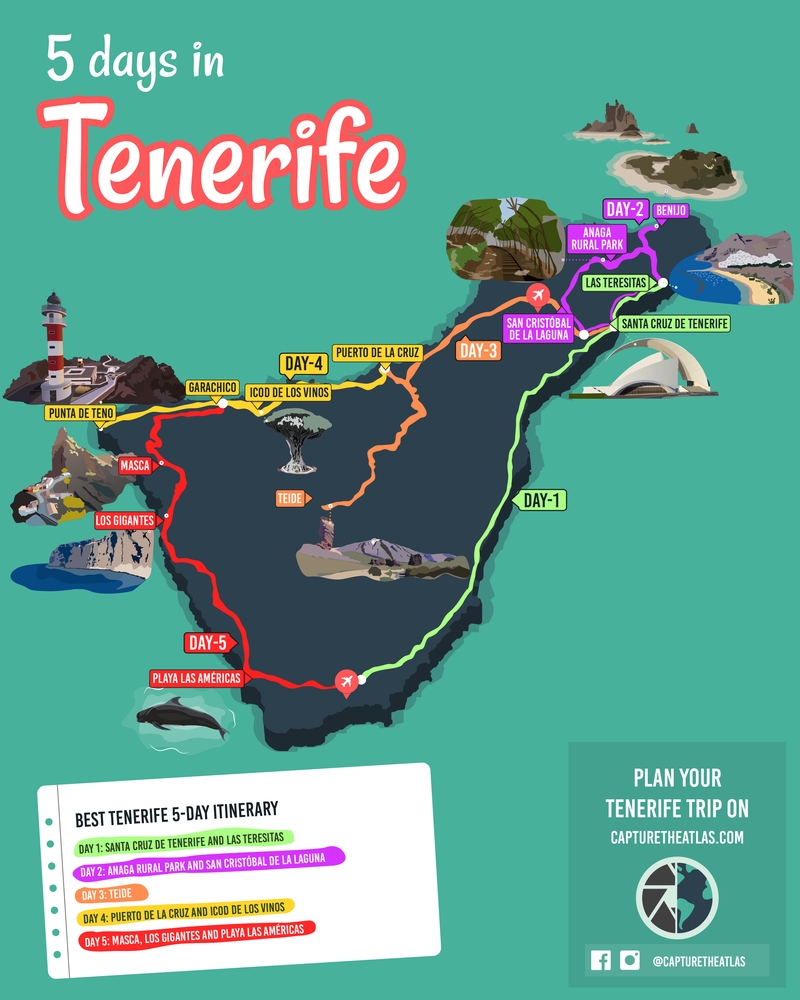
With a 5-day holiday in Tenerife , you can see even more. Start in the capital city of Santa Cruz de Tenerife to visit points of interest like the Castle of San Cristóbal, Our Lady of Africa Market, and Plaza de España. You can also stop by Las Teresitas Beach, one of the best beaches in Tenerife that’s just 15 minutes from the city.
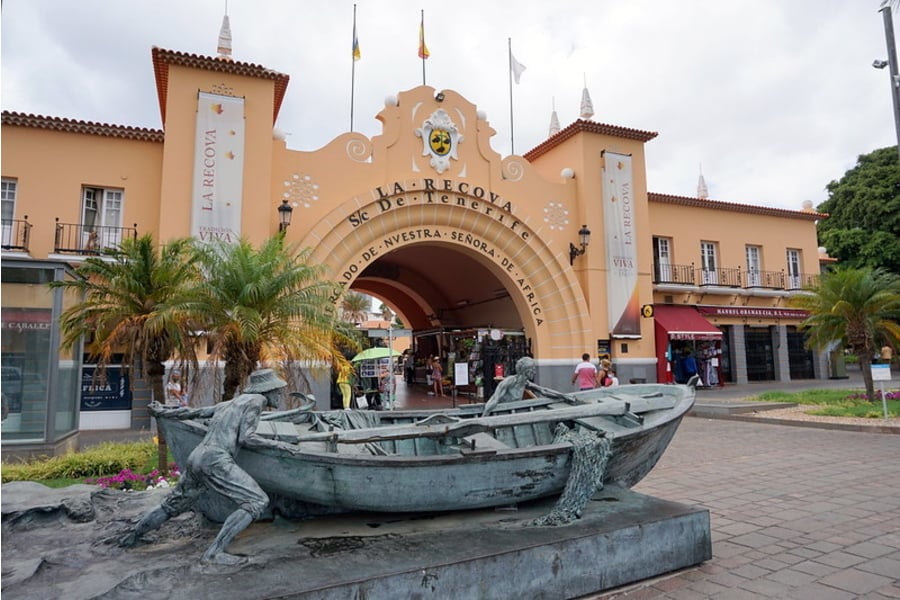
To make the most of your time in the capital, I recommend spending the night here. The Iberostar Heritage Grand Mencey is one of the best 5-star hotels in Tenerife , but we enjoyed staying at the Silken Atlántida Santa Cruz . And if you’re on a budget, the Hotel Príncipe Paz is a cheap hotel in Santa Cruz de Tenerife.
During your second day of traveling in Tenerife , you can visit San Cristóbal de La Laguna. Here, you can’t miss the top attractions in La Laguna , like the Plaza del Adelantado, the convent of Santa Catalina de Siena, the Palacio de Nava, and the Casa de la Alhóndiga.

You can also spend the day walking through the beautiful laurel forests of Anaga Rural Park . If you have time, check out Benijo Beach, a gorgeous wild beach that’s just a 30-minute drive from Anaga. To end the night, get some rest at the same hotel you stayed at in Santa Cruz de Tenerife.
I recommend using your third day in Tenerife to explore Mount Teide, the island’s crown jewel. There are many ways to climb Mount Teide , but most tourists in Tenerife ride the cable car to La Rambleta. From here, it’s a short walk to the summit, but you must request a permit in advance. If you don’t have the permit, you can still ride the cable car to La Rambleta, but you’ll only have access to the Mirador de la Fortaleza and the Mirador del Pico Viejo viewpoints.
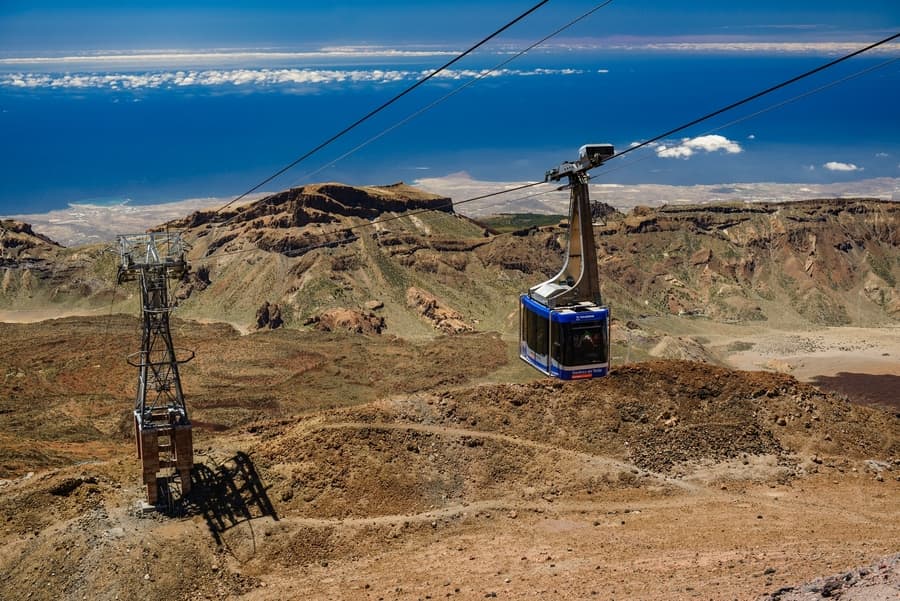
After visiting Mount Teide, you can travel to Puerto de la Cruz, where I recommend spending the night. There are beautiful hotels in Puerto de la Cruz , such as the Hotel Best Semiramis and the Hotel Las Águilas , which is where we stayed. Alternatively, the Hotel Puerto Palace is one of the best cheap hotels in Tenerife .
If you spent the night in Puerto de la Cruz , you can start day 4 by exploring its main attractions, such as Plaza del Charco and the Church of Nuestra Señora de la Peña de Francia.
Later, consider visiting La Orotava , which is just a 15-minute drive away. Take a walk among the various tourist sites like the Casa de los Balcones, Plaza de la Constitución, or the Gardens of the Marquesado de la Quinta Roja. I suggest making your visit here quick since you’ll also want to stop by Icod de los Vinos , home to the famous Drago Milenario, a must-see during your trip to Tenerife .

Depending on how much time you have, you can go to Garachico and enjoy a swim in El Caletón, or check out the Punta de Teno Lighthouse in Teno Rural Park , which boasts the most beautiful sunsets on the island. To wind down, spend the night at the Hotel LIVVO La Quinta Roja in Garachico.
For the last day of your vacation in Tenerife , I recommend visiting the Punta de Teno Lighthouse if you weren’t able to go the day before. Then, travel to Masca, where you can hike one of the best trails in Tenerife , the Barranco de Masca . Of course, this will take the whole day, so if you want another option, just visit the Caserío de Masca, followed by the Los Gigantes Cliffs. This is where some of the best whale and dolphin-watching tours in Tenerife depart, like this one that we took.

If your plane home departs this same day, head straight to the airport after your tour. However, if you have time, check out Playa de Las Américas , a lively area with all kinds of entertainment. It’s a good place to spend the night, either at the Sir Anthony hotel, one of the most luxurious hotels in Tenerife ; the Olé Tropical Tenerife , one of the top all-inclusive hotels in Tenerife South ; or Catalonia Oro Negro , one of the cheapest hotels in Tenerife .
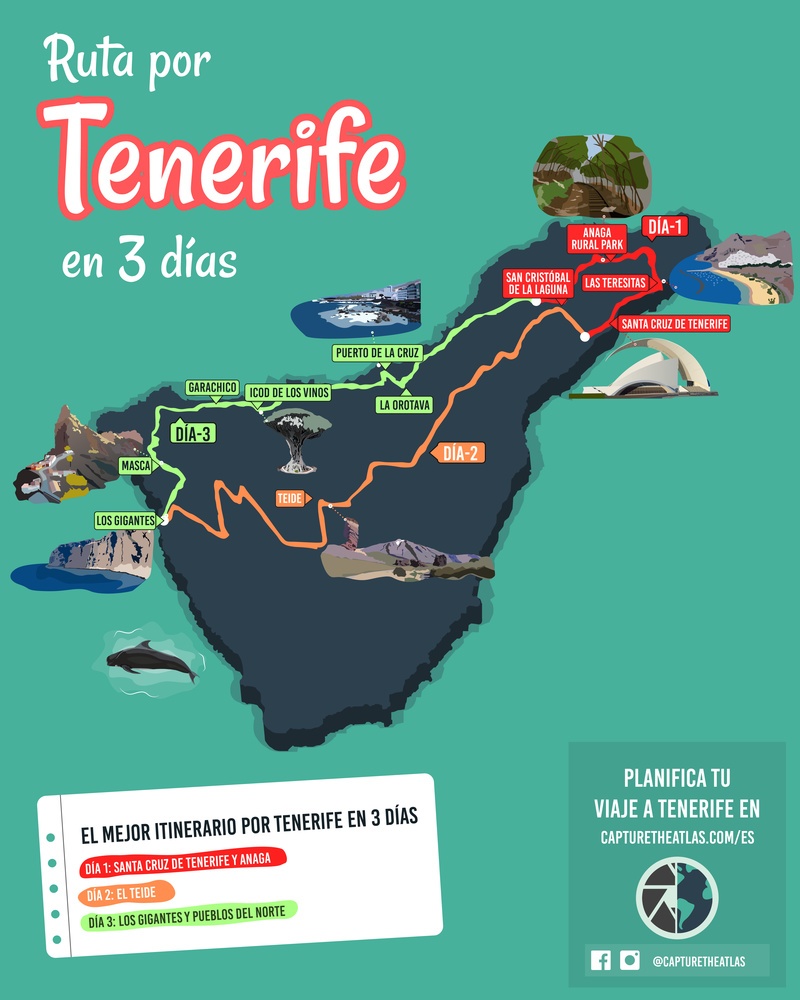
You can start the first day of your 3-day Tenerife trip by getting to know San Cristóbal de la Laguna , a UNESCO World Heritage Site. Later, take a tour through Anaga Rural Park , a declared Biosphere Reserve not far from town.
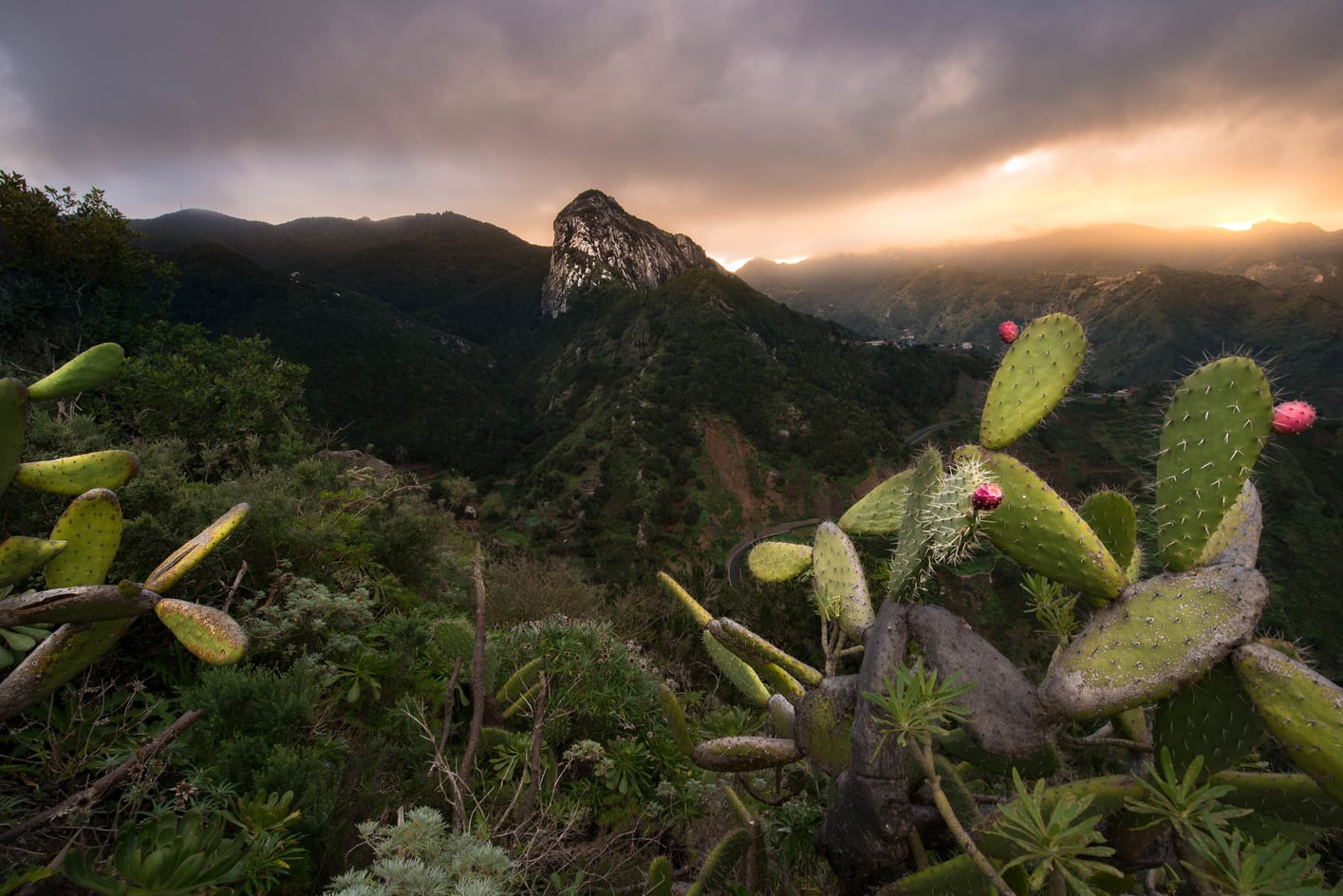
Ideally, you’ll end your day in Santa Cruz de Tenerife , the island’s capital city. If you have time after visiting Anaga Rural Park, I recommend stopping by Las Teresitas Beach, one of Tenerife’s best beaches .
I suggest spending the night in a hotel in Santa Cruz de Tenerife . For example, the Iberostar Heritage Grand Mencey , is considered one of the best 5-star hotels in Tenerife , while the Silken Atlántida Santa Cruz is one of the few spa hotels in Tenerife . If you’re on a budget, the Hotel Príncipe Paz is a wonderful cheap hotel in northern Tenerife.
For day two of your holiday in Tenerife , spend some time exploring Mount Teide, a must-see on the island. There are different ways to climb Mount Teide , although the most common way is to ride the cable car to La Rambleta. From there, you can reach the summit on foot as long as you’ve requested this permit in advance. Also, from La Rambleta, you can access the Mirador de la Fortaleza and the Mirador del Pico Viejo, two beautiful viewpoints that don’t require a permit.

Then, spend the night in one of the top-rated hotels in Los Gigantes , like the Royal Sun Resort , one of the most romantic hotels in Tenerife . Alternatively, the Ona el Marqués is a great apartment in Los Gigantes , while the Aparthotel Los Dragos del Sur is a good option if you’re looking for a cheap hotel in Tenerife South.
For the last day of your Tenerife vacation , take the opportunity to visit some of the most iconic attractions in the south. I recommend starting with a whale and dolphin-watching tour in Tenerife , such as this one . You can also take advantage of the morning hours to visit the imposing Los Gigantes Cliffs by taking one of the excursions that departs from the port.

Afterward, I suggest going to the town of Masca, a declared Asset of Cultural Interest that’s famous for being the starting point of the Masca Gorge route. Next, go to Garachico and take a swim in El Caletón, or visit Icod de los Vinos , home to the Drago Milenario. Another interesting town is La Orotava , a village full of tradition and colonial history.
To end the day, you can stop by Puerto de la Cruz , which is considered the second most important city after Santa Cruz de Tenerife. I recommend spending the night at the H10 Tenerife Playa , one of the best hotels in Puerto de la Cruz . It’s also worth checking out Hotel Marte , one of Tenerife’s best hotels , or the FERGUS Puerto de la Cruz , an all-inclusive hotel in Tenerife .
4. How to have a cheap holiday in Tenerife
Don’t worry if you’re on a tight budget; you can still take a cheap trip to Tenerife while enjoying its most popular sites and attractions.
To plan your cheap holiday to Tenerife , the first thing you should do is decide when to travel. Avoid peak tourist season (summer and winter) since prices will be the highest. I recommend planning your trip for spring or autumn so you can save more money on hotels, food, and activities. Besides, this time of year has fewer crowds, so you’ll be able to enjoy the beach and other outdoor attractions in addition to pleasant temperatures.
I also suggest looking for the best deals for Tenerife , starting from your home country. You can find cheap flights to Tenerife on Kiwi and Skyscanner , which search hundreds of airlines to get you the lowest prices. They’ll even tell you the cheapest dates to fly.
5% OFF your travel insurance
One of the biggest expenses for your trip to Tenerife will be accommodation, so consider staying in one of the best cheap hotels in Tenerife to cut costs. After all, if you’re not going to use a hotel’s gym, spa, or other facilities, it’s not worth paying extra for a room at one of those resorts.
Finally, if you plan to rent a car in Tenerife , make sure you choose the right rental car company. I recommend arranging your rental ahead of time to save money and time. We always use DiscoverCars to find cheap rental vehicles since the website scours all the different companies in the area to find the best deals. Hold off on getting extras like insurance since the rates are usually higher online. Instead, wait until you pick up the vehicle in person, so you get the cheapest price.
Best Tenerife holiday packages
Another way to save money on your Tenerife holiday is by booking a vacation package that includes your activities, accommodation, and transportation. Of course, you’ll still have to book and pay for your flight to the island. Here are some of the best deals on holiday packages in Tenerife :
- This 6-day hiking tour includes an expert guide who will take you around Puerto de la Cruz, through Anaga Rural Park and Teno Rural Park, to La Orotava and Teide National Park, and the beaches of Costa Adeje.
- This self-guided 8-day tour is perfect for experienced hikers who want to explore on their own. It goes to Puerto de la Cruz, La Orotava, San Cristóbal de La Laguna, Icod de los Vinos, Santiago del Teide, Masca, and Candelaria.
- This is another 8-day holiday package , but it’s fully guided. You’ll make stops at Teide National Park, the Teno Mountains, the laurel forests of Anaga, Santiago del Teide, and Masca. You’ll also enjoy scenic hikes through Canarian pine forests and volcanic routes. Tour guides and flights are included.
Each of these tour packages includes your accommodation, meals, and transportation, so if you’re looking for the best deals on your Tenerife trip , be sure to book one of these in advance .
5. Where to stay while traveling in Tenerife
There are many places to stay in Tenerife , so you won’t have any trouble finding a hotel that suits your budget and needs. Below, you’ll find some of the top-rated hotels on Tenerife :
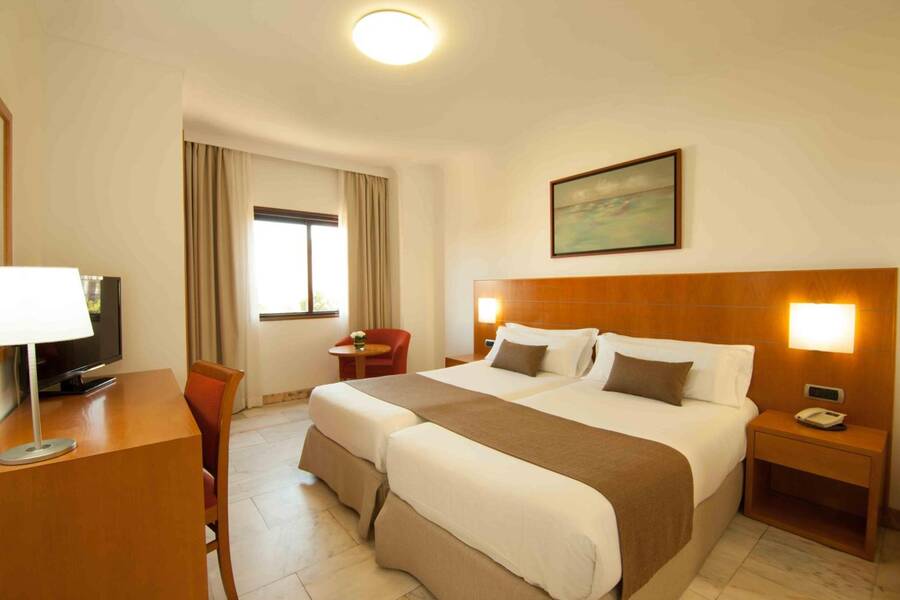
1. Hotel Príncipe Paz
The best hotel in Santa Cruz de Tenerife
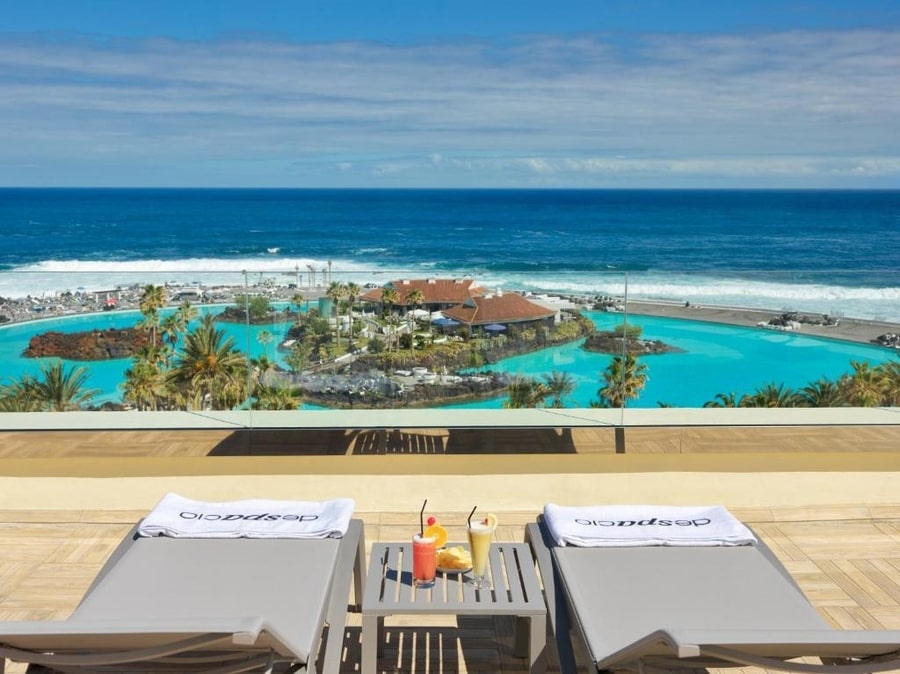
2. H10 Tenerife Playa
The best hotel in Puerto de la Cruz
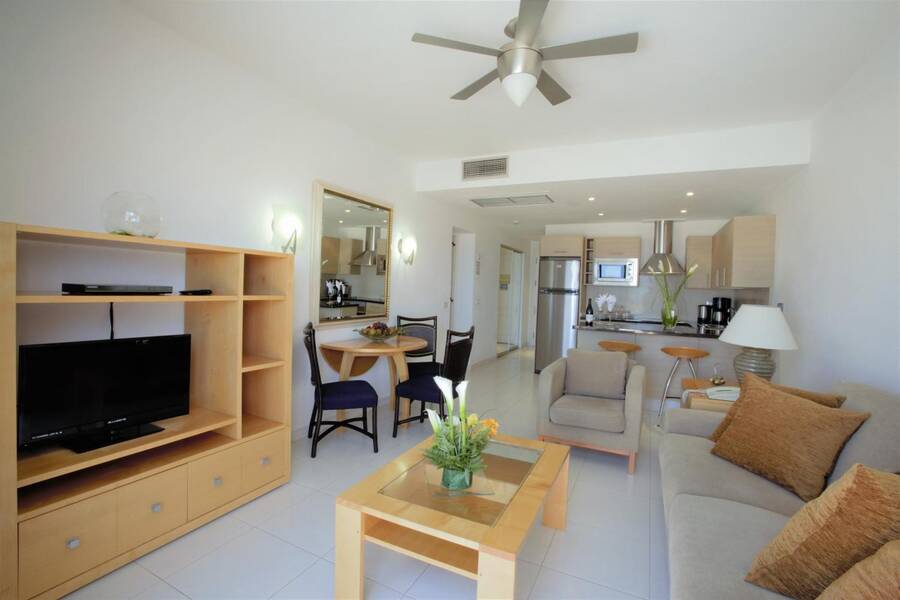
3. Hollywood Mirage
The best hotel in Los Cristianos

4. Iberostar Selection Sábila
The best hotel in Costa Adeje
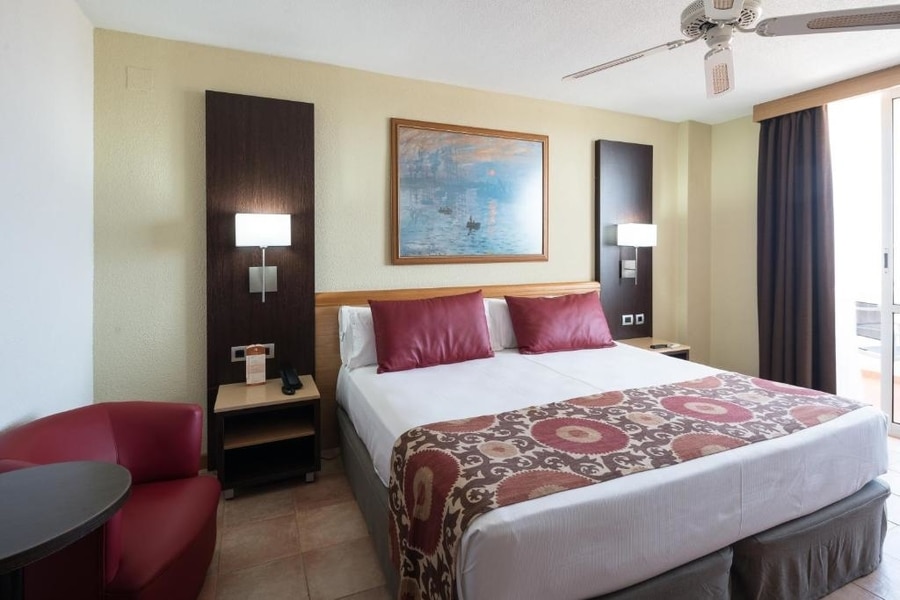
5. Catalonia Oro Negro
The best hotel in Playa de Las Américas
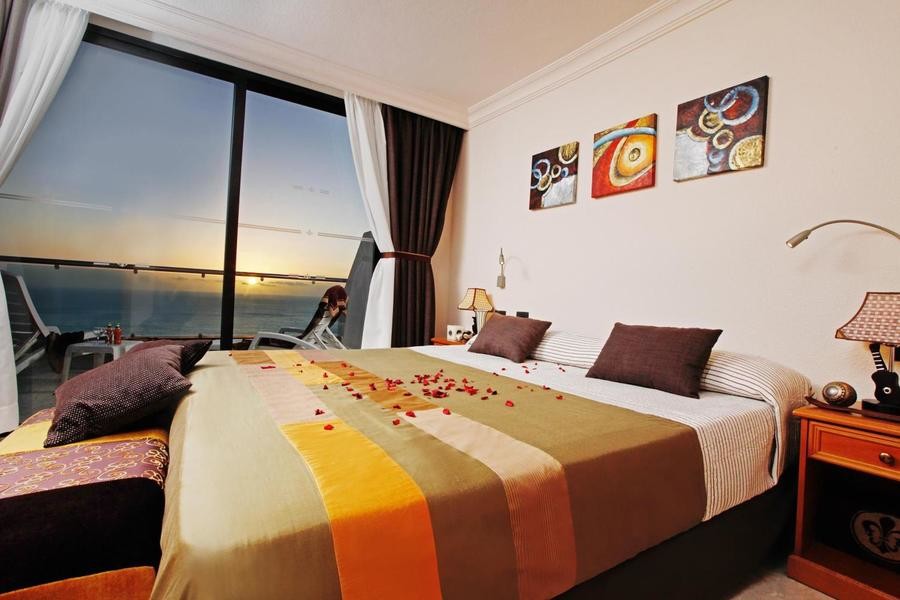
6. Royal Sun Resort
The best hotel in Los Gigantes
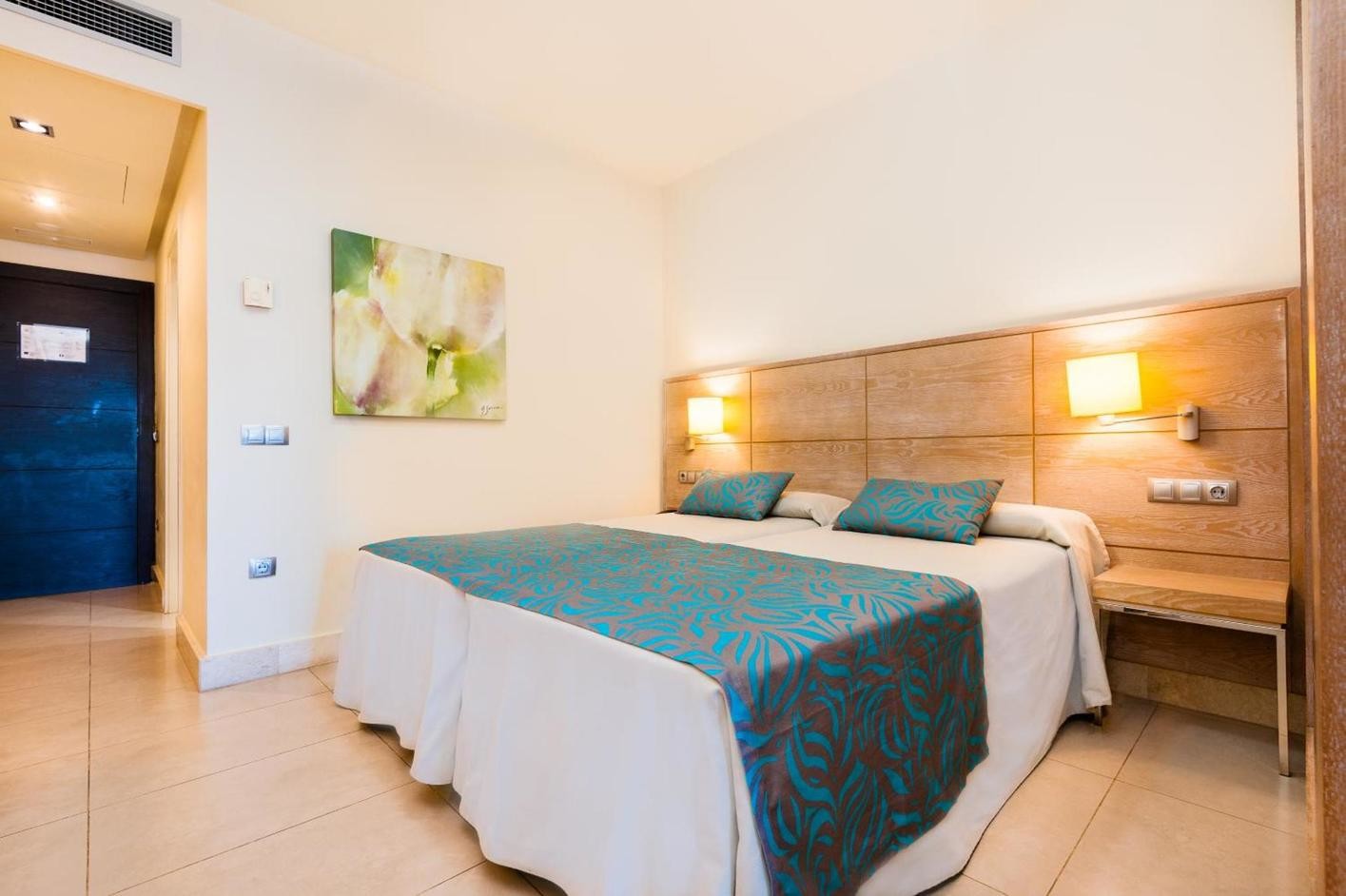
7. Kn Hotel Arenas del Mar
The best hotel in El Médano
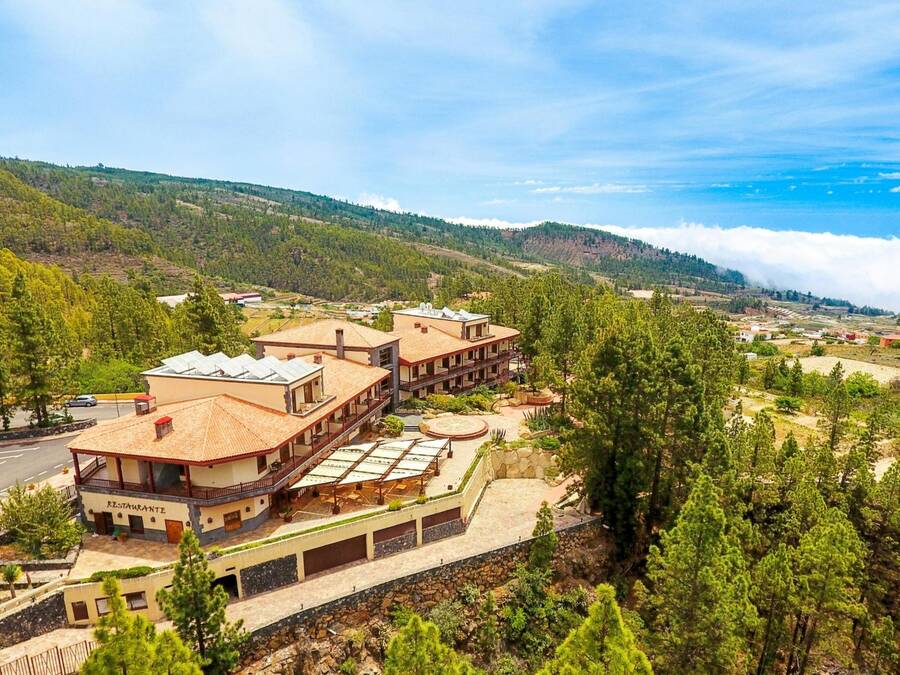
8. Hotel Spa Villalba
The best hotel in Vilaflor
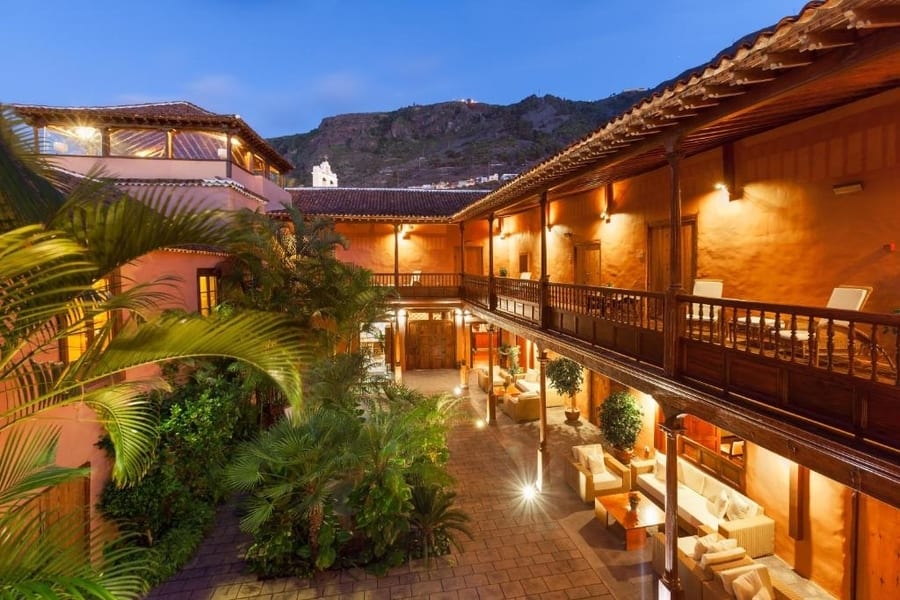
9. Hotel LIVVO La Quinta Roja
The best hotel in Garachico

10. Parador de Las Cañadas del Teide
The best hotel for visiting Mount Teide
Depending on your preferences, one type of accommodation may suit you better. The best thing about traveling to Tenerife is that it offers a wide variety of hotels, villas, apartments, and more, so you’ll have no trouble finding a place to stay:
- Apartments in Tenerife
- All-inclusive hotels in Tenerife
- 5-Star hotels in Tenerife
- Villas in Tenerife
- Luxury hotels in Tenerife
- Camping in Tenerife
You can also choose your accommodation based on where you’ll be traveling in Tenerife . For example, if you plan on exploring different hiking trails and learning about Canarian history and culture, you’ll want to stay in the north. On the other hand, if you’d like to enjoy the beach, practice watersports, or go shopping or partying in town, stay in the south.
Best areas to stay in Tenerife North
Hotels in santa cruz de tenerife, hotels in puerto de la cruz, hotels in garachico, hotels in costa adeje, best areas to stay in tenerife south, hotels in las américas, hotels in los cristianos, hotels in el médano, hotels in los gigantes.
- Rental cars
- Campervan rentals
- Public transportation
If you’re not sure how to get around while traveling in Tenerife , be aware that you have several options. The most convenient and practical way to visit different parts of the island is by renting a vehicle through DiscoverCars . We always go through this website because it has the cheapest prices, but if you don’t want to drive, there are other ways to get around .
Rental cars in Tenerife
Again, the most comfortable and practical way to visit Tenerife ’s different attractions is by renting a car in Tenerife . I recommend going through DiscoverCars , a platform that looks through all the available rental companies in the region to find the best deals. You can reserve your vehicle before leaving for your trip so it’s ready for pick-up at the airport when you land in Tenerife.

If you’re using DiscoverCars, I recommend declining the extras (with the exception of insurance) and instead purchasing them when you pick up the vehicle in person. This way, it’ll be a lot cheaper.
Overall, if you have no problem driving around to explore Tenerife , this is the best option. The roads on the island are in good condition and well-marked, with the only exception being the road to Teno Rural Park . This road has limited access to protect the surrounding environment, although it’s not usually closed to traffic. In more urban areas, there is more traffic, but travel times are quite good .
Campervan rentals in Tenerife
If you prefer having your mode of transportation combined with your accommodation, you can rent a campervan in Tenerife . This is the best way to enjoy your trip to Tenerife in total freedom, as you can drive around and stop at your leisure. We like renting our campervans through Motorhome Republic or Yescapa , as they offer a wide range of vehicles.
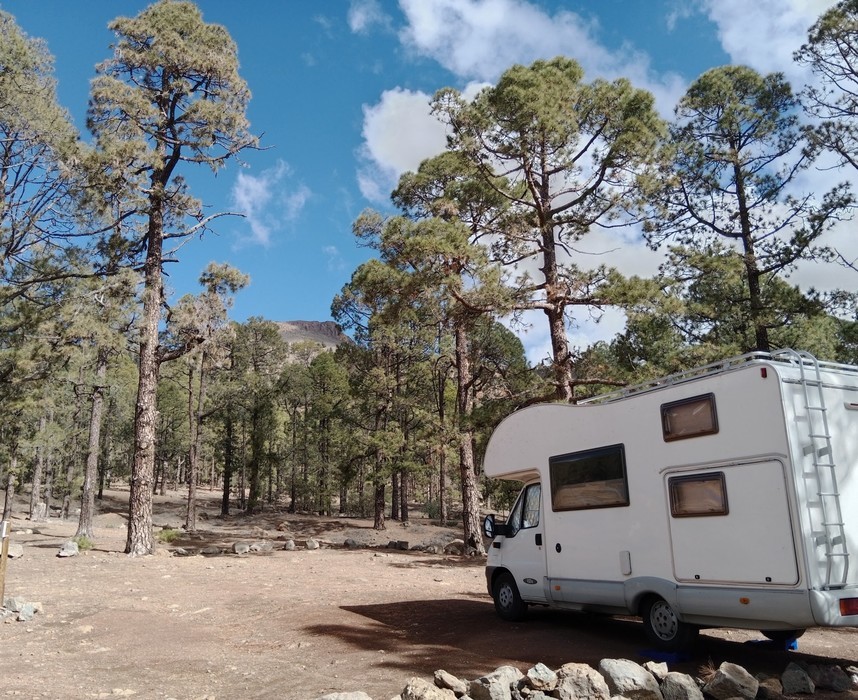
Keep in mind that free camping in Tenerife is not permitted, but there are authorized areas where you can camp in Tenerife . While you can park your campervan in urban and non-urban areas, you cannot take up more space than what the closed RV or campervan occupies .
Tours in Tenerife, the best way to get around Tenerife without a car
Don’t want to drive? No problem. You can tour Tenerife in its entirety by booking some of the best excursions in Tenerife . Even if you don’t have your own vehicle on the island, you can still see its most popular attractions and beautiful landscapes, as there are tours that depart from the main towns in Tenerife North and South. If you want to make things super easy, I recommend staying at the H10 Tenerife Playa , where you’ll be close to the departure point for many excursions in Puerto de la Cruz .

If you’re short on time but still want to see all the main points of interest, you can book this tour , which starts in the south and travel around Tenerife , passing through Candelaria, San Cristóbal de la Laguna, La Orotava, Garachico, Masca, and more. There is also this option if you prefer starting in the north. And, of course, a tour of Mount Teide is a must-do while you’re visiting Tenerife !
Make sure that you book your spot for these tours in advance, especially if you’re traveling to Tenerife during peak season.
One of the main advantages of booking an excursion is that it includes your tour guide, transportation, and admission fees, if applicable. For those who prefer touring Tenerife ’s attractions on their own, there is also the option to book a private transfer .
Public transportation, a cheap way to get around Tenerife
To plan a cheap trip to Tenerife , you may also consider using the island’s public transportation system, which connects all the main towns and cities.

The Canarian buses, or guaguas , are managed by TITSA and make up over 200 bus lines around the island. The buses typically run on schedule and have affordable fares, so you can reach practically any point on the island for very little money.
The only thing to keep in mind is that the buses are designed for locals, not tourists on Tenerife , so it may take considerably longer for you to get to your destination. In general, it’s a slower way to get around, and there are some remote places that you won’t be able to reach by bus .
7. Where to eat while traveling in Tenerife
This Tenerife travel guide wouldn’t be complete without an overview of the island’s best restaurants. I recommend avoiding the more touristy places, as they tend to have higher prices and lower-quality food. Rather, I suggest visiting a guachinche , where you can taste some authentic Canarian cuisine .
One of our favorite guachinches is Casa Edu in Los Gigantes, which serves a wide variety of dishes. I highly recommend ordering the papas arrugadas (wrinkled potatoes), chicken soup, and sirloin steak, but if you can’t decide, ask for a sampler plate so you can try some different dishes.
There are other delicious restaurants in Tenerife , including Etereo by Pedro Nel in Santa Cruz de Tenerife and Restaurante Familiar in El Médano. While traveling in Tenerife , you must also go to Casa Mediterránea , one of the best restaurants in Puerto de la Cruz .
Best restaurants in Tenerife
Best restaurants in puerto de la cruz, 8. travel budget for a tenerife holiday.
Calculating the price for a holiday in Tenerife can be a bit complicated since it depends on many factors, such as the type of accommodation you choose, where you eat, what activities you do, and how you get around the island.
You can get a better idea of the cost to visit Tenerife in this price breakdown:
You will find many places to stay in Tenerife at a wide range of price points, but to give you an idea, this is what a double room in Tenerife would cost:
- Hotel Taburiente S.C. Tenerife , in Santa Cruz de Tenerife: From €80/night
- Sol Arona Tenerife , in Los Cristianos: From €80/night
- Los Amigos Hostel Tenerife , in El Médano: From €60/night
For more options, check out our guide on the best cheap hotels in Tenerife .
- H10 Tenerife Playa , in Puerto de la Cruz: From €90/night
- Royal Sun Resort , in Los Gigantes: From €100/night
- Dreams Jardín Tropical Resort & Spa , in Costa Adeje: From €150/night
You can look at our article on the best hotels in Tenerife for more options.
- Hotel Botánico y Oriental Spa Garden , in Puerto de la Cruz: From €210/night
- Gran Meliá Palacio de Isora Resort & Spa , in Guía de Isora: From €215/night
- Hotel Sir Anthony , in Playa de Las Américas: From €320/night
For more information and other accommodation options, read our guide to luxury hotels in Tenerife .
Another option, if you want to be surrounded by the great outdoors, is to stay at one of the campsites in Tenerife . You can stay in any of the designated camping areas free of charge by requesting a permit on this website , or you can book a spot at a paid campground from €20/night.
During your vacation in Tenerife, you won’t have any problem finding places to eat. Some restaurants specialize in typical Canarian food or tapas, while others serve grilled meats, the catch of the day, and even vegetarian or vegan dishes. Best of all, many of the top restaurants in Tenerife offer amazing food at affordable prices:
- Breakfast : €3 – €10/person
- Lunch : €10 – €30/person
- Dinner : €10 – €30/person
- Total : €23 – €70/person per day
You can also stay at an all-inclusive hotel in Tenerife and enjoy unlimited food and drinks for a flat, fixed rate.
There are so many things to do in Tenerife , and some of them are free. Depending on what you want to see, you’ll spend more or less of your budget on attractions. To give you a better idea, here are the ticket prices for some of the most popular tourist attractions in Tenerife :
- Museum of Nature and Archaeology , in Santa Cruz de Tenerife (free)
- Municipal Museum of Fine Arts , in Santa Cruz de Tenerife (free)
- Casa del Carnaval , in Santa Cruz de Tenerife (free)
- Palmetum , in Santa Cruz de Tenerife (€6)
- Cueva del Viento , in Icod de los Vinos (€20)
- Drago Milenario , in Icod de los Vinos (€5)
- Teide cable car (from €40)
- Castle of San Felipe , in Puerto de la Cruz (free)
- Botanical Garden , in Puerto de la Cruz (€3)
- Anaga Rural Park (free)
- Masca Gorge (free)
- Teno Rural Park (free)
- El Caletón , in Garachico (free)
- Casa de los Balcones , in La Orotava (€6)
- Barranco del Infierno (€11)
- Pyramids of Güímar (from €12.50)
- Siam Park (€42)
- Cueva de Hermano Pedro , in El Médano (free)
- Lunar landscape of Vilaflor de Chasna (free)
- Basilica of Our Lady of Candelaria , in Candelaria (free)
These are the best excursions in Tenerife , so be sure to read our guide for more information about each one:
- Excursion to Teide with cable car ticket and permit to access the summit (€128)
- Whale and dolphin-watching tour (€27)
- Hiking through Anaga Rural Park (€17)
- Excursion to the Masca Gorge (€35)
- Boat trip through Punta de Teno (€30)
- Kayak tour through Punta de Teno (€30)
- Guided hike through the Barranco del Infierno (€98)
- Snorkeling with turtles (€38)
- Stargazing at Teide National Park (€55)
- Tour of the island from the north (€49.50)
- Tour of the island from the south (€49.50)
- Day trip to La Gomera (€95)
There are all kinds of ways to travel around Tenerife , but you’ll enjoy the most freedom and convenience if you rent a car in Tenerife . Rental vehicles start at around €35 per day through DiscoverCars , although the price may vary depending on the model, the duration of your trip, and any extras you purchase.
Besides renting a car, there are other ways to get around during your Tenerife trip :
- Public transportation – Tourist card (€10/day)
- Taxi (€3 + €1/mile)
- Private transfer (from €47)
Another option is to rent a campervan in Tenerife , which will allow you to move around the island freely while also having a place to sleep. I recommend these two options:
- Motorhome Republic (from €104/day)
- Yescapa (from €75/day)
Below, you’ll see the average total cost for two adults traveling to Tenerife for 4 days and 3 nights. Keep in mind the total price will vary depending on where you stay, eat, and visit:
- 3 nights at Sol Arona Tenerife : €240
- Food : €50 x 2 people x 4 days = €400
- Tourist attractions (Casa del Carnaval, Palmetum, Cueva del Viento, Drago Milenario, Botanical Garden, Anaga Rural Park, El Caletón, Casa de los Balcones, and Barranco del Infierno): €51 x 2 people = €102
- Excursions (Guided hike to Mount Teide, whale and dolphin-watching tours, and kayaking excursion): €185 x 2 people = €370
- Transportation (Rental car + gas): €200
- Total : €1,312 for a 4-day/3-night trip for 2 people (€656 per person)
Remember, you can make your holiday in Tenerife cheaper by visiting free attractions or staying in budget-friendly hotels. Also, if you have more people joining you for your Tenerife trip , you can share some travel expenses like accommodation and transportation, which can also lower the total price.
Planning a cheap holiday to Tenerife
- Decide when to travel to Tenerife , keeping in mind that prices are usually lower in the spring and autumn. If you travel during these months, you can find cheap flights to Tenerife .
- Only visit the Tenerife attractions and tourist sites you’re interested in . You’ll enjoy your holiday a lot more, and you’ll save money.
- Take advantage of free attractions and tourist sites in Tenerife .
- Save money by booking a room at one of the cheap hotels in Tenerife , and avoid staying in resorts with fancy facilities or services you won’t use.
- Take advantage of these travel discounts to make your trip to Tenerife cheaper .
- Get a no-foreign transaction fee credit card to get the best currency exchange rate and save money on withdrawals at foreign ATMs.
- Just because you’re planning a holiday to Tenerife on a budget , that doesn’t mean you can’t get coverage for unexpected incidents. Get one of the best cheap travel insurance policies to stay protected during your trip.
9. Tips for Tenerife and what to pack
Another thing to consider before traveling to Tenerife is what you should pack. Remember, the holiday weather in Tenerife is quite pleasant year-round, with an average temperature of 77 °F (25 °C) in the summer and 65 °F (18 °C) in the winter. So, you can visit the beaches here any time of year!
That said, there are up to 25 microclimates on the island, which means that depending on which areas you’re going to visit, you may need a certain type of clothing. Keeping this in mind, here is what I recommend bringing along for your Tenerife trip :
- Swimsuit, towel, flip flops, and sunscreen for days at the beach
- Water shoes for visiting the natural pools in Tenerife
- Summer/spring clothing and comfortable walking shoes
- Warm layers and mountain boots for climbing Mount Teide and doing other hikes in Tenerife

Tips for Tenerife and what to pack
Other things you may want to bring along for your Tenerife trip include:
- Your camera and an extra memory card
- Portable battery or power bank (I have this one and it works great)
- Chargers for electronic devices you travel with
- Cash and credit card for the rental car deposit (check out the best credit cards for travel )
Documentation for traveling to Tenerife, Spain
Before traveling to Tenerife , you must make sure you have the necessary documentation.
First, you’ll need the basics, such as a photo ID and your passport. I also recommend checking iVisa to see if you need a certain Visa, like a Schengen Visa , or some other type of documentation. Be aware that in 2025, the visa requirements are changing, and the European Travel Information and Authorization System (ETIAS) will require all travelers to apply for authorization before traveling to Europe or passing through Europe to other destinations. You can check here for more info.
Moreover, if you plan on renting a car in Tenerife , make sure you have a valid driver’s license. It’s also a good idea to keep digital copies of your boarding passes and reservations for tours and hotels on your phone. If you have Heymondo travel insurance, you can even access your policy information on your phone thanks to the company’s 24/7 app.
Travel insurance for Tenerife
Anytime we fly or travel in general, we get travel insurance. No matter how short your trip to Tenerife is, you’ll want to be covered in case anything goes wrong. We’ve been using Heymondo for the past 5 years and consider it to be one of the best travel insurance companies on the market.
We have a complete guide on Heymondo insurance , but I’ll tell you here that it stands out for its great value. In addition to excellent coverage for travel and medical-related expenses, Heymondo pays your medical bills upfront, so you don’t have to pay out of pocket and file a claim. Plus, you’ll have a $0 deductible and access to the 24/7 travel assistance app.
With Heymondo, you can enjoy your holiday in Tenerife worry-free, knowing you’re covered by one of the top-rated insurance companies . Don’t forget to take advantage of our Heymondo discount code to save even more on your policy.
Internet for traveling in Tenerife
To make sure you stay connected and have Internet while traveling through Tenerife, I recommend getting a SIM card for Europe . This way, you can easily look up directions, find reviews for restaurants or Tenerife tourist sites , or book a last-minute accommodation.
We always use the Holafly eSIM , which has unlimited data and great coverage, so you can use it practically anywhere during your Tenerife trip . It’s a digital SIM, so you can buy it before or during your trip. Plus, the eSIM is available for durations of 5, 7, 10, 15, 20, 30, 60, and 90 days, so you can find one that fits your Tenerife holiday .
Getting a travel SIM card will help you avoid roaming fees and a huge phone bill when you return home. Plus, you can save even more by using our Holafly discount code . Of course, you should check your device’s compatibility with the digital SIM here . If it’s not compatible, or you prefer a physical SIM card, I recommend getting one from SimOptions .

5% OFF your international eSIM card
Best credit cards for traveling to Tenerife
If you’re an avid traveler, consider getting a credit card for travel . These cards earn points or miles for things like dining out, shopping for groceries, and booking hotels. Over time, those points add up, and you can redeem them for airline credits toward your dream destination, perhaps a trip to Tenerife !
Take advantage of your everyday purchases by using your travel credit card and enjoy benefits like cash back, airport lounge access, and exclusive offers for choice hotels. There are lots of cards on the market, so I recommend reading through our guide to find the best options for you.
10. Download a Tenerife tourist map
I recommend having our Tenerife tourist maps on hand so you can plan your Tenerife travel itinerary . You’ll be able to easily locate all the attractions you want to see in Tenerife North and South, as well as restaurants and accommodations.
We have several useful maps in our complete guide, including maps of Tenerife’s best beaches and trail maps.
Other tips for a Tenerife holiday
Now that you have all the necessary information for your Tenerife travel adventure, I want to give you some tips that will make your vacation even more enjoyable:
- It’s difficult to see all the tourist attractions in Tenerife, so focus on visiting those that really excite you and pique your interest .
- Take advantage of the places where admission is free to learn more about the history, traditions, and culture of Tenerife .
- Temperatures are pleasant all year round, but the best time to travel to Tenerife is during spring and autumn when the weather is suitable for all activities, and there are fewer crowds.
- Regardless of when you travel to Tenerife , you should bring warm clothing to wear in mountainous areas, where temps are lower .
- Always wear sunscreen, even if it’s winter !
- Plan your trip in advance and book flights, accommodations, rental cars, and activities beforehand. This way, you’ll have more options to choose from, as well as lower prices.
- Tenerife has two airports , but you can get from one end of the island to the other without too much hassle, even without your own car. You can get around by bus (find fares and schedules on the TITSA website).
- Always drink bottled water to avoid stomach problems.
- Tenerife is safe , but you should always be cautious and use common sense. Remember to keep a close eye on your personal belongings and valuables , and don’t leave your bags in the car. We have several friends who had their cars broken into, and they lost all their stuff.
If you follow these tips, I’m sure that planning your trip to Tenerife will be much easier and you’ll be able to enjoy your vacation to the fullest. Taking into account everything mentioned in this guide, you can make the most of your holiday in Tenerife, Spain , and take advantage of all that this island has to offer.
Visit other Canary Islands from Tenerife
If you’re going to be in Tenerife for several days and you want to take advantage of your trip to visit other Canary Islands, I recommend taking a ferry . This is the most practical option, and you can even bring your rental car on board. There are ferries from Tenerife connecting to La Gomera, La Palma, Gran Canaria, El Hierro, Lanzarote, and Fuerteventura. You can also hire a boat in Tenerife with or without a skipper to explore the Canary Islands.

Best things to do in La Gomera
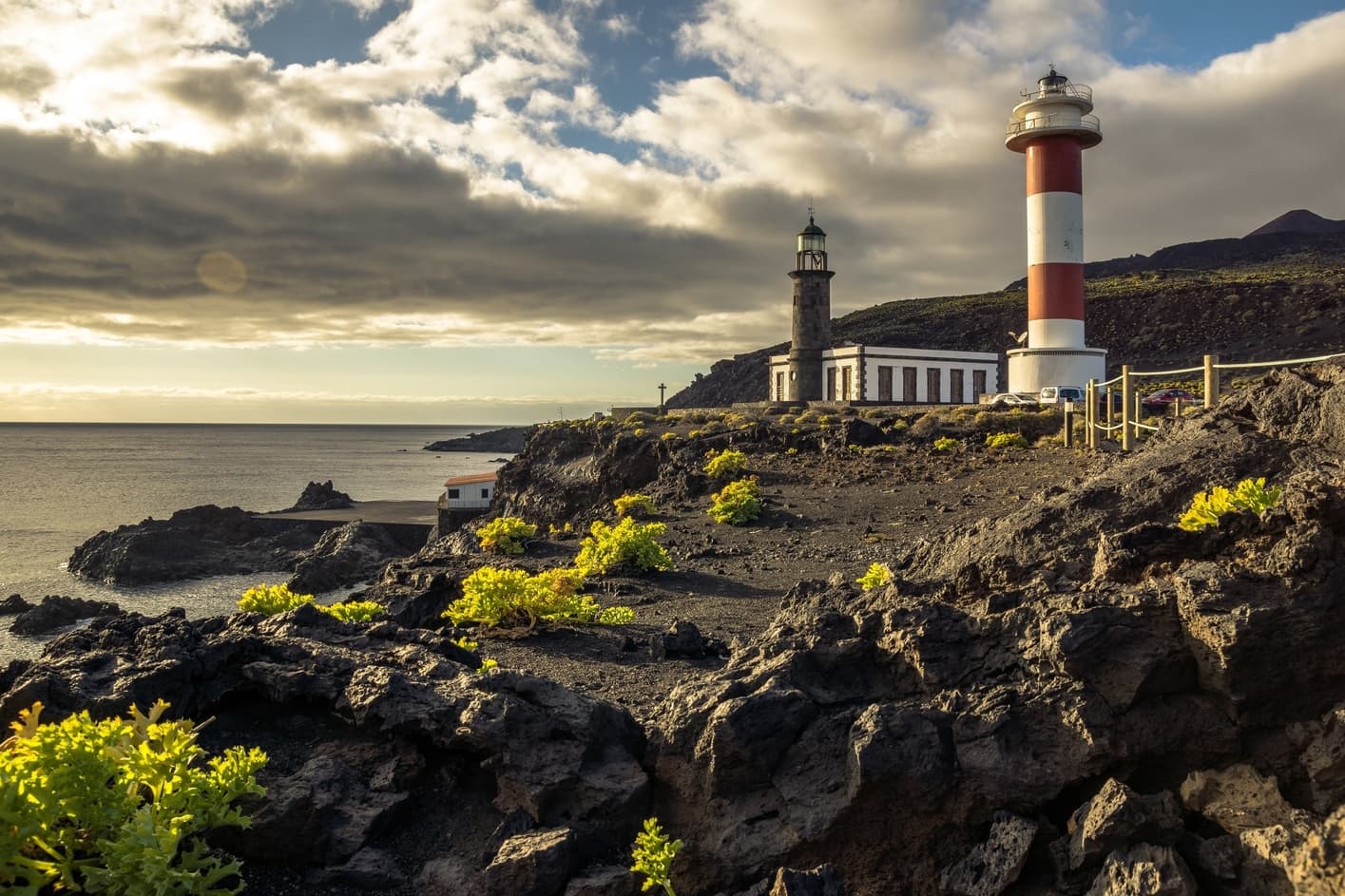
Best things to do in La Palma
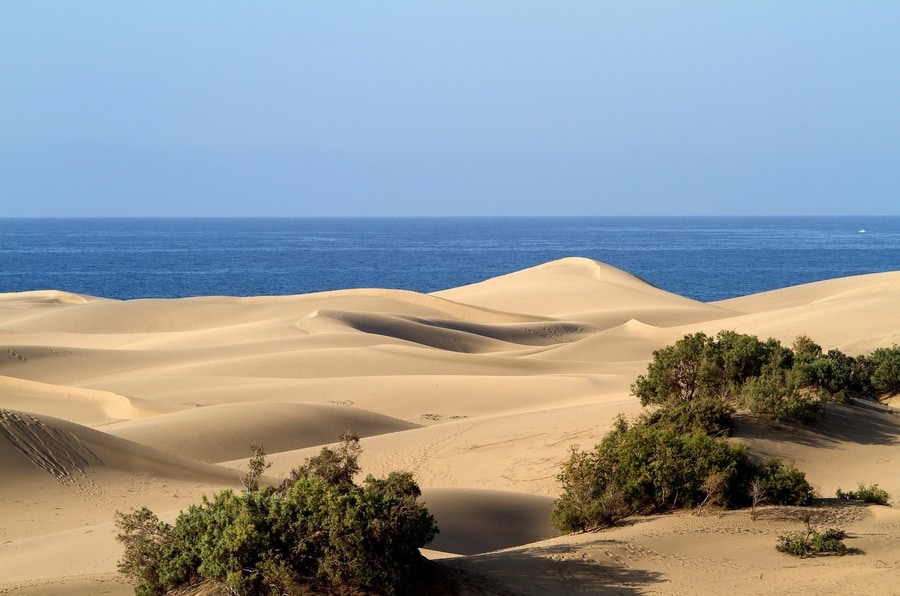
Best things to do in Gran Canaria
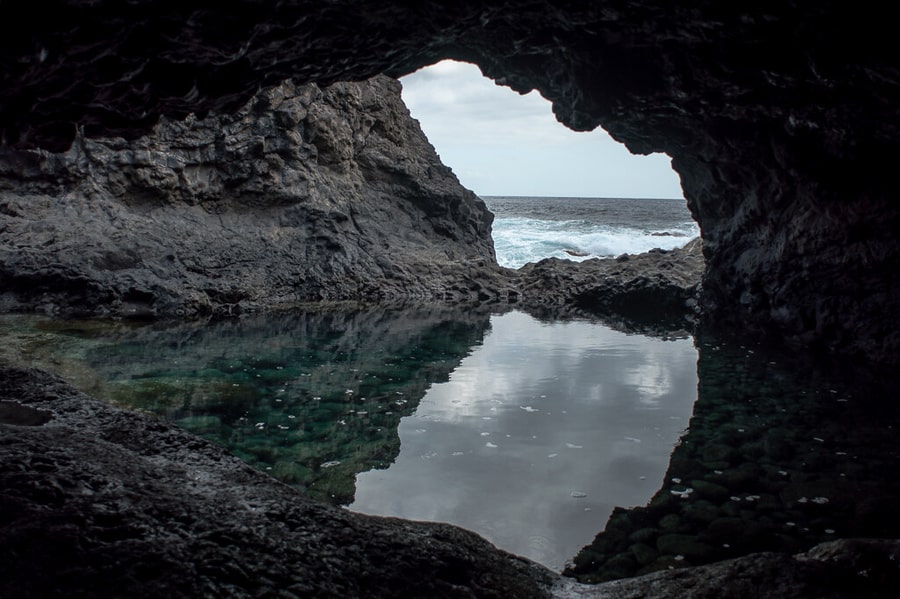
Best things to do in El Hierro
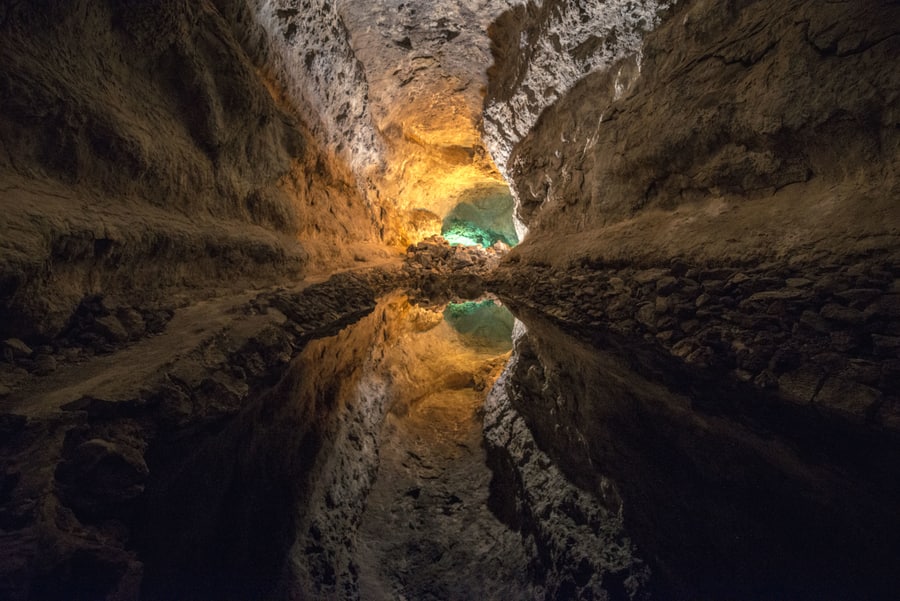
Best things to do in Lanzarote
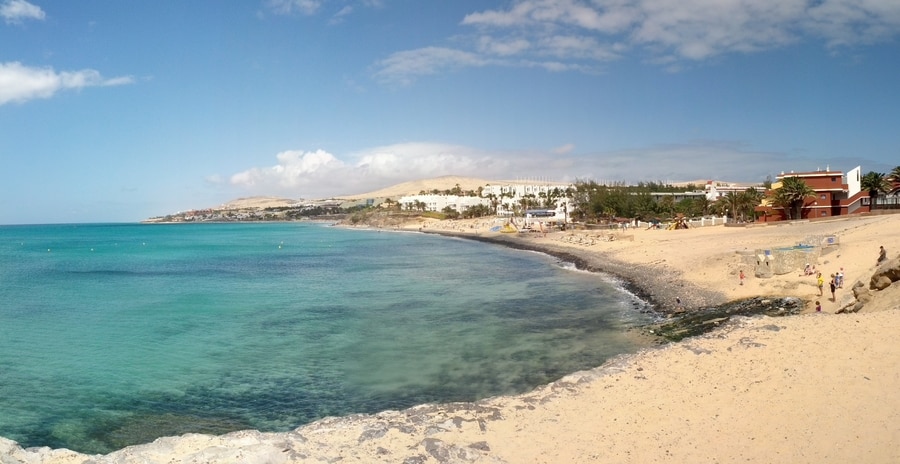
Best things to do in Fuerteventura
Another option is to book an organized tour to travel from Tenerife to other islands. These excursions are convenient because they include your transportation, tour guide, and any admission tickets to the sites. Below, you can find more information about these guided excursions from Tenerife to other Canary Islands:
- La Gomera from Tenerife
- La Palma from Tenerife
FAQs - Traveling to Tenerife
To wrap up, here are the answers to some common questions about traveling to Tenerife :
Where is Tenerife?
The island of Tenerife is in the Atlantic Ocean, off the northwestern coast of Africa.
What is the official language of Tenerife?
The official language of Tenerife is Spanish.
What currency do they use in Tenerife?
Tenerife uses the euro.
Is it better to travel to Tenerife North or Tenerife South?
It depends on what you want to see and do. In Tenerife North, you’ll find charming towns like Santa Cruz de Tenerife , Puerto de la Cruz , La Orotava , and Garachico ; lovely natural sites like Anaga Rural Park ; and popular beaches, such as Las Teresitas. The north is the perfect region to learn about the history and culture of Tenerife .
On the other hand, Tenerife South is full of white sand beaches, ample watersports and activities, and beautiful villages like Vilaflor de Chasna and El Médano . The south also has incredible natural landscapes like the Masca Gorge , plus a vibrant nightlife scene with clubs, restaurants, and entertainment.
So, if you’re looking to explore Tenerife ’s traditions and historical areas, the north may be your best option. If you’d rather spend time on the beach, doing water activities, and partying, the south is a better fit for you.
When is the best time to visit Tenerife?
The best time to travel to Tenerife is in the spring and autumn since the weather will be nice enough for any activity, plus there will be fewer tourists.
What’s the weather like in Tenerife?
You don’t have to worry too much about the weather in Tenerife during your holiday since temperatures are quite stable and mild year-round. The average temp in summer is 77 °F (25 °C), while in winter it’s 65 °F (18 °C).
How easy is it to get around Tenerife?
It’s pretty easy to travel around Tenerife since all the towns are connected by the Canarian buses, or guaguas . You can check the bus lines and schedules on the TITSA website.
The most comfortable and practical way to get around the island is by rental vehicle, which you can find through DiscoverCars . You could also book a private transfer or take some excursions around Tenerife .
Do you need a car to visit Tenerife?
If you want to explore Tenerife in total freedom and reach the most remote places on the island, then you’ll need a rental car. If you plan on staying in town and the nearby surrounding areas, you can get by without a vehicle.
How many airports are in Tenerife?
Tenerife has two airports: the Tenerife North (Los Rodeos – Tenerife Norte) Airport and the Tenerife South (Aeropuerto Tenerife Sur – Reina Sofía) Airport.
How much does a holiday in Tenerife cost?
The cost of a holiday in Tenerife varies depending on the type of accommodation, the number of tours and activities, rental cars, and other factors. In general, the average price is usually €500-700 per person for a 4-day/3-night trip.
How easy is it to travel from Tenerife to other Canary Islands?
The easiest and most comfortable way to travel from Tenerife to other islands is by taking the ferry. You can find ferry schedules and fares on the DirectFerries website. Another option is to go by plane, but this is less practical. If you want to fly, I recommend finding flights on Kiwi .
What is the culture in Tenerife like?
Tenerife has a long history, dating back to the Guanches, aboriginal Berbers of African origin. The Spanish conquest brought more traditions to the island, including a rich gastronomy, which is most represented in dishes like ropa vieja (a type of beef stew) and papas arrugadas (wrinkled potatoes). Tenerife is also known for its famous festivities, most notably the Carnival of Santa Cruz de Tenerife and Corpus Christi in La Orotava.
Is Tenerife safe to visit?
Yes, traveling to Tenerife is totally safe . Of course, you should be careful and keep an eye on your personal belongings and valuables.
What documents do you need to visit Tenerife?
For your trip to Tenerife , you’ll need a valid passport, copies of your boarding pass and reservations (hotels, tours, etc.). I recommend checking iVisa to see exactly what you’ll need, especially since visa requirements are changing in 2024.
Is Tenerife expensive?
Tenerife is not expensive, especially compared to other travel destinations in Europe.
If you have any other questions about traveling to Tenerife , or you’d like to share your experience and tips, feel free to leave me a comment below. I’d be happy to hear from you!
Enjoy your holiday in Tenerife !
Our other articles about Tenerife
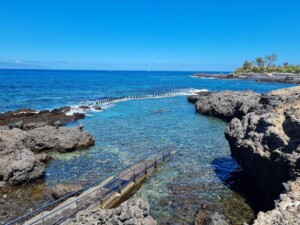
15 Best Natural Pools in Tenerife + MAP
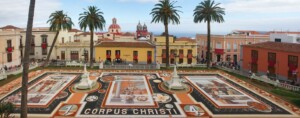
10 Best Things to Do in La Orotava, Tenerife + MAP
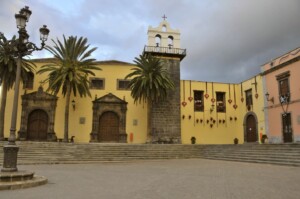
10 Best Things to Do in Garachico, Tenerife + MAP

Camping in Tenerife | Campsites and Tips

10 Best Restaurants to Eat in Puerto de la Cruz, Tenerife
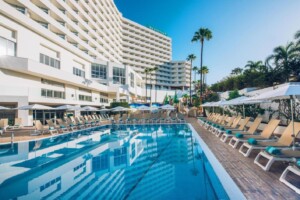
10 Best All-Inclusive Hotels in Costa Adeje, Tenerife

10 Best Villas in Tenerife, Canary Islands

15 Best Restaurants in Tenerife, Canary Islands

Things to Do in El Médano, Tenerife + MAP
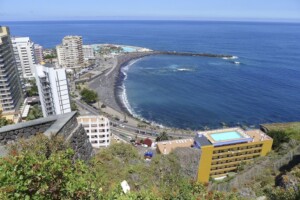
Tenerife By Ferry – Prices, Routes & Timetables

10 Best Family Hotels in Tenerife, Canary Islands, in 2024
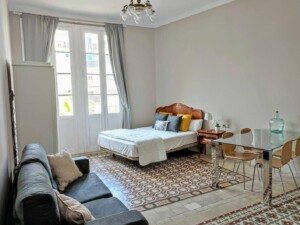
10 Best Apartments in Tenerife, Canary Islands, in 2024
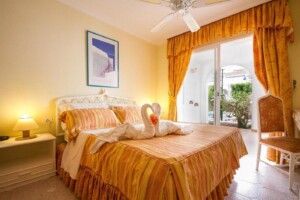
10 Best Hotels in Los Cristianos, Tenerife, in 2024

10 Best Hotels in Santa Cruz de Tenerife in 2024
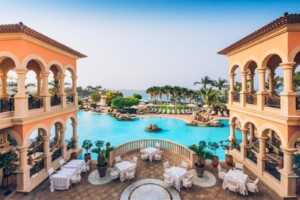
10 Best Hotels in Costa Adeje, Tenerife, in 2024
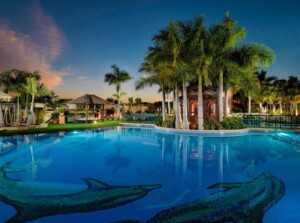
10 Best Hotels in Las Americas, Tenerife, in 2024
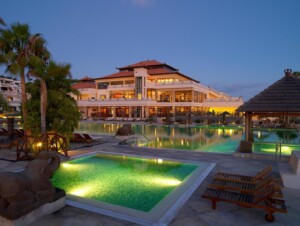
10 Best Hotels in Arona, Tenerife in 2024

5 Best Hotels in El Médano, Tenerife, in 2024
10 best 5-star hotels in tenerife south in 2024.
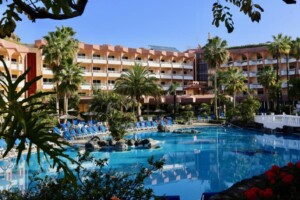
10 Best Hotels in North Tenerife in 2024
10 best hotels in south tenerife in 2024.
Leave a Reply Cancel reply
Your email address will not be published. Required fields are marked *
This site is protected by reCAPTCHA and the Google Privacy Policy and Terms of Service apply.

Travel Safe
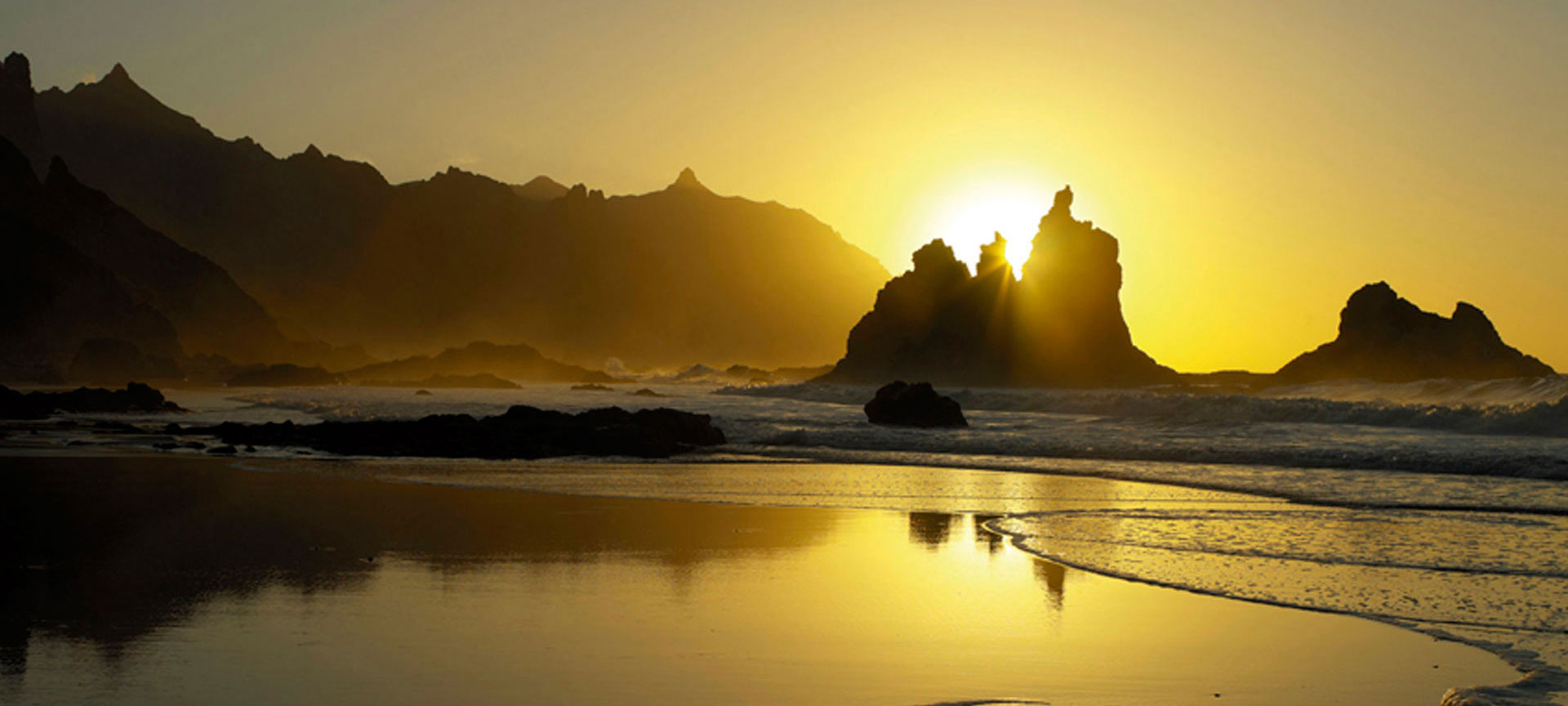
Tenerife (Island)
An island for getting away from it all
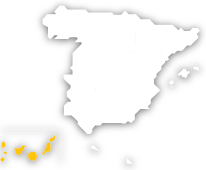
Los Realejos
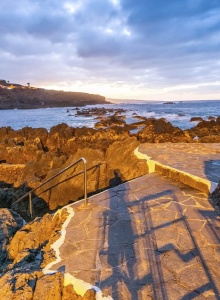
Icod de los Vinos
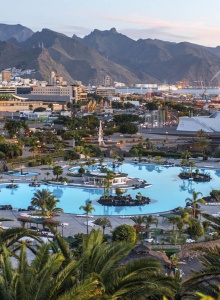
Santa Cruz de Tenerife
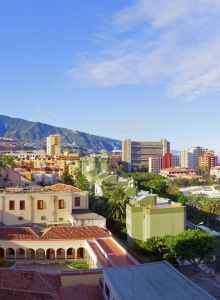
Puerto de la Cruz
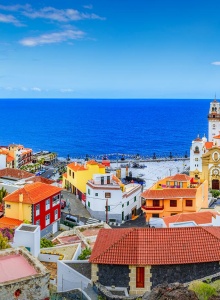
San Cristóbal de La Laguna
Places not to be missed

Teide National Park
One of Europe's most visited national parks is in the heart of…
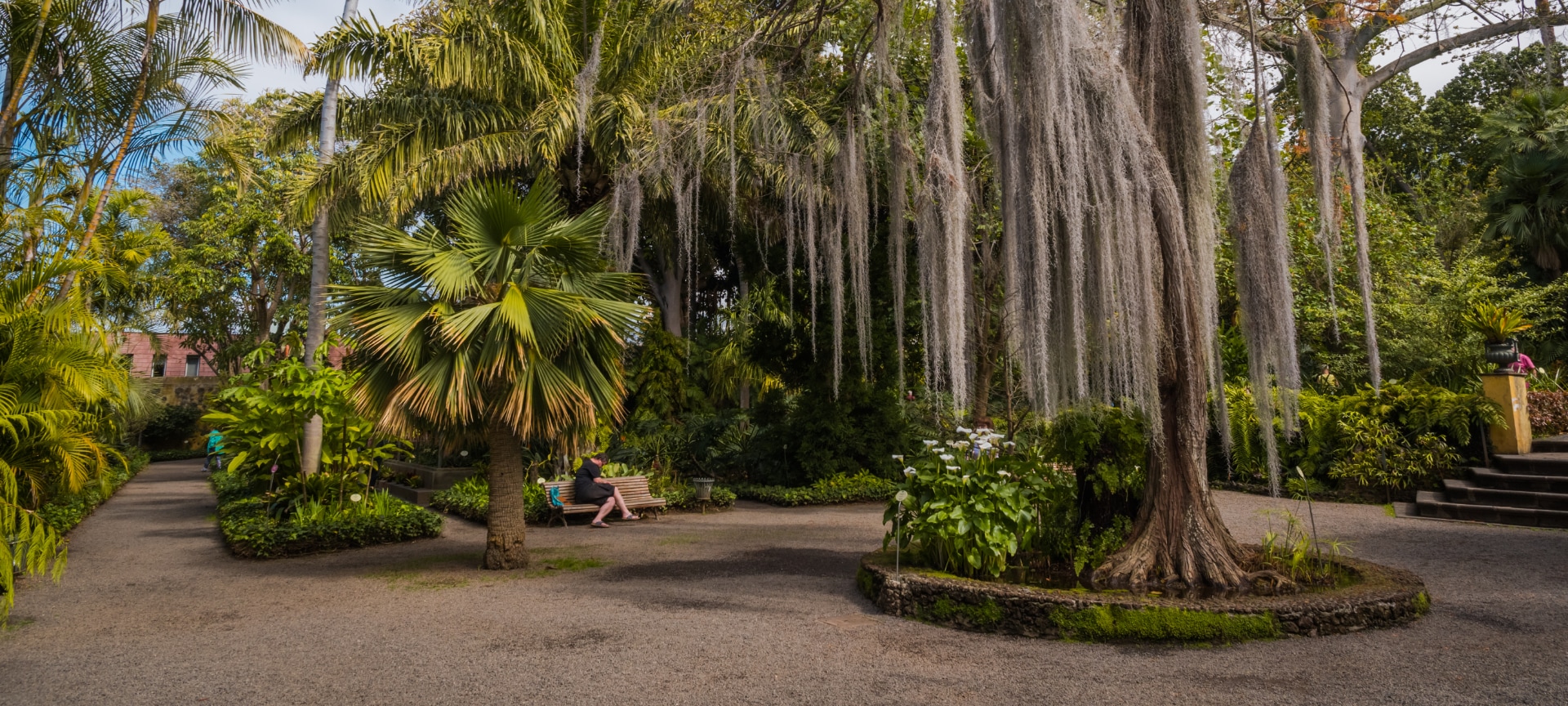
La Orotava Acclimatisation Gardens
The garden of La Orotava came about as a result of the concern…

Beach: Las Teresitas
Las Teresitas is one of the most famous beaches and most popular…
Beach: Medano
A fine, white sandy beach that is extremely wide.…
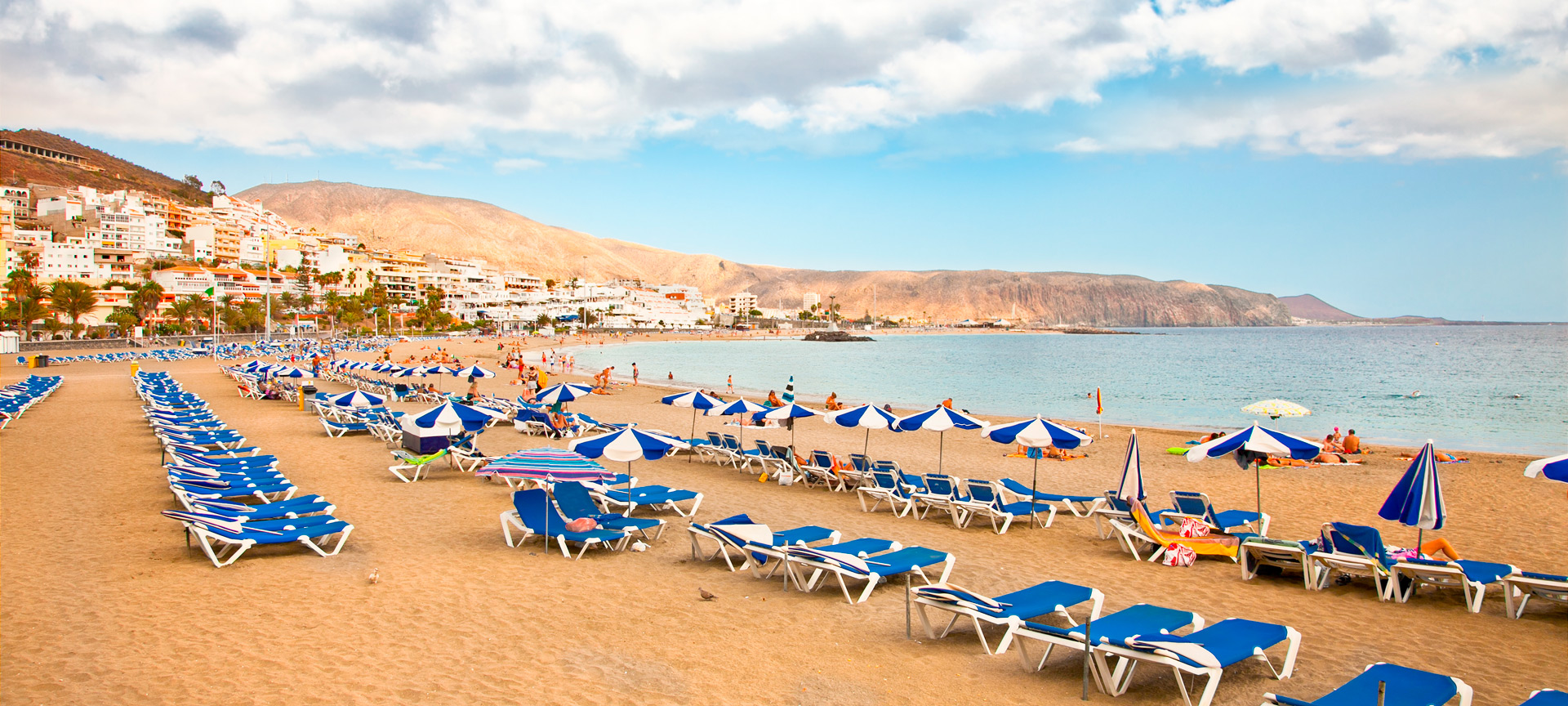
Beach: Los Cristianos
On the southern coast of the island of Tenerife, in the…
Other ideas for your trip
A day in Santa Cruz de Tenerife
Santa Cruz de Tenerife, capital of Tenerife in the Canary Islands, is perfect to enjoy at any time of the year thanks to its pleasant climate.…
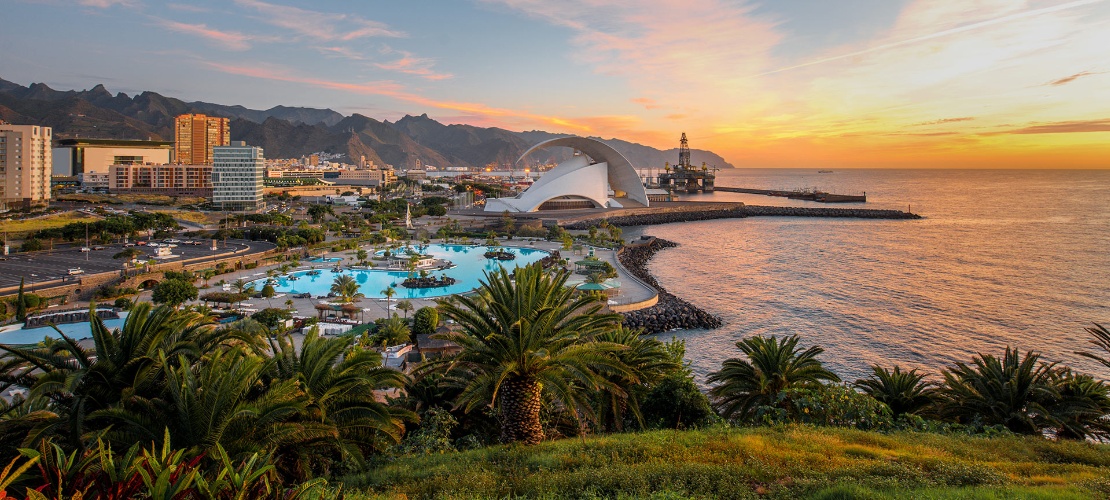
Holidays on the Canary Islands
So you can make the most of what's on offer in the eight Canary Islands, we suggest a travel plan with the essentials of each one.…

Unique places in Tenerife
Tenerife is the largest of the Canary Islands and is full of contrasts. Discovering its volcanic nature means getting closer to unbelievable and very different…
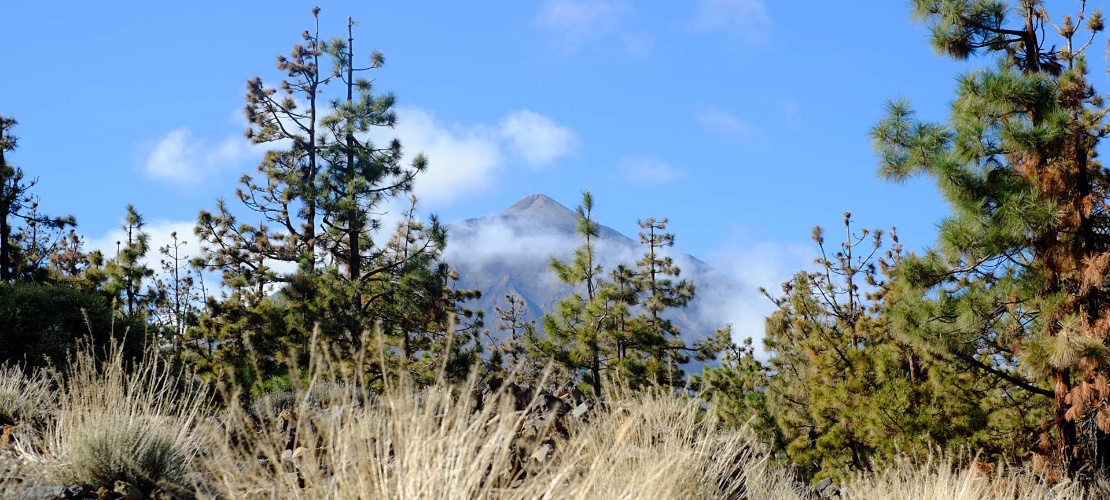
Into the volcanic heart of Tenerife
Tenerife (Canary Islands) is a pretty exciting place. Magnificent beaches, a famous carnival, pleasant temperatures all year, and something less known but much…

The wines of Tenerife
Volcanic earth, Atlantic climate, and refined farming techniques. This formula is responsible for the special aroma and taste of wines from Tenerife.…

Tenerife: a night at the foot of the Teide volcano
Mount Teide is the world’s third largest volcano, so it's only normal that spending the night in a hotel with views of the summit would be a fascinating…
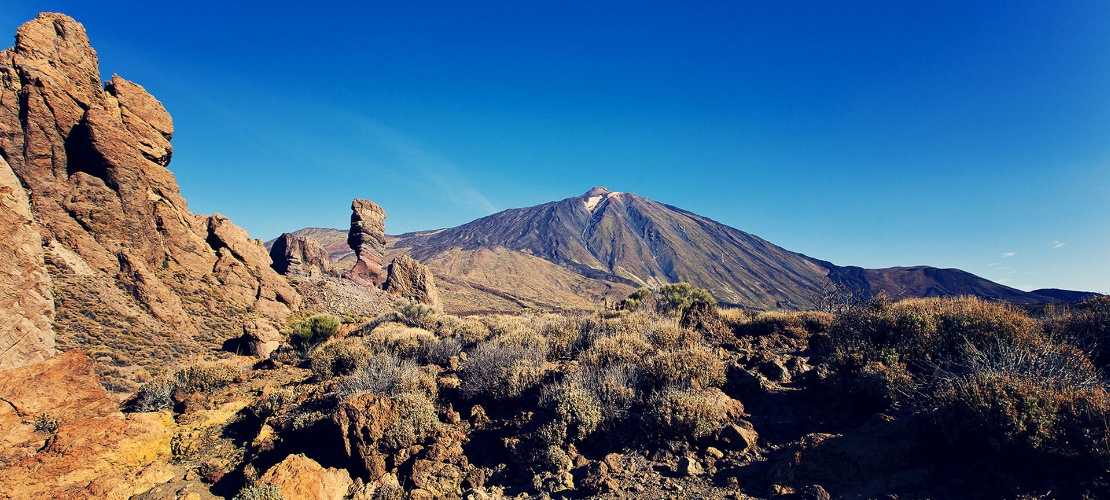
Three cultural getaways in Tenerife
Heritage and history are among the least-known attractions of Tenerife. We all know its beaches, its climate of eternal spring, its volcanic scenery and its…
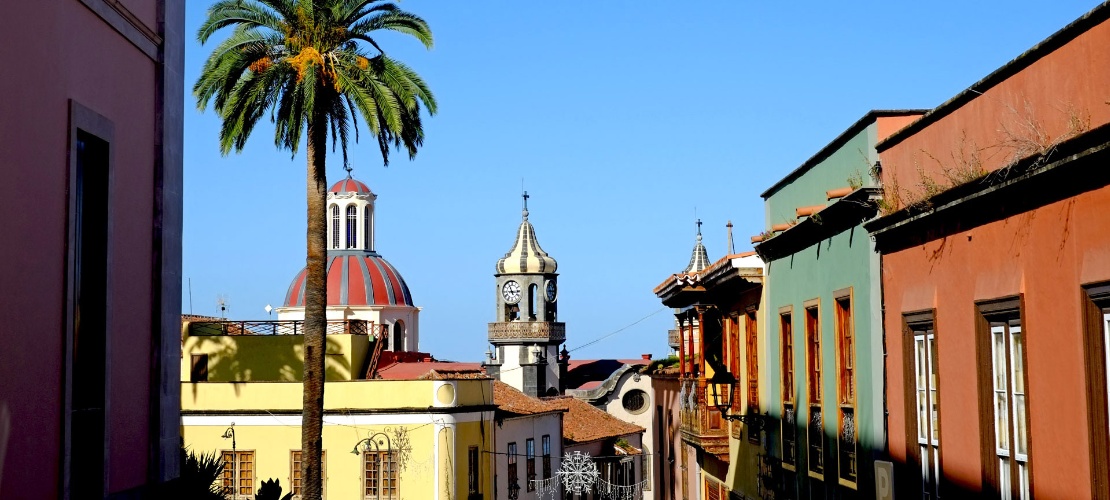
So you can make the most of what's on offer in the eight Canary…
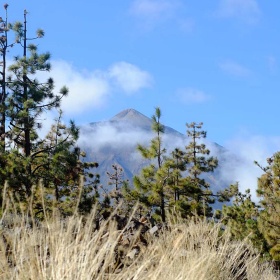
Tenerife is the largest of the Canary Islands and is full of…
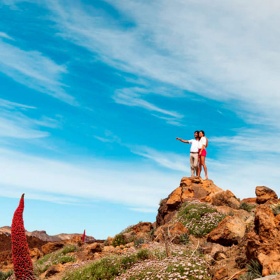
Tenerife (Canary Islands) is a pretty exciting place.…

Volcanic earth, Atlantic climate, and refined farming techniques.…
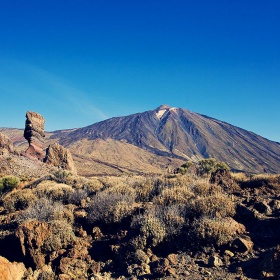
Mount Teide is the world’s third largest volcano, so it's only…
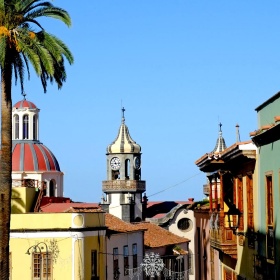
Heritage and history are among the least-known attractions of…
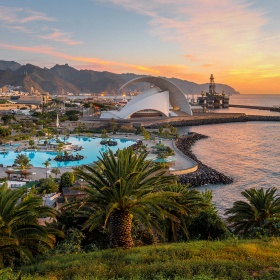
Santa Cruz de Tenerife, capital of Tenerife in the Canary…

Choose between thousands of activities to live your best life on holiday.


Are you ready to Visit Tenerife?
1,000+ local tours, winter destinations, 98% happy travelers, visit tenerife.
Book your holiday with us
Book your flight to Tenerife
Book your hotel in Tenerife
Rent your car in Tenerife
Book your excursion in Tenerife
Book your airport transfer to Tenerife Airport
- Investments
Invest in Real Estate in Tenerife
Best Excursions in Tenerife
Latest news.

Tenerife Fashion Beach Costa Adeje 2023 – Swimwear Fashion Show

Tenerife Fashion Beach Costa Adeje 2022 – Swimwear Fashion Show

Tenerife Fashion Beach Costa Adeje 2022
Latest video.
Get 10% off your first order!
Get notified about new offers.

- Excursions in Tenerife
- Privacy Policy
- Terms and Conditions
Register | Login
Advertising.

Osom One Limited | Company number: 12393319
3rd Floor 86 – 90 Paul Street, London, United Kingdom, EC2A 4NE
Partners : Osom One , Vincenzo Stefanini , Federica Montella , Crypto Breaking , Visit Tenerife , White Shop , Soccavo Magazine , Leggo Fuorigrotta , Night Awards , Capodanno Napoli , Come To Dubai
Cookies on GOV.UK
We use some essential cookies to make this website work.
We’d like to set additional cookies to understand how you use GOV.UK, remember your settings and improve government services.
We also use cookies set by other sites to help us deliver content from their services.
You have accepted additional cookies. You can change your cookie settings at any time.
You have rejected additional cookies. You can change your cookie settings at any time.
- Passports, travel and living abroad
- Travel abroad
- Foreign travel advice
Entry requirements
This information is for people travelling on a full ‘British citizen’ passport from the UK. It is based on the UK government’s understanding of the current rules for the most common types of travel.
The authorities in Spain set and enforce entry rules. If you’re not sure how these requirements apply to you, contact the Spanish Embassy in the UK .

COVID-19 rules
There are no COVID-19 testing or vaccination requirements for travellers entering Spain.
Passport validity requirements
Spain follows Schengen area rules . Your passport must:
- have a ‘date of issue’ less than 10 years before the date you arrive – if you renewed your passport before 1 October 2018, it may have a date of issue that is more than 10 years ago
- have an ‘expiry date’ at least 3 months after the day you plan to leave the Schengen area
Check with your travel provider that your passport and other travel documents meet requirements. Renew your passport if you need to.
You will be denied entry if you do not have a valid travel document or try to use a passport that has been reported lost or stolen.
Visa requirements
You can travel without a visa to the Schengen area , which includes Spain, for up to 90 days in any 180-day period. This applies if you travel:
- as a tourist
- to visit family or friends
- to attend business meetings, cultural or sports events
- for short-term studies or training
The requirements for working in Spain are different.
If you’re travelling to other Schengen countries as well, make sure your whole visit is within the 90-day visa-free limit. Visits to Schengen countries in the 180 days before you travel count towards your 90 days.
If you are visiting Spain and need to extend your visa-free stay for exceptional reasons, such as a medical emergency, you must apply to the immigration authorities (‘Extranjería’) (in Spanish).
Make sure you get your passport stamped on entry and exit.
If you’re a visitor, border guards will look at your entry and exit stamps to check you have not overstayed the 90-day visa-free limit for the Schengen area.
If your passport is missing a stamp, show evidence of when and where you entered or left the Schengen area (for example, boarding passes or tickets) and ask the border guards to add the date and location in your passport.
British nationals living in Spain do not need their passports to be stamped. Actively show your proof of residence, such as the foreigner’s identity card (‘la tarjeta de identidad de extranjero’ or ‘TIE’), when presenting your passport at Spanish border control.
At Spanish border control, you may need to show:
- a return or onward ticket
- proof of your travel insurance
- you have enough money for your stay - the amount varies depending on your accommodation
- a hotel booking confirmation or proof of address if you’re staying at your own property
- an invitation or proof of address if staying with a third party, friends or family, such as a ‘carta de invitation’ completed by your hosts
Using the e-gates
Use the desks staffed by border officers. If you’re aged 18 or over, and airport staff instruct you to, you may be able to use e-gates when they are working.
If you use an e-gate, make sure you get your passport stamped.
Staying longer than 90 days in a 180-day period
To stay longer, you must meet the Spanish government’s entry requirements . If you’re in Spain with a residence permit or long-stay visa, this does not count towards your 90-day visa-free limit.
Read more about passport stamping if you live in Spain .
If you cannot return to the UK before your visa-free limit expires, contact the Spanish government’s national information service . Dial 060 from a Spanish phoneline (in Spanish, with English speaking operators available).
Travelling between Spain and Gibraltar
Spanish border checks can cause delays when crossing between Spain and Gibraltar. If you are travelling to Spain through Gibraltar, check the travel advice for entry requirements for Gibraltar .
There is no charge to enter or leave Gibraltar. Do not hand over money to anybody claiming there is a charge.
Unaccompanied minors
Spanish law considers anyone aged 17 and under to be a minor. If an unaccompanied minor comes to the attention of the Spanish authorities (particularly in connection with criminal incidents or when in hospital), they will be considered vulnerable and may be taken to a minor’s centre until a parent or guardian is found.
Vaccine requirements
For details about medical entry requirements and recommended vaccinations, see TravelHealthPro’s Spain guide .
Customs rules
There are strict rules about what goods can be taken into and out of Spain (PDF) . You must declare anything that may be prohibited or subject to tax or duty.
Taking food into Spain
You cannot take meat, milk or products containing them into EU countries . There are some exceptions such as powdered baby milk, baby food and special foods or pet feed required for medical reasons.
Taking money into Spain
Declare cash or travellers cheques if the value is 10,000 euros or more. You will get a certified declaration to show you brought it in with you. If you do not, your money could be seized when you leave.
Related content
Is this page useful.
- Yes this page is useful
- No this page is not useful
Help us improve GOV.UK
Don’t include personal or financial information like your National Insurance number or credit card details.
To help us improve GOV.UK, we’d like to know more about your visit today. Please fill in this survey (opens in a new tab) .

Tenerife, Canary Islands
A Digital Nomad Guide to Tenerife
Tenerife is a fantastic, sunny, emerging Digital Nomad hotspot. As one of the only places that stayed open through the COVID lockdowns Europe-wide, Digital Nomads from all over flocked to this island. With its cheap cost of living, eternal spring weather, mountains & beaches at your doorstep, Tenerife is worth setting yourself up in.
Situated in the Atlantic Ocean, to the West of Africa, Tenerife is a part of the ‘Canary Islands’ – an archipelago owned by Spain. It is the most populated and largest island, with almost 1 million permanent residents and 5 million tourists visiting yearly. The island is large enough to be served by two airports, to serve both the North and South of the Island.
The Island capital – Santa Cruz de Tenerife, is located at the top of the island – and arguably, the ‘more traditional’ side of Tenerife. Tenerife North is populated more by permanent residents, and has multiple villages, very similar to the Spanish mainland. Tenerife South is catered more for tourists, where English is more present, and the larger resorts are located.
The split between the north and the south is more emphasised by the presence of Mount Teide – the highest volcano mountain in Spain, and the 4th largest in the world. Whilst classified as an active volcano, its last explosive eruption occurred over 2000 years ago, with no future eruptions predicted by scientists. Mount Teide is located in the centre of the island, within its own UNESCO National Park. Its location and sheer size make it a hotspot for visitors and hikers, and also explains the sheer natural differences within the Island.
North Tenerife is rainforest-like, with mountains of green. Its weather is slightly cooler, and vegetation abundant with the more frequent rain experienced. South Tenerife is dryer, and degrees warmer than its Northern counterpart. As such, you find a lot more tourists and residents flock to the south of the island, desperate for that all-year Spring weather that Tenerife is famous for.
Living in Tenerife Overview
Digital nomad personal experience in tenerife, best places to work in tenerife, best area in tenerife to stay, how to find an apartment in tenerife, accommodation & cheap hostels in tenerife, exclusive member benefits in tenerife, spain visa for tenerife, culture and food in tenerife, tenerife nightlife, some free activities, mid-range activities, high range activities, best time to visit tenerife, tenerife for families, tenerife transportation, fitness and health, tenerife people, tenerife insurance and medical care, jobs in tenerife, tenerife cost of living, information, useful apps, maps & navigation.

Titsa Main features:
- Check the waiting time of the different lines at the stop.
- Choose your favorite lines to get first-hand information through notifications.
- Check the prices of your routes.
- Check the schedules, routes and stops of all lines.
- Check the points of sale and recharge of the ten + card.

ten+móvil is a new application to make travelling on the tram and bus easier and more economical in Tenerife.
ten+móvil allows you to buy and validate your ticket, so that now fares and special offers adapt to your travel needs. You can buy your ticket at any time of the day and anywhere…
Travel & Local

Top-of-Tenerife , in the style of the magazine, presents a few selections of, in our opinion, the best sites on the island, including locations, attractions, activities, shopping and of course lots of choices for enjoying the culinary landscape. Just being in the guide is the stamp of quality, excellent service or simply of being ‘special’.
Average Temperature °C
Average temperature °f, average rainfall, average rain days, daily sunshine hours.
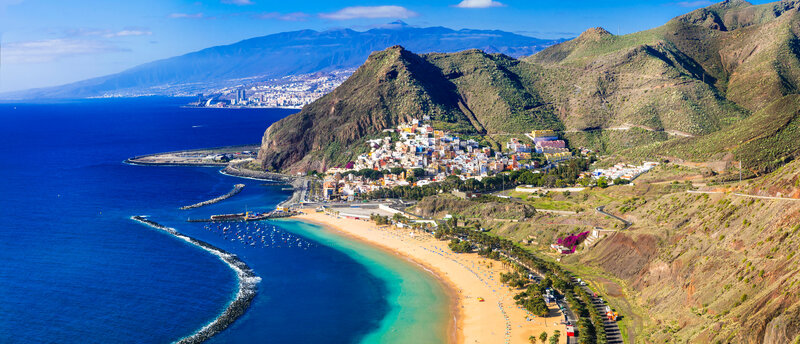
I visited Tenerife at the beginning of November 2020. Coming from a wintery Northern England, I flocked straight to the warm weather and the beaches in the South of the Island. I spent almost two months based in Las Americas – the tourist capital – whilst travelling and visiting the other parts of the island.
As COVID was rampant in November 2020, I was wary of going to secluded areas. Tenerife earns its economy through its highly popular summer season, which unfortunately hadn’t happened in 2020. By being based in its most popular area, I knew I’d have places open to visit and some culture to see. On the occasions I ventured out of the South, you’d spot more and more abandoned areas. A quiet reminder of COVID’s destructive and expansive reach.
I had no idea what to expect coming into Tenerife, as the location was chosen on a whim. A major Vacation hub, there’s not a lot of information online on settling in permanently. I found Google results unreliable, locals almost non-existent and a tough time finding current information on the state of the island. Eventually I went in with a ‘whatever will be’ attitude, discovering things along the way.
I met more nomads daily, and there is an exciting energy in the air. I predict in a few years, Tenerife will re-emerge as an extremely popular Nomad hotspot, similar to Bali. It really has the weather, location, and views for everyone. It is served by most major airlines and flights are not as long as some of the other Islands located in the world.
This guide will include everything you need to know about relocating to Tenerife – either temporarily or permanently!
Work in Tenerife
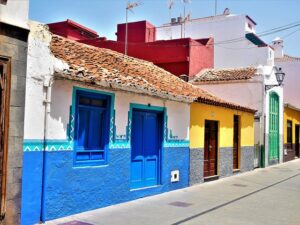
Tenerife offers the best weather in Europe – eternally Spring, the weather never dropping into single digits. The island offers a rainforest landscape, a dry landscape, a beach landscape and everything in between. The constant good weather, plus avid walking opportunities, means you can balance your work & leisure time easily.
In Tenerife, you can also start new watersport hobbies with the many vendors that offer lessons. Maybe one afternoon you’d like to learn how to ride a Jetski? Or Kitesurf? If it involves the water, there’s a person offering lessons for you.
Sheraton La Caleta
- Coworking Nomad
- Coco Coworking
Tenwork Coworking Space
Pistachios coffee brunch, café mundial.
In Tenerife, cafés and restaurants dot the coastline and all along the streets. Generally speaking, most places offer free Wi-Fi and areas to complete work within their venue, provided you purchase something from their menu. If you prefer to work with your toes in the sand, you can use the free Public Wi-Fi in central areas, or your mobile data and personal Wi-Fi hotspot. Co-Working spaces are springing up all over the island, so if you prefer to work with likeminded others, or have access to meeting spaces etc, we’ve included some of the best below.
If you’re looking for specific co-working spaces, some of the best places available are:
For all the luxury with none of the prices, Sheraton offers an all-day pass in its five-star resort in La Caleta. For €15 euros a day, you receive: buffet breakfast, 30 printer copies, premium wifi & unlimited coffee and tea. Sheratons lounge areas have great views over their facilities and have multiple power stations available. In between Zoom calls and meetings, you can use the public facilities of the hotel, upon request and at an additional cost, including their world-star Gym and their three swimming pools.
For more information, and reservations, email [email protected]
Coworking Nomad, Santa Cruz
If you’re looking for more of a monthly option, Coworking Nomad offers discounted rates for residents and visitors. From €80 a month, you receive 24-hour access to their facilities, a dedicated table, meeting room access, printers, lockers & fax facilities. The cost also covers free filtered water, coffee, refrigerator and microwave use.
Coworking also offers daily and weekly rates, with reduced access and hot desking, instead of a permanent table. You can obtain a free day trial to check out their facilities by contacting them here: [email protected]
Coco Coworking, Costa Adeje
For a beachside office without worrying about the sand, Coco offers a dedicated office for all your business needs. Open 9am-5pm and you can purchase daily, weekly or monthly access passes. Prices start at €20. Other features of Coco include a dedicated workspace, free Wi-Fi, coffee & parking, as well as a fully serviceable kitchen with filtered water. To find out more information and to book a spot at Coco, you can contact them here: [email protected].
Tenwork is a collaborative workspace aimed to empower individuals seeking to establish their own business or advance professionally. They offer state-of-the-art facilities, an ideal environment to work in, and take pride in the “Chill Zone” and “Rooftop” terrace, providing stunning views of the city.
The prime location in the heart of the capital at Plaza Weyler is unbeatable. Recently, they expanded their services to include a new Coworking space at Calle Porlier 20, just a 5-minute stroll from Weyler. This new space is fully equipped and features facilities to enable you to further advance your projects.
They offer several packages from €15/day to €140/month.
Zen Den is a unique and modern workspace with spacious desks, comfy chairs, and located just a stone’s throw from the beach, all you need to survive the working day.
They currently offer 15 hot desks and limited dedicated sit/stand desks with an option for renting monitors.
You can work at any desk for €18/day €65/week €215/month.
A Premium Sit/Stand Dedicated Desk costs €30/day €110/week €350/month and includes a 28” UHD 4K screen, Ergonomic mouse, Bluetooth keyboard, laptop stand and more.
Some of the best cafés we’ve found to work at are:
Suka Fruit has an extensive menu of juices, breakfasts, sandwiches and fruit dishes. They have combo options, great coffee and alcohol available at both locations. They have two locations on the island – Las Americas and Fanabe Beach, but they both have the same menu (and fast free Wi-Fi!). Fanabe Beach is located a stone throw from the water, with covered outdoor seating
Las Americas’ location is a little bigger, with both covered and tables directly in the sunshine. If you plan on spending all day online, head to the Fanabe Beach location, with more outlets. If you’d like to get a tan whilst you work, try the Americas spot.
https://www.instagram.com/suka_fruit/
Located just a few streets away from the bustling Los Cristianos, is the locally popular Pistachios. It prides itself on a sugar-free healthy menu and strong espressos. Primarily with outdoor seating, you may struggle to work all day without a power pack here, but the good food will make up for it. As you finish up your meetings, you can walk down to the tourist beach lined streets, maybe to meet up for a sunset tour of the islands.
https://pistachocoffeebrunch.com/
Heading North for this one is the intimate Café Mundial of La Laguna. A typical Spanish café, with modern décor and an ever-changing menu, you can work away here and be mistaken for a local. Sit inside and smell the freshly baked goodies or sit outside in their very chic patio. As you are more north when you are here, you may run into some language barriers. Be ready to speak Spanish or find someone to translate the menu for you!
https://www.facebook.com/cafemundialtenerife/
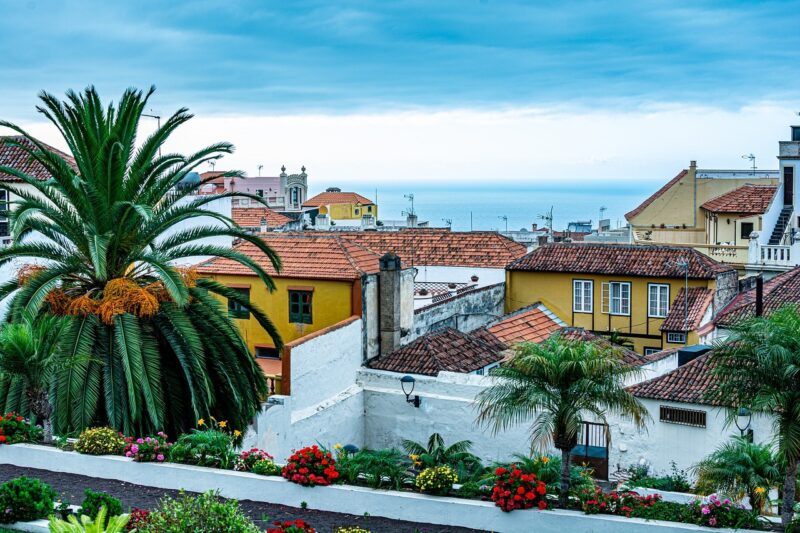
Where to stay in Tenerife
- Santa Cruz de Tenerife
- Las Americas & Los Cristianos
Tenerife is divided into two major sections – the North and the South of the island, divided by Mount Teide in the middle. North Tenerife has more locals, with traditional food & customs. North Tenerife you’re likely to find a more Spanish culture, as well as slightly cooler and wetter than the south of the Island. South Tenerife is populated mostly by tourists, and expats. The weather is warmer and dryer, and you’re likely to find more English signage and menus.
Digital Nomads find themselves more to the south of the island, where you can really embrace the year-round sunshine and areas catered to expats. However, if you wish to experience a more traditional side of Tenerife, the North of the island has a lot to offer. The best neighbourhoods in both sides of the island are below.
North – Santa Cruz de Tenerife
The capital of the entire Island, if you choose to head North, Santa Cruz de Tenerife is your best bet for a great place to stay in Tenerife. It’s populated by nearly half of the island’s population, with over 200,000 permanent residents in its city streets. It’s home to the major government buildings, most embassies and a bustling harbour. It’s arguably more cultural than the south of the island, with museums, an auditorium, theatres and the location of the island’s yearly carnival – the ‘Carnival of Santa Cruz de Tenerife’ in February.
The majority of the people in Santa Cruz de Tenerife are Spanish natives, and you’ll notice most restaurants, bars and public areas with Spanish signage. Santa Cruz de Tenerife has a major airport, tram lines & a harbour, with ferries to the other islands.
Santa Cruz de Tenerife is a lot quieter than its southern counterparts, as most tourists flock south. It’s not characterized by its nightlife, but if you want to head out all night, the close neighbourhood university town of La Laguna where you can find your dancing shoes. Santa Cruz de Tenerife has major shopping areas and some familiar shops you’ll find all over Europe. It’s often quieter and more affordable than the South.
South – Las Americas & Los Cristianos
The hustle and bustle of the south are noticeable the minute you step onto the boardwalk. To truly embrace the centre of the south, the best part of the island is Las Americas and Los Cristianos.
These neighbourhoods host all the tourist attractions, the watersport lessons, and the famous Veronicas nightlife strip. Finding an apartment here is quite easy, as most of the spaces for rent are set up for expats and tourists.
Well serviced by frequent bus services, taxi ranks, and easy walking tracks, most apartments in these areas are easily accessible. Most of the bars that dot the beach of Los Cristianos have great deals – including pints of local beers for only €1. Being situated in this area will give you access to most international cuisines, a major shopping centre (Siam Mall), and coworking areas. Being in the centre of the south also means you can café and bar hop around the island, without having to consider a bus route or taxi home.
Some expats may argue these areas are too touristy and loud at night, but due to the current COVID curfew of 10pm, you should be able to still enjoy a good night’s rest. Las Americas and Los Cristianos have a major hospital, medical centres and is located a short 20-minute ride to the South Tenerife airport.
Finding an apartment in Tenerife can be quite difficult, due to the sheer number of holiday-only rentals that are available around the island. With so many landlords owning property designed for temporary tenants; a more permanent home requires a little bit more effort that other nomad countries. That being said, it’s not totally impossible!
The first decision to make is if you’d like to live in the traditional North Tenerife, or the bustling South Tenerife. The next step is if you’re looking for a long-term or short-term contract. Long-term contracts are for a minimum of one year, right up to five. There may also be options to renew the contact after five years. These contracts can be at favour of the tenant, with protection over rent inflation, among other causes. Short term contracts, whilst more popular, don’t have this luxury. They are valid anywhere from one day to one year.
If engaging in a short-term contract, be wary of the time period it’s issued. Any contracts three months and other could be considered ‘touristic’ by the government standards, and result in high fines for yourself and the landlord. When signing any contract, you will be expected to provide your visa information and relevant ID numbers.
Alongside your documentation, you will be required to pay a security deposit on the property (equivalent to 4 weeks rent), as well as 4 weeks rent in advance. In addition to this, your landlord may also charge you a security guarantee, which can be the equivalent of 8 weeks. If you choose to use an agent to find your property, you may also be required to pay a ‘finders fee’ which will be anywhere from €100-€200.
In total, upfront costs on renting a property can cost upwards of €1500. As a tenant, usually you will be required to source and pay for your own utility suppliers. Your landlord is required to pay land rates (IBIs) and community charges, which they normally include within your monthly rent.
As with most countries, your landlord is responsible for the fixing and maintenance of larger issues – (i.e. washing machines, boilers) and the tenant is responsible for fixing minor damages (i.e. blown light bulbs, smashed windows). Further to this, standard practises also apply in eviction and renewal. It is expected to provide 2-4 weeks in advance for notice in both parties, if one chooses to leave or the contact is not renewed. The only exception to this, is if the tenant does not pay the rent and is evicted.
If you’d like to rent property in Tenerife, it’s best to arrive and temporarily rent, whilst you visit and view properties for a more permanent location. This way, you are able to gage where exactly you’d like to live, and what exactly you want out of your new property. Some websites you can find properties are:
- https://www.idealista.com/
- https://www.fotocasa.es/en/
- https://www.kyero.com/
In the meantime, some great low accommodation options are below.
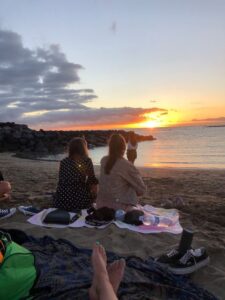
Once arriving in Tenerife, our best recommendation is to enquire in some co-living spaces, where prices are low, and the homes are filled with fellow digital nomads. Hostels can sometimes be filled with party-going teenagers or have unreliable WiFi. A co-living space can help you live in harmony and meet some new friends whilst you’re at it!
The Point Surf Club
The Point Surf Club is a members-only surf, work and play venue created by the surfing community – only 100 metres from the waves of Las Americas. There are three rooms in the apartment – a bunk-bed room for up to 6 people, or two private rooms for up to 2 people in each. The apartment has a fully equipped kitchen with coffee machine, a dining area, lounge area and two full bathrooms. There’s fast free WIFI included, laundry facilities, and a smart TV with Netflix. For availability and prices, consult the company directly via their website.
Nine Coliving
If you’re looking to stay North, Nine Coliving is a modern, sleek and affordable option in La Orotava, Santa Cruz de Tenerife. You can choose to stay in the busier sharing rooms of up to 4 or choose to go with a private bedroom option. Daily breakfast is included, as well as housekeeping, free parking, and even a weighted gym on site. The entire venue is serviced by a fast WIFI connection – even out in their terrace, rooftop or garden.
There are many options to connect with your new housemates – with daily morning yoga, opportunities to hike together, and a big living room for movie nights. For more information, check out their website.
Cactus Coliving
Cactus Coliving is a coliving space which offers accommodation for remote workers, digital nomads, and entrepreneurs seeking a community-driven living experience. Cactus Coliving provides a range of private and shared rooms with access to communal spaces such as a kitchen, lounge, garden, and coworking area.
The space also offers a variety of amenities and services, including high-speed internet, cleaning, laundry facilities, and weekly community events. The coliving space is located in the town of Arona, in the south of the island, and offers easy access to outdoor activities such as hiking and surfing.

Espacio Kernel

Zen Den Tenerife
Similar digital nomad destinations, compare tenerife with other destinations.
Tenerife is owned by Spain, making it part of the Schengen European Union. If your home country is also a part of the Schengen, entry involves simply arriving in the country with your National ID card or Passport. To see if your country is part of the union, you can check via this website here: https://www.schengenvisainfo.com/schengen-visa-countries-list/ . This allows you to live and work freely.
If you’re not lucky enough to be part of the Schengen, entry into Tenerife is a bit more complicated. A tourist visa is awarded upon entry which gives you 90 days within the island. If you love the island (and you will!) and wish to stay longer, there’s a few different visa options.
Most countries have an embassy or consulate on the island – with 90% of them located North in Santa Cruz. With COVID changing the status of Visa applications daily, it’s best to contact your Embassy directly. If you enquire with your original country of residence on their Tenerife location, they should be able to help you.
Student Visa
If you want to enrol in classes – i.e. Spanish language courses, and are willing to undertake 20 hours per week, you can apply for a Student Visa whilst on the island. You have to show that you don’t have a criminal record, and that you have the funds to sustain yourself while you study. You are allowed access to Spain’s healthcare system with this permit.
Temporary Residence Visa / Permit
A temporary residence permit is valid for up to 5 years from issue. To apply for one of these, you need to obtain quite a large number of documents, including proof of income, passport, health insurance and rental or property contract.
Due to the ever changing nature of COVID and Brexit in 2021, requirements for paperwork and appointments are changing daily. We recommend consulting directly with your original countries’ embassy for the requirements and appointments you will need.
Tenerife is owned by Spain, so the traditional customs of the mainland have transferred over to this island, alongside some original cultural differences.
The Spanish culture is prevalent in the islands small villages, with architecture being one of the main things you notice. Homes are frequently one story, with thick walls and bright colours. Most homes, restaurants and bars have indoor courtyards and lots of shade to protect from the year-round sunshine.
If you choose to head North, you will find more Spanish or Canarian natives, genuine and with English as a second language. You will find the villages follow the Spanish timelines, of midday siestas, late evening meals and nightlife that stretches long into the morning hours. The island’s museums are located up North, and a few days up here you can explore the rich history of the island by visiting them all. North Tenerife hosts the biggest fiesta carnival of the year in February – the ‘Carnaval de Santa Cruz de Tenerife’.

The Carnival is considered the second biggest and internationally recognized, just after Rio de Janerio, which is held in one of Tenerife’s sister countries, Brazil. The Carnival lasts almost two weeks long, with bright colours, parties day and night, and many cultural traditions.
Alongside the main Carnival in February, Tenerife hosts a whopping 500 similar celebrations each year. They are dotted around the island, and celebrate a number of different things, however all have one thing in common – to party!
Tenerife traditional cuisine is Spanish influenced, with dishes like Tapas, Paella and Sangria. Many restaurants offer special deals on multiple Tapas dishes or combined ‘meal deals’ with Paella and Sangria. The cuisine is heavily meat, cheese and seafood. Vegetarians and vegans do have options here; however, they are limited.

Tenerife has many banana plantations around the island, some of which you can visit. Bananas are the most common and cheapest fruit available, and you can also purchase Apples, Oranges and many other fruits and vegetables from supermarkets. Many are locally grown and delicious.
Roman Catholic is the most popular religion on the island, and you can find many cathedrals of dizzying architecture around the island. Catholic religious days are recognized within the community, and Sunday you may see some locals at their local church.
Towards the south, tourist part of the island, you will see less and less traditional Spanish culture. The resorts, hotels, restaurants and bars try to target the greatest number of tourists possible. Less traditional meals are found here, and some of the ‘meal deals’ are designed to sell, rather than to be enjoyed. If you’re looking for a more traditional experience, the general advice is to head north!
As Tenerife is owned by Spain, many Spanish nightlife habits have transitioned over to this island.
The first stop is often aperitivos at around 9pm. Aperitivos are small nibbles, enjoyed over drinks. Most places provide this for free, with one aperitivo per round of drinks. Quite often they are provided in the form of potato crisps, olives or mini toasted sandwiches. Remember to not eat too much, as your next step is dinner starting anywhere from 10pm.

Eating out is common in Tenerife, and dinner can be enjoyed at many of the outdoor dining options alongside the beach or in the villages. After a few hours of eating, it’s time to dance the night away with a full belly! Nightlife starts at 12am, and clubs don’t close until 7am.
There are many different nightlife options on the island, from live music, to cabaret shows, clubbing or karaoke bars. Many places don’t charge a cover fee and drinks are well priced, from €1 for a pint of local beer up to €8 for a specialised cocktail. Due to the large amount of nightlife options, if you look hard enough you can find some great 2 for 1 cocktail deals or free shots.
The most popular part of the island to head out is Los Cristianos and Las Americas. The famous ‘Veronicas’ strip hosts most of the late-night venues with pumping music and packed dance floors. Due to the warm nature of the island, there is no dress code, and you are often encouraged to sit outside.
If choosing to go out in Tenerife, be wary of the sellers lining the streets. With a lack of police presence and no law preventing them from approaching you, you may find they visit frequently along your night out – offering you everything from sunglasses, to roses, to some illicit substances. Illicit drugs are illegal in Tenerife and purchasing these could land you in some serious hot water. The other items are usually drastically overpriced, as these sellers’ prey on drunk minds.

A great tip with these street sellers is to repeatedly say ‘No’ loud and clear. Unfortunately, even a little wavering in the tone of your voice could result in them continuing to hang by your table, pushing whatever they’re selling onto you. It can sometimes get quite frustrating, and often interrupts conversations.
Finally, despite the low crime rate in Tenerife, pickpockets are very common in nightlife areas. Keep your valuables close and bags protected. Do not leave your phone on the table for someone to grab and don’t appear too much of a target by drinking too much.
Things to do in Tenerife
Tenerife is full of bustling activities, many of them being free to do. The island is jam-packed with adventures for young and old, with any budget.
You wouldn’t be a nomad in Tenerife without enjoying its many beaches. Tenerife has almost 65km (41 miles) of coastline to explore. There really is one for everyone, from the rugged coastlines of Playa de Los Gigantes, the black sand beaches of Playa Jardin, to the quieter man-made bays of Playa di Camison. Entry to every single beach in Tenerife is free, as well as enjoying the sand and the water. You can bring ball sports to enjoy, surf boards to enjoy the waves, or just play about by the water’s edge. Most beaches are easily accessible, by bus, walking or car. Many will have opportunities to hire lounges for the day, as well as lockers. If you head to a popular beach, you may even find beachside café’s, serving up food and drinks.
Walking and Hiking
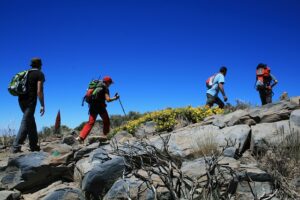
Depending on where you choose to stay in Tenerife, you can always find somewhere to walk. The beaches of the south are paved, some even stretching into the ocean. These paths are bustling with restaurants, fresh sea air and lots of people watching opportunities. Walking up and down the beachside is free, and there are many opportunities to stop for lunch or a drink along the way. If you like, you can even park yourself down on one of the many free rest chairs provided and watch the sunset, before the walk back to your accommodation. If you head into the North or up the mountains of the island, there are many hiking opportunities available. All hikes are free and are varied levels of difficulty. The most popular hike to do is Mount Teide at night, where early risers find themselves pulling on their boots at 2am for the steep climb, making it to the peak for sunrise at 7. If you’re an avid hiker, head to the various information desks around the island to obtain maps and discuss what hikes work best for your fitness level. Always take into consideration the weather, length and steepness of your climb before embarking it!
History and Anthropology Museum
If you find yourself on a weekend with nothing to do, take some time to learn about the rich history and culture of Tenerife. The museum is located in La Laguna and has free entry on Fridays and Saturdays between 1pm and 5pm. The museum itself is quite large, so if you find you don’t make it through in one day, a return visit will cost you only €3 per ticket.
For more of a modest budget, there’s plenty of things you can still do on this amazing island.
Kayaking and Snorkelling Tours
For around €40 each, there’s many tours you can take to explore some of the water worlds of Tenerife. The sea around the island is home to many whales, turtles, dolphins and fish species. Most trips depart from the busy centre of Los Cristianos and can take anywhere from 2 hours to a full day. Most include all the equipment you need – whether you choose to snorkel or stay above water in a kayak. Due to the high competition for these services, it’s best you shop around to find exactly what you’re after. Many of the agents will throw in extra deals and lunch specials, if you know how to bargain!
One of the biggest water parks in Europe, Siam Park is great fun for all ages, as well as being reasonably priced. Adult tickets start at £35 and include entry into the park as well as all the rides you can handle. You can spend your day at the white sand beaches, catch the surf at the Wave Palace or kick back on the lazy river. If you prefer to get your heart pumping, there’s over 30 rides to enjoy – including the almost vertical Tower of Power. A note to mention that whilst ticket prices are affordable, lunch, locker hire, and drinks can add up on the day – so bring your own food if you’re on a budget. If you’re short on time, have a look to purchase tickets online prior to your entry, which can include upgrades to fast pass queue jumps, among many other benefits.
The Zoos – Loro Parque and Monkey Farm
Want to see some of your furry friends? Tenerife South has two different zoo options, both very affordable. The largest zoo on the island is Loro Parque, with mammals, birds, fish and reptiles. A visit to Loro Parque can be filled with visiting enclosures of Lions, Penguins, Parrots and Killer Whales. Adult ticket prices are again €35, which includes entry into the park and free viewings of their very popular Sea Mammal show.
If you’re on a little bit more of a tighter budget, the ‘Biggest Little Zoo in the World’ is the Monkey Farm, at only €10 per ticket. The monkey farm has, you guessed it, only primates! Ticket prices include entry into the farm, and there are many opportunities to add on extras – like feeding a lemur!
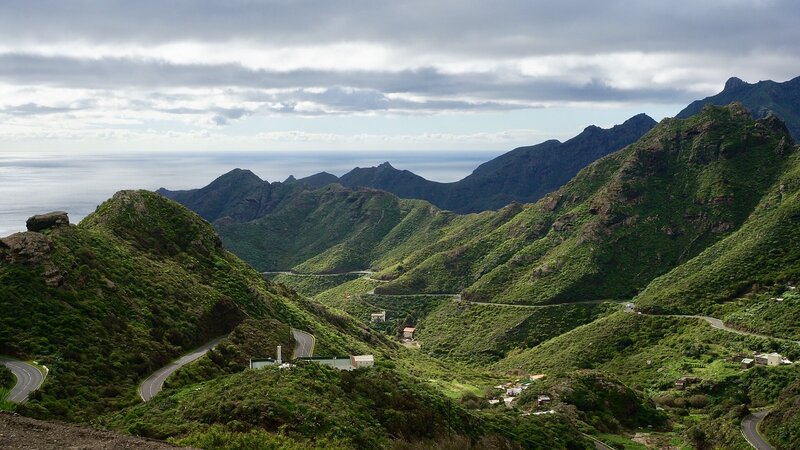
Feeling a little boujee? Here are some high range activities you can do in Tenerife.
Tandem Paragliding
If you want to see Tenerife from above, paragliding is a jaw-dropping way to do it. Strapped in with an instructor, the paragliders jump from peaks in Adeje and Ifronche, depending on how high you want to go. You fly down to the ground, whilst the instructor twists and turns the parachute to ensure a smooth ride. For around €120 per flight, you are collected from your accommodation and the rest is up to your instructor. The entire process takes around 2 hours, the flight itself being 20 minutes.
Submarine Safaris
Live out your wildest child-like fantasies with an underwater trip in a real submarine. For a half-day of unforgettable fun, you can experience the ocean like no other. An adult ticket costs €53, and includes hotel pick up and drop off. Heading 30m (100ft) underwater, expect to see all types of sea life, from the comfort of your own window and cushioned seat. After the tour, you are given your own dive certificate, as well as given plenty of time to explore the area before being dropped off at your accommodation.
Scuba Diving
Prefer to do things on your own? Scuba diving is also available in Tenerife, for the individuals who aren’t afraid to get wet! Explore the ocean depths with diving professionals, and see the sea life up close. One dive is €37, which includes a half day exploring and insurance. If you need gear, this will come at an additional cost. Again, there are many competitors for Scuba Diving, so ensure you shop around for the best deal!
One of the best parts of Tenerife is arguably their eternal Spring climate. Tenerife has earned its reputation within Europe as an all-year-round location to visit or live. The sun shines here more than most places in the world – the sunniest parts of the island being the South and the West. The North is also warm, however with its rainforest vegetation, it does receive more rain than the rest of the island.
The minimum and maximum annual average temperatures in Tenerife are about 15ºC (59°F) in winter – December through to Jan and 24ºC (75.2°F) in Summer – June through to August. However, in Summer, sometimes the temperatures can reach into the high 30’s so be prepared for some sweltering sun!
Generally, the closer you head to the centre of the island – towards Mount Teide, the more unpredictable the weather becomes. As the altitude rises, the temperature cools, and in winter, occasionally you will see snow at the top of the mountain.
If the sunshine is what you’re heading to Tenerife for, stay south. The average rainfall never exceeds 50mm/day across the year, and the ocean water temperature never drops below 15 ºC (59°F). You’ll also get the most amount of sunlight – up to 8 hours a day in Summer. Plenty of time for a swim in the morning and a sunset drink in the afternoon at one of the many beachside bars!
Tenerife is extremely family-friendly, thanks to its many resorts and activities for kids of all ages. Crime rates are low across the entire island, with the biggest risks being scammers or pickpockets. That being said, keep your child within view no matter where you are, and only use reputable services which involve them.

The most exciting family friendly activity on the island is the thrilling Siam Park. One of the biggest water parks in Europe, it has rides for the biggest adrenaline seekers, and many sections for the little ones. It’s a must for a fun-packed family day out!
Many of the tours on the water are great for kids – sign up for a whale or dolphin watching tour, go underwater in the Submarine tours, or get the big kids on a banana boat ride.
Prefer things on land? Take a trip to the Butterfly Farm, or the Museum of Science. You can even sign the kids up for camel rides in El Tanque.
In addition to the many family friendly activities available around the island, there’s also many long and short-day cares, private and public schools. You can even be at the beach together in the morning and drop the kids off at the kids’ club for the afternoon, whilst you get some work done!
Living in Tenerife
Getting around Tenerife is simple, as the island is well connected with modern highways and a great public transport system.
The buses in Tenerife are run by a company called Titsa and are called ‘WaaWaas’ by the locals. They are easily identifiable by their bright green colouring. The buses are modern, and are more coach-like, rather than bus-like. They are air-conditioned, and have modern seating with belts, if you wish to use them. Storage within the bus is limited, and if you are boarding with large enough items (like suitcases), expect the bottom of the bus to be opened by the driver, where you have to manually store your cases underneath the seats.

The buses run frequently along the island and are extremely affordable – with rides costing no more than €3. To pay for a ticket, a Ten+ bus pass is needed. You can get a Ten+ bus card from the many outlets around the island. Look out for the bus pass logo (the words ‘ten+’ in blue font) which should be stickered on the entranceway of the store. The card itself costs €2 which you then load with credit in €5 increments from €5 to €100. We recommend loading up at least €20 for a week of frequent travel. You can pay for this using cash or card, and it will not expire for 12 months.
The bus timetable is available through the free Titsa app, or on the Titsa website. The bus timetable and routes are also shown through Google Maps. You will need to tap your card on entry and exit from the bus, using the readers provided. After tapping on your exit, you will be shown how much is left on your card. If you forget to tap, you will be charged a full day’s rate (€4).
You can use your Ten+ card on all bus and tram routes on the island, however you can’t use it on the bus routes to Mount Teide. These tickets will need to be purchased separately.
An important thing to note is whilst Tenerife’s bus system is affordable and frequent, rides between locations can be a lot longer than by car. Bus routes will often head into side streets, up and down the island – taking an hour, rather than 10 minutes by car. As a result of this, a lot of long-term stayers choose to buy or rent a car.
Renting a car is easy with many places offering discounted monthly rates and quality vehicles to choose from. Petrol is highly affordable, and parking is mostly free. Alternatively, if you don’t want to drive, you can easily hail a taxi from the many stations around popular hotspots.
Tenerife has year-round Spring weather. This means it’s almost always warm and dry, with plenty of sunlight hours to get physical!
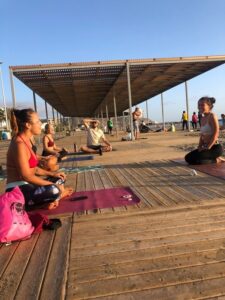
Tenerife’s main form of exercise comes from the water. Locals and tourists enjoy daily ocean swims, surfing, or kitesurfing. Depending on the time of the year, you should see most people out on the water most days enjoying the tepid temperatures. Along the beachside, most paths have been converted to allow easy walking and running. As the island has many inclines, the paths are frequented by cardio lovers enjoying the sea air whilst getting their heart pumping.
If you prefer walks with more of a view, Tenerife has many mountains for hiking, the famous being Mount Teide, which takes a whopping 12 hours to climb. There are over 100 different hikes on the island, from easy to expert levels. If you wish to go on a hike, do some research into the trail and ensure you are well prepared.
Alongside the outdoor activities, which also include beach volleyball, outdoor gyms and yoga, the island also has plenty of indoor gym facilities for public use. The most popular is ‘Activate Sports Club’, located in Costa Adeje, on the south of the island. For a small daily or monthly fee, you get full access to their weighted area, group classes and restroom facilities. In addition to their indoor facilities, Activate also has private beach volleyball courts, pilates machines, personal trainers and a healthy café. For more information on this venue, check out their website: https://activatesportsclub.com/ .
Tenerife is owned by Spain, so many of the Spanish cultural qualities are imminent in this island. The permanent residents and original island inhabitants are friendly, colourful and outgoing. Tenerife locals speak Spanish, however you may notice they drop the S from some words – like ‘ Gracias’ being changed to ‘Graziah’ . Quite frequently, you’ll notice a conversation between two locals with hardly any words spoken. This is common in Tenerife, especially in Summer, when it’s too hot! Person one will be speaking, and you’ll see person two answering with ‘Si’ (Yes) or ‘Vale’ (OK). It is not considered rude, simply locals take turns in speaking.
As Tenerife is a Spanish culture, locals are night owls! You may see them eating their lunch at 5pm, and not going out to dinner until 10pm. Most nights out start at around 11pm and finish at some time in the morning – with the biggest party animals stumbling home right up until 7am. Tenerife also has 14 public holidays and fiestas per year, the main one being the northern Santa Cruz carnival in February.
You will see smaller ones pop up all through the island, with different themes and cultural significance – however, with one similar goal: to celebrate! They are all very similar – plenty of local food, free-flowing drinks, pounding live music, costumes and energetic dancing. If you choose to attend one, get a good spot to watch the parades and be ready for a day of fun!
Tenerife locals are relaxed, friendly, and love to spend their time outdoors. You will see locals sunbaking all over the many beaches, even up on the rocks in some cases. The biggest difference between the locals and the tourists, is that the locals know when it’s too hot! The locals use sunscreen, sit at covered cafes, and walk the streets in shaded areas.
Commonly, you’ll encounter more expats and tourists than you will locals – unless you specifically find the Spanish neighbourhoods. Tenerife has almost 5 million tourists annually, visiting all the way from the Spanish-style North of the island, right down to the touristic South. Brits and Irish are the most common visitors, with over 2.5 million of them visiting yearly.
You’ll find the south of the island in particular lined with English, Scottish and Irish themed bars on every corner. The next common tourists are from Germany – direct flights coming from most major cities. Finally, due to the special visa exemptions for the Nordic countries, you will find many people from Denmark, Norway, Sweden, Finland and Iceland.
The south of the island is geared towards these tourists, with many of the restaurants in Los Cristianos serving Tapas and Sangria deals, as well as three course meals for €9. A specific way of telling the locals from the tourists is the tie they eat their meals, and where they sit on the beach. Tourists will often eat lunch around 12, dinner at a 7 and use sun loungers. You will also notice most tourists are a bright shade of pink, severely underestimating how burnt you can get in the sunshine!
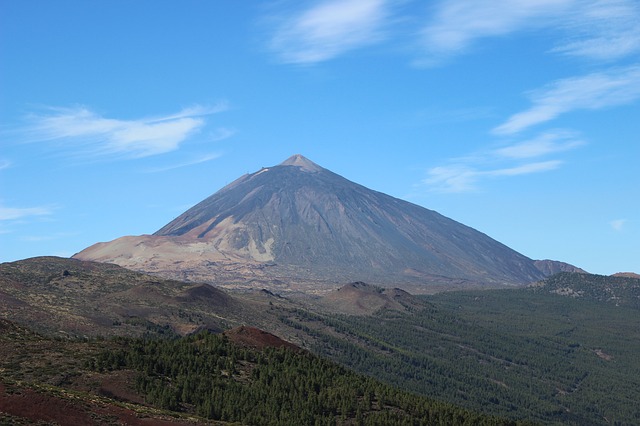
Tenerife is a very adventurous island, with sports and outdoor activities aplenty. Unfortunately, participation in these activities can run the risk of injury. Tenerife has five major hospitals, in both the north and south of the island. In addition to these, Tenerife also has many medical centres and chemists, for smaller, non-serious issues.
Medical centres and chemists can be identified by a green + symbol, often located on a sign in front of the venue. Most hospitals and medical centres have staff who speak both Spanish and English, however if you’re looking for your native language, it’s best to consult your embassy to point you in the right direction.
If your home country is part of the European union, it’s recommended you obtain an EHIC (European Health Insurance Card). This allows all EU residents to have access to state-provided health care at a lower cost or entirely free of charge. If your country is not part of the European union, a sufficient travel insurance policy should cover you for most medical costs on the island. For a great nomad insurance option, check out World Nomads policies, which can be purchased online, anywhere, anytime.
In general, participating in any strenuous activity on the island you will be expected to sign a safety agreement before starting. The staff responsible for your safety should be qualified and trained to handle any emergencies, helping to escalate it to health professionals if the injury is serious.
Make sure you are fully covered by reading our full Digital Nomad Travel Insurance guide.
As a digital nomad, you may find time to pick up extra work in Tenerife, alongside your online methods of employment. Tenerife is a tourism focused island, with jobs regularly focused in this sector. Some jobs you can look into are:
- Watersport Instructor. If you are a qualified surfer, fisherman, kayaker or anything in between, you can teach locals and tourists.
- Tour Guide or Personal Driver. If you’ve spent some time on the island, you can consider being a tour guide, or a personal driver for tourists.
- Skipper. If you have a boat license, you can consider offering personal ocean tours, fishing tours or steering the ferries between the islands.
- Restaurant Work. There’s plenty of cafes, restaurants and bars dotted around the island. If you have restaurant experience, you can consider working as a waiter, bartender, chef or kitchenhand.
- Hotel Employee. Mostly along the south of the island are lots of resorts, Airbnbs, hotels and motels. You can consider working as a housekeeper, concierge, front desk assistant or hotel maintenance within these properties.
As of January 2020, COVID has drastically affected many of the roles available within this list. Many of the locals of the island have missed the Summer 2020 season due to the travel restrictions, drastically affecting their financials for the year. Please take into consideration the locals of the island and their need for employment, before applying.
If you have online skills, join the many Facebook groups available for digital nomads, and see if you can offer any of your services. You will find many nomads looking for a skill exchange, and this will reduce the risk of taking jobs from locals.
Check out our Digital Nomads Jobs Postings to find the best jobs available for Digital Nomads.
Tenerife Overall Budget: $1530 per Month
Tenerife is an extremely affordable island, with many opportunities to make your paycheck stretch far. Many of the activities to fill your days can be free – every beach is free to visit, walking the boardwalk alongside is free, and ocean swimming is also available, without having to pay a single cent.
A family of four estimated monthly costs are just over €2000, whilst a single person’s cost is almost €600. This is not taking into account rent costs. Renting a one-bedroom apartment costs anywhere from €400-€600 monthly, depending on where you choose to live.
A meal in a restaurant is around €10, with the more luxurious options costing around €50 for two. Pints of the local beers can be found for €1, and a cup of coffee less than €2.
If choosing for paid entertainment, fitness clubs cost around €35 for a monthly pass, and a rental on a court (i.e. tennis) is about €15 for an hour. A cinema ticket will set you back €8.
A week’s worth of groceries can cost around €20, with many options to save even further on that, by visiting LIDL and purchasing your fruits and vegetables locally. Overall, the cost of living in Tenerife is very comfortable.
Of course, due to the low cost of living, salaries are often reflected in this, with the average Tenerife local earning just over €1000 a month. If choosing to live and work in Tenerife, you will need to take the smaller salaries into consideration.
Help us keep the rating accurate
This contact form is available only for logged in users.
Related Articles
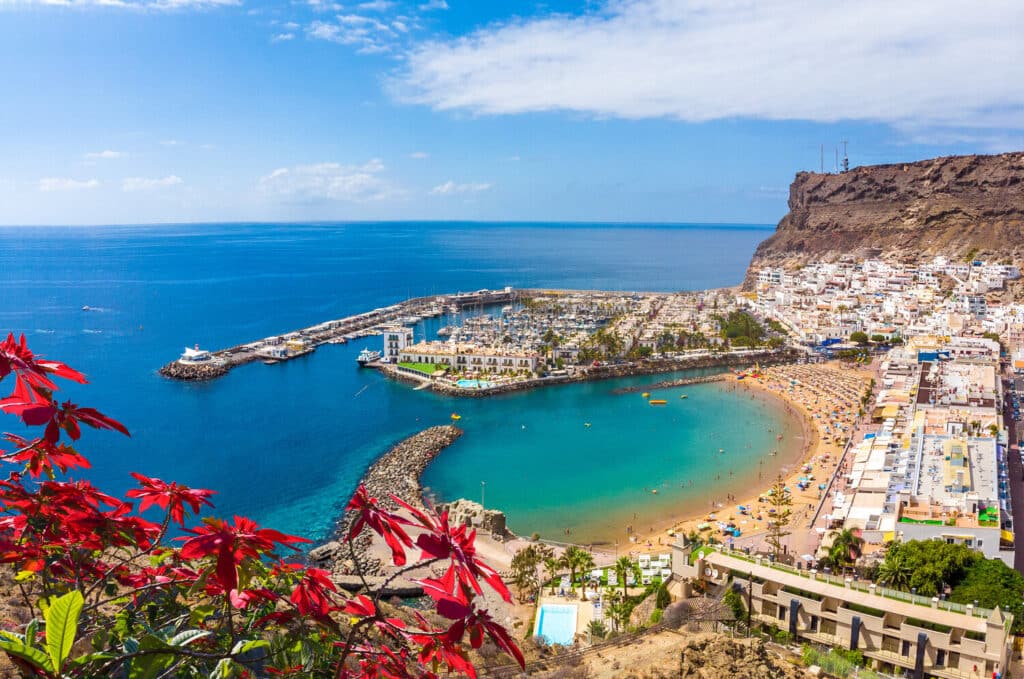
Gran Canaria, Canary Islands

Azores, Portugal

Gili Islands, Indonesia

Hawaii, United States

Sal, Cape Verde

You must be logged in to post a comment.
Fantastic overview of the city – your experience and the whole thing!
I think Tenerife is going to be one of the best destinations for Digital Nomads once travel is back to normal and I found this city guide super helpful!!!
Thank you Rosia!
Forgot Password?
Forgot your password?
Lost your password? Please enter your email address. You will receive mail with link to set new password.
Back to login
Your compare list
There was a problem reporting this post.
Block Member?
Please confirm you want to block this member.
You will no longer be able to:
- See blocked member's posts
- Mention this member in posts
- Invite this member to groups
- Message this member
- Add this member as a connection
Please note: This action will also remove this member from your connections and send a report to the site admin. Please allow a few minutes for this process to complete.
Tenerife Travel Restrictions – Updated COVID-19 Rules for Visitors
- Post author By canariasacross
- Post date 12.12.2023
Tenerife, a beautiful island in the Canary Islands, welcomes travelers from all around the world with its stunning landscapes and vibrant culture. However, due to the ongoing COVID-19 pandemic, there are certain measures and restrictions in place to ensure the safety of both residents and visitors.
Traveling to Tenerife requires careful planning and adherence to the current regulations. Before your trip, it is crucial to stay informed about the latest updates regarding testing, quarantine rules, and other important guidelines. These measures are put in place to control the spread of COVID-19 and protect the health of everyone on the island.
One of the key aspects to consider is testing. All travelers, irrespective of their vaccination status, are required to present a negative COVID-19 test result taken within a specified time frame before their arrival. This is essential to minimize the risk of importing the virus to the island. It is also advisable to keep yourself updated on the specific testing requirements imposed by the authorities at your departure location.
Quarantine rules may vary depending on the situation. For example, if you are fully vaccinated and have a negative test result upon arrival, you may not be required to quarantine. However, if you do not meet these criteria, a mandatory quarantine period may be imposed. It is crucial to familiarize yourself with the current quarantine rules to avoid any inconveniences during your stay on the island.
Remember to always follow the rules and guidelines set by the local authorities in Tenerife. This includes wearing face masks, practicing social distancing, and regularly sanitizing your hands. By staying informed and acting responsibly, we can all contribute towards creating a safe and enjoyable travel experience for everyone.
Travel Restrictions
Due to the ongoing COVID-19 pandemic, travel to Tenerife is subject to certain measures and restrictions. It is important for travelers to be aware of the rules in place to ensure a safe and smooth journey.
Before traveling to Tenerife, all visitors are required to undergo testing for COVID-19. This may include PCR tests or rapid antigen tests. The specific testing requirements may vary depending on the country of origin.
In addition to testing, travelers may also be required to quarantine upon arrival in Tenerife. The length of the quarantine period will depend on the current regulations and guidelines. It is important to check the latest information before planning your trip.
It is also worth noting that there may be restrictions on certain activities or attractions in Tenerife. This could include limits on the number of visitors allowed, mandatory mask-wearing, or social distancing measures. It is important to follow all local rules and regulations to ensure the safety of yourself and others.
Before traveling, it is advisable to check the official government websites for the most up-to-date information on travel restrictions and measures in place. This will help you plan your trip accordingly and ensure a smooth travel experience.
Mandatory Testing
In response to the ongoing COVID-19 pandemic, Tenerife has implemented strict measures and rules for travelers. One of the key requirements is mandatory testing.
- All travelers entering Tenerife must undergo a COVID-19 test before their arrival.
- The test must be taken within a specific timeframe, usually no more than 72 hours before travel.
- The results of the test must be negative in order for the traveler to be allowed entry.
These testing requirements are in place to minimize the risk of spreading COVID-19 and to ensure the safety of both residents and visitors on the island.
If a traveler tests positive for COVID-19, they will be required to quarantine and follow the local guidelines and protocols. This may include self-isolating for a certain period of time and following any additional testing requirements.
It is important for travelers to stay informed about the current testing regulations and guidelines before traveling to Tenerife. The rules and requirements may vary depending on the country of origin and the current situation regarding the pandemic.
By complying with the mandatory testing rules, travelers can contribute to the efforts to control the spread of COVID-19 and help ensure a safe travel experience for everyone visiting Tenerife.
Quarantine Rules
During the COVID-19 pandemic, Tenerife has implemented strict quarantine rules to help control the spread of the virus and protect the health and safety of its residents and visitors. These quarantine rules are in line with the restrictions and measures set by the local authorities and health organizations.
Travelers arriving in Tenerife may be required to undergo quarantine upon entry. The duration of the quarantine can vary depending on the individual’s circumstances and the prevailing COVID-19 situation at the time. It is important to check the latest rules and regulations before planning your trip to Tenerife.
In addition to quarantine, travelers may also be subjected to other COVID-19 measures, such as testing. Testing requirements can vary based on factors such as the country of origin and the traveler’s vaccination status. It is essential to stay updated on the testing rules and requirements to ensure compliance and a smooth travel experience.
It is crucial to follow all quarantine rules and restrictions imposed by the local authorities in Tenerife. Failure to comply with quarantine regulations may result in penalties or legal consequences. Quarantine serves as an important tool in preventing the spread of COVID-19 and protecting the health and well-being of the community.
As the situation with the COVID-19 pandemic continues to evolve, it is necessary to stay informed about the latest quarantine rules, travel advisories, and restrictions in Tenerife. By staying aware and adhering to the necessary rules and measures, we can all contribute to minimizing the impact of the pandemic and ensuring a safe and enjoyable experience for everyone.
Vaccination Requirements
As part of the efforts to control the spread of COVID-19, Tenerife has implemented certain restrictions and rules regarding travel to the island during the pandemic. One of the key measures in place is the vaccination requirement for travelers.
All visitors to Tenerife are required to provide proof of vaccination against COVID-19. This means that you must have received a complete course of an approved vaccine at least two weeks prior to your arrival on the island. Accepted vaccines include those authorized by the European Medicines Agency (EMA) or the World Health Organization (WHO).
If you have not been vaccinated or have not completed the required course, you may be subject to additional measures, such as mandatory testing or quarantine upon arrival in Tenerife. It is important to check the specific guidelines and requirements before planning your trip to ensure compliance with the current regulations.
By implementing these vaccination requirements, Tenerife aims to protect its residents and visitors from the spread of COVID-19 and ensure a safe and enjoyable travel experience for everyone. It is essential to follow the guidelines and cooperate with the authorities to help mitigate the impact of the pandemic.
Mask Use Guidelines
In light of the ongoing COVID-19 pandemic, there are certain regulations and measures in place regarding mask usage in Tenerife. These guidelines aim to protect both locals and travelers and minimize the spread of the virus.
Importance of Wearing Masks
Wearing a mask is a crucial step in preventing the transmission of COVID-19. It has been proven that the virus spreads through respiratory droplets, which can be released when an infected person talks, coughs, or sneezes. Masks act as a barrier, reducing the risk of inhaling or exhaling these droplets.
Quarantine, testing, and other restrictions are essential, but mask usage is an additional preventive measure that should not be overlooked.
Mask Requirements in Tenerife
In Tenerife, wearing masks is mandatory in various public spaces to ensure the safety of everyone. Here are the key guidelines to follow:
- Indoor Spaces: Masks must be worn in all indoor public areas, including shops, restaurants, and public transport.
- Outdoor Spaces: Masks should be worn in crowded outdoor spaces or situations where maintaining a safe distance is not possible.
- Social Gatherings: Masks should be worn during social gatherings, even if they are held outdoors.
It is important to note that wearing a mask does not replace the need for maintaining physical distance and practicing good hygiene, such as regular handwashing.
By adhering to these mask usage guidelines, we can collectively contribute to the prevention of the spread of COVID-19 in Tenerife and ensure a safer environment for everyone, locals, and travelers alike.
Social Distancing Measures
In order to prevent the spread of COVID-19, strict social distancing measures have been implemented in Tenerife. These measures are aimed at minimizing contact between individuals and reducing the risk of transmission.
Quarantine and Travel Restrictions
Travel restrictions have been imposed in Tenerife to control the influx of tourists and limit the spread of the virus. Visitors are required to follow quarantine protocols upon arrival, depending on the country they are traveling from. Mandatory quarantine periods can range from 7 to 14 days, with individuals being required to stay in designated facilities or self-isolate in their accommodations.
COVID-19 Testing
All travelers arriving in Tenerife are required to undergo COVID-19 testing. This is to ensure that individuals entering the island are not carrying the virus and to identify any potential cases early. Testing may be conducted prior to departure or upon arrival, depending on the specific requirements set by the authorities.
Measures and Rules
It is mandatory to wear face masks in public spaces and maintain a safe distance of at least 1.5 meters from others. This applies to both indoor and outdoor areas. Restaurants and bars have implemented capacity limits and modified seating arrangements to ensure social distancing. Hand sanitizing stations are available in public places, and frequent hand hygiene is encouraged.
These measures and rules are subject to change based on the current COVID-19 situation in Tenerife. It is important to stay updated with the latest guidelines and follow them accordingly to ensure the health and safety of oneself and others.
Capacity Limitations
As part of the tenerife COVID-19 measures, there are capacity limitations in place to ensure the safety of residents and visitors. These limitations aim to control the spread of the virus and avoid overwhelming the healthcare system.
Restaurants, bars, and other public places are required to operate at reduced capacity to allow for physical distancing. This means that fewer people are allowed inside these establishments at a time. It is advisable to make reservations in advance to secure a table.
Hotels and accommodations are also operating at limited capacity to ensure social distancing and reduce the risk of COVID-19 transmission. This may result in reduced availability or longer wait times for booking a room.
Public transport, including buses and taxis, are also implementing capacity limitations to maintain physical distancing. Passengers may need to wait longer or consider alternative transportation options during peak times.
It is important to familiarize yourself with these capacity limitations and plan accordingly for your trip to Tenerife. Make sure to check the latest rules and regulations before traveling and be prepared for possible changes or additional testing requirements due to the ongoing pandemic.
Remember to follow all COVID-19 travel protocols, including wearing a mask, practicing good hygiene, and following any quarantine or testing requirements in place. By adhering to these measures, we can all contribute to the safety and well-being of both residents and visitors in Tenerife.
Curfew Hours
Tenerife, like many other places around the world, has implemented strict COVID-19 regulations and measures to control the spread of the virus. One of these measures is the enforcement of curfew hours.
Curfew hours refers to the designated time period during which individuals are required to stay at home and not be outside unless for essential reasons. These curfew hours are in place to minimize social contact and reduce the risk of COVID-19 transmission.
In Tenerife, the curfew hours currently start at 10 p.m. and end at 6 a.m. This means that between these hours, individuals must stay at their place of residence unless they have a valid reason to be out, such as to seek medical attention, commute to and from work, or to walk their pets within a 1-kilometer radius of their home.
It is important to note that the curfew hours may be subject to change based on the evolving situation of the pandemic. Therefore, it’s crucial for residents and visitors to stay updated with the latest information and adhere to the rules set by the local authorities.
Failure to comply with the curfew hours and other COVID-19 regulations in Tenerife may result in fines and penalties. Therefore, it is essential for everyone to follow the guidelines to help protect themselves and others from the virus.
Additionally, before traveling to Tenerife, it is recommended to check the testing and quarantine requirements in place. The pandemic situation can vary, and it’s important to be aware of any travel restrictions or protocols that may be in effect.
The enforcement of curfew hours is one of the measures implemented in Tenerife to combat the spread of COVID-19. By adhering to these regulations, individuals can contribute to keeping themselves and their community safe. It’s essential to stay informed about any changes in the curfew hours and other regulations to ensure compliance and minimize the risk of infection. The ongoing testing, quarantine, and travel rules are important factors to consider when planning a visit to Tenerife during the pandemic.
Entry Requirements
When traveling to Tenerife during the COVID-19 pandemic, it is important to be aware of the entry requirements set in place to ensure the safety of both residents and tourists. These requirements include testing, quarantine, and certain restrictions.
Prior to your departure to Tenerife, it is mandatory to provide a negative COVID-19 test result. The test must have been conducted within 72 hours before your arrival on the island. It is important to make sure that the test is a PCR or antigen test and not an antibody test.
Quarantine and Restrictions
Currently, travelers arriving in Tenerife are not required to quarantine upon arrival, as long as they provide a negative test result. However, it is essential to adhere to the local regulations and health measures. It is recommended to stay updated on the latest travel advice and restrictions set by the local authorities.
Travelers are also advised to download the tracking app “Radar COVID” upon arrival, which helps to trace and contain the spread of the virus.
It is important to note that these entry requirements may change as the situation develops. Therefore, it is crucial to stay informed and regularly check for updates before and during your travel to Tenerife.
Health Declarations
As part of the efforts to contain the spread of COVID-19, Tenerife has implemented health declarations for travelers. These declarations are crucial in ensuring the safety of both the local population and visitors.
Travelers are required to fill out a health declaration form, which includes questions about their health and recent travel history. The form serves as a self-assessment tool to identify individuals who may have been exposed to the virus or are experiencing symptoms.
By completing the health declaration, individuals are acknowledging their responsibility to follow the quarantine measures and other health protocols in place. This helps in monitoring and controlling the spread of the virus within the community.
In addition to the health declaration form, travelers may also be required to provide proof of a negative COVID-19 test result. This is to ensure that individuals entering the island are not carrying the virus and posing a risk to others.
It is important to note that the health declaration and testing requirements may change as the pandemic situation evolves. Travelers are advised to stay updated with the latest restrictions and rules before their trip to Tenerife.
Complying with the health declarations and other measures is vital for the safety and well-being of everyone. By working together and following the guidelines, we can help protect ourselves and control the spread of COVID-19.
Insurance Coverage
When planning your travel to Tenerife during the COVID-19 pandemic, it is important to consider insurance coverage. Many insurance providers now offer specific policies that cover COVID-related expenses and risks. These policies can provide financial protection in case you need to cancel or rearrange your trip due to quarantine measures or travel restrictions.
Before purchasing an insurance policy, it is crucial to carefully review the terms and conditions. Make sure the policy covers any expenses related to COVID-19, including testing, medical treatment, and accommodation costs in case of quarantine. Additionally, check if the policy includes coverage for emergency medical evacuation.
Testing Requirements
Before traveling to Tenerife, it is important to check the testing requirements imposed by the local authorities. Most countries now require travelers to present a negative COVID-19 test result taken within a specific timeframe before departure. Insurance policies may cover the costs of these tests, so it is recommended to verify this with your provider.
Rules and Measures in Tenerife
During your stay in Tenerife, it is important to adhere to the local COVID-19 rules and measures. These may include wearing face masks in public places, practicing social distancing, and following hygiene protocols. Compliance with these rules not only ensures your safety but also can potentially affect your insurance coverage.
By having appropriate insurance coverage, you can have peace of mind during your visit to Tenerife, knowing that you are financially protected in case of unforeseen expenses or disruptions caused by the COVID-19 pandemic.
Public Transportation
When traveling on public transportation in Tenerife during the COVID-19 pandemic, it is important to be aware of the rules and restrictions in place. These measures have been put in place to ensure the safety of passengers and to prevent the spread of the virus.
One of the main rules is the mandatory use of face masks while on board public transportation. Passengers are required to wear masks that cover their nose and mouth at all times. This rule applies to all forms of public transportation, including buses, trams, and taxis.
In addition to wearing masks, passengers may also be subject to temperature checks and other screening measures before boarding public transportation. These measures are in place to identify any potential cases of COVID-19 and to prevent those who may have been exposed to the virus from traveling.
It is important to note that there may be additional restrictions and measures in place for passengers traveling from certain locations or who have recently arrived in Tenerife. This may include mandatory quarantine periods or COVID-19 testing requirements. It is recommended to check with local authorities or the transportation provider for the most up-to-date information before traveling.
By following these rules and regulations, passengers can help prevent the spread of COVID-19 while using public transportation in Tenerife. It is important to stay informed and to adhere to any additional guidelines provided by authorities to ensure a safe and smooth travel experience.
Restaurants and Bars
Restaurants and bars in Tenerife have implemented various measures to ensure the safety of their customers during the COVID-19 pandemic. These measures include strict cleaning protocols, social distancing guidelines, and the use of masks by staff members.
Due to the current COVID-19 situation, there are certain restrictions and guidelines in place for dining in restaurants and bars in Tenerife. Customers may be required to undergo COVID-19 testing before entering certain establishments, especially if they are travelers from high-risk areas. This testing helps to prevent the spread of the virus and ensures the safety of both customers and staff members.
Additionally, some restaurants and bars may have limited seating capacity to comply with social distancing guidelines. It is best to make a reservation in advance to secure a table. Customers are also advised to follow any additional rules or instructions provided by the establishment to ensure a safe dining experience.
Travel Restrictions and Quarantine
It is important to note that there may be travel restrictions in place for individuals traveling to Tenerife from certain regions or countries. These restrictions may include mandatory quarantine upon arrival or the requirement to present a negative COVID-19 test result.
As part of the efforts to control the spread of COVID-19, Tenerife has implemented testing requirements for certain activities, including dining in restaurants and bars. It is advisable to check the specific testing requirements and guidelines set by the local authorities before planning your visit to Tenerife.
Hotels and Accommodations
Due to the ongoing COVID-19 pandemic, the government of Tenerife has implemented various restrictions and measures to ensure the safety of residents and visitors. These measures also include guidelines for hotels and accommodations.
All hotels and accommodations establishments in Tenerife are required to follow strict health and safety protocols to prevent the spread of the virus. This includes regular disinfection of common areas, enforcing social distancing rules in communal spaces, and providing hand sanitizing stations throughout the premises.
Guests may be required to follow specific quarantine or isolation measures upon arrival, depending on their country of origin or recent travel history. It is important for travelers to check the latest travel advisories and guidelines before making any hotel or accommodation bookings.
In addition to these restrictions, hotels and accommodations may also have their own COVID-19 testing rules in place. Some establishments might require guests to show a negative COVID-19 test result before check-in. It is advisable to contact the hotel or accommodation directly for their specific testing requirements.
It is crucial for travelers to understand and adhere to these regulations to ensure a safe and enjoyable stay in Tenerife. By following the guidelines set by the local authorities and hotels, everyone can contribute to curbing the spread of the virus and maintaining a safe environment for all.
Tourist Attractions
Tenerife is known for its stunning tourist attractions, offering a diverse range of activities for visitors to enjoy. However, due to the ongoing COVID-19 pandemic, there are certain measures and restrictions in place to ensure the safety of tourists and locals alike.
One of the main restrictions imposed is the requirement for travelers to quarantine upon arrival in Tenerife. This means that all visitors must undergo testing for COVID-19 and adhere to a period of self-isolation until the results are obtained.
Despite these measures, there are still plenty of attractions open to tourists in Tenerife. The island boasts beautiful beaches, such as Playa de Las Teresitas and Playa del Duque, where visitors can relax and enjoy the sun. Additionally, there are hiking trails in the stunning Teide National Park, where travelers can explore the unique volcanic landscape.
In terms of cultural attractions, the city of Santa Cruz de Tenerife offers a variety of museums and historic sites to explore. The Museum of Nature and Man showcases the natural and cultural history of the island, while the Auditorio de Tenerife is a must-visit for music and architecture enthusiasts.
It’s important for tourists to keep in mind that COVID-19 restrictions may impact the availability and access to certain attractions. It’s advisable to check the latest travel advisories and guidelines before visiting any tourist sites.
By following the necessary COVID-19 restrictions and guidelines, tourists can still enjoy the beautiful attractions that Tenerife has to offer while ensuring the safety of themselves and others.
Beaches and Outdoor Activities
Tenerife, like many other destinations around the world, has implemented strict measures and rules due to the COVID-19 pandemic. However, despite the restrictions, visitors can still enjoy the beautiful beaches and outdoor activities that Tenerife has to offer.
When visiting the beaches in Tenerife, it is important to follow the COVID-19 safety guidelines. This includes wearing a mask when not in the water or sunbathing, practicing social distancing, and respecting any capacity restrictions that may be in place.
Tenerife offers a wide range of outdoor activities for travelers to enjoy while still adhering to the necessary COVID-19 precautions. From hiking in the breathtaking Teide National Park to exploring the picturesque coastal trails, there are plenty of options for those looking to experience the natural beauty of the island.
It is important to note that some activities may have additional restrictions or require advanced bookings in order to control the number of visitors. Make sure to check the latest information and guidelines before planning any outdoor activities.
Overall, while the COVID-19 pandemic has brought about travel restrictions and measures, Tenerife still offers plenty of opportunities to enjoy the outdoors and relax on the beautiful beaches. By following the rules and guidelines in place, visitors can have a safe and enjoyable experience while exploring all that Tenerife has to offer.
Nightclubs and Entertainment
Nightclubs and entertainment venues in Tenerife have been significantly impacted by the COVID-19 pandemic. Strict measures and restrictions are in place to ensure the safety of both visitors and residents.
In accordance with the current regulations, nightclubs in Tenerife remain closed to prevent the spread of the virus. This means that tourists and locals are not able to enjoy the typical nightlife experience that the island is known for. The closure of these venues is a necessary measure to reduce the risk of transmission in crowded indoor spaces.
As the situation evolves and the pandemic is brought under control, it is expected that nightclubs will be able to reopen. However, it is likely that there will be guidelines and rules in place to ensure the safety of patrons. These may include limited capacity, mandatory mask-wearing, and increased sanitation measures.
It is important to stay informed about the current restrictions and regulations regarding nightclubs and entertainment in Tenerife. Travelers should check with local authorities and establishments for the most up-to-date information. Compliance with these rules is crucial to help prevent the spread of COVID-19 and protect the health and well-being of the community.
Testing and Quarantine
Travelers visiting Tenerife may be required to undergo testing for COVID-19 and/or quarantine upon arrival. These measures are in place to minimize the risk of importing the virus into the island and to protect the local population. It is important to check the specific requirements and guidelines before traveling to ensure compliance with these measures.
Other Restrictions
In addition to the restrictions on nightclubs and entertainment venues, there may be other measures in place in Tenerife to control the spread of COVID-19. These could include limitations on gatherings, mandatory mask-wearing in public spaces, and social distancing guidelines. It is important to stay updated on these restrictions and comply with them to contribute to the collective efforts in combating the pandemic.
Shopping Centers
While visiting Tenerife during the ongoing COVID-19 pandemic, it is important to be aware of the rules and restrictions in place at shopping centers. These measures are in place to ensure the safety of both shoppers and staff.
To adhere to social distancing guidelines, shopping centers in Tenerife have implemented capacity limitations. This means that there will be a maximum number of people allowed inside the shopping center at any given time. To avoid long waits, it is recommended to plan your visit accordingly and to be patient if there is a queue outside the center.
Hygiene Measures
Shopping centers in Tenerife have also implemented strict hygiene measures to prevent the spread of COVID-19. These measures include regular cleaning and disinfection of common areas, such as restrooms and escalators. Hand sanitizing stations are also available throughout the shopping center for visitors to use.
In addition to these measures, it is important to follow general hygiene practices such as wearing a face mask, practicing hand hygiene, and maintaining a safe distance from others while inside the shopping center.
Some shopping centers in Tenerife may also offer COVID-19 testing services. This allows visitors to get tested for the virus conveniently while shopping. These testing services may require an appointment or have specific operating hours, so it is advisable to check the shopping center’s website or contact them directly for more information.
It is important to stay informed about the latest COVID-19 regulations and guidelines in Tenerife before planning a visit to shopping centers. By following these rules and restrictions, we can all contribute to preventing the spread of the virus and ensuring the safety of everyone in the community.
Events and Festivals
In light of the ongoing COVID-19 pandemic, events and festivals in Tenerife are being held with strict rules and regulations in place. These measures are designed to ensure the safety and well-being of both residents and tourists alike.
One of the main requirements for attending events and festivals in Tenerife is providing proof of a negative COVID-19 test. This testing requirement helps to minimize the risk of spreading the virus among attendees. Individuals must present a negative test result obtained within a specified time frame before the event.
Additionally, organizers are implementing capacity restrictions to maintain social distancing. Venues are being carefully monitored to ensure that crowds do not exceed the recommended limits. By controlling the number of people in attendance, organizers aim to prevent overcrowding and reduce the risk of virus transmission.
Furthermore, attendees may be required to adhere to quarantine measures or follow other specific guidelines. This could include wearing masks, practicing good hand hygiene, and maintaining distance from others. It is crucial for attendees to familiarize themselves with the specific rules of each event or festival they plan to attend to ensure compliance with all regulations.
These restrictions and measures are subject to change as the COVID-19 situation evolves. It is important for individuals to stay updated with the latest guidelines and regulations issued by health authorities and event organizers in Tenerife. By following these protocols, everyone can contribute to keeping events and festivals safe and enjoyable for all.
Sports Activities
If you’re a sports enthusiast planning to visit Tenerife during the COVID-19 pandemic, it’s important to be aware of the measures and restrictions in place. The island has implemented specific rules to ensure the safety of both residents and visitors.
Before traveling to Tenerife, it is essential to check the current COVID-19 testing and quarantine requirements. Depending on the country of departure, you may be required to provide a negative test result or undergo quarantine upon arrival. Make sure to stay updated with the latest travel advisories and regulations.
Tenerife Sports Facilities
Tenerife offers a wide range of sports facilities, including gyms, sports centers, and outdoor spaces. However, due to the COVID-19 restrictions, there might be limitations on the capacity and activities allowed in these venues. It’s important to check with the specific facility or sports club regarding their regulations and availability.
Many sports centers have implemented strict hygiene measures to ensure a safe environment for their customers. These measures may include the mandatory use of face masks, temperature checks, limited group sizes, and increased sanitization practices.
Outdoor Activities
Tenerife is known for its outdoor activities, such as hiking, cycling, and water sports. These activities provide a great opportunity to enjoy the island’s natural beauty while maintaining social distancing. However, it’s important to follow the COVID-19 guidelines and restrictions in place.
When participating in outdoor sports activities, it’s crucial to maintain a safe distance from others and avoid crowded areas. Keep in mind that certain areas or trails may have specific rules or restrictions due to COVID-19. Stay informed and follow any signage or instructions provided by local authorities.
As the situation regarding COVID-19 can change rapidly, it’s essential to stay updated on the latest guidelines and restrictions before engaging in any sports activities in Tenerife. By following the rules and regulations, you can enjoy your favorite sports while ensuring the safety of yourself and others.
Medical Facilities
Tenerife has a well-equipped healthcare system that is prepared to handle the challenges of the COVID-19 pandemic. Medical facilities on the island are following strict safety measures and regulations to ensure the health and well-being of both residents and visitors.
In case you need medical assistance during your stay in Tenerife, it is important to know that the island has a number of hospitals, clinics, and pharmacies that are available to provide the necessary healthcare services. These facilities have implemented restrictions and protocols to prevent the spread of the virus.
If you suspect that you have COVID-19 symptoms while in Tenerife, it is recommended to contact the local health authorities immediately. They will guide you on the necessary steps to take, which may include quarantine measures and testing. It is important to follow these guidelines to protect yourself and others in order to minimize the spread of the virus.
During your visit, it is essential to have proper travel insurance that covers any medical expenses, including COVID-19 related treatments. This will give you peace of mind and ensure you are well taken care of in case of any unexpected health issues.
To stay informed about the latest rules and regulations regarding healthcare facilities, it is advisable to regularly check the official government websites and follow any updates or announcements. It is also recommended to maintain good hygiene practices, such as frequent hand washing, wearing masks, and practicing social distancing, to further protect yourself from the virus.
Emergency Contacts
In case of any emergencies related to COVID-19, it is important to have the relevant contacts readily available. Here are some emergency contacts to keep in mind while in Tenerife:
Local Healthcare Authorities
- Tenerife COVID-19 Hotline: +34 900 555 555
- Tenerife General Hospital: +34 922 678 000
Embassies and Consulates
If you are a foreign traveler in Tenerife and require assistance, reach out to your country’s embassy or consulate. Here are some contact details:
- U.S. Embassy in Spain: +34 915 872 200
- British Embassy in Spain: +34 913 342 194
- German Embassy in Spain: +34 913 196 000
Remember to follow all quarantine, testing, and COVID-19 restrictions and measures in place to protect yourself and others during the pandemic. Stay informed and stay safe!
Provincial Regulations
Tenerife, like all provinces in Spain, has implemented a range of measures to combat the spread of COVID-19. These regulations include rules on testing, quarantine, and restrictions that are in place due to the ongoing pandemic.
Travelers to Tenerife must provide proof of a negative COVID-19 test taken no more than 72 hours before arrival. This applies to both international visitors and residents returning from abroad.
Quarantine Guidelines
If a traveler arrives in Tenerife without a negative test, they will be required to take a test upon arrival and quarantine until the results are available. If the test is positive, the individual will be subject to a mandatory quarantine period.
Restrictions
Tenerife has implemented various restrictions to limit the spread of COVID-19. These include limits on the number of people allowed to gather, restrictions on the opening hours of businesses, and mandatory mask-wearing in public places.
It is important for both residents and visitors to familiarize themselves with these regulations and follow them to help keep Tenerife safe during the COVID-19 pandemic.
Visa Extension
If you are currently in Tenerife and have a visa that is expiring soon, you may be wondering about the options available to extend your stay during the COVID-19 pandemic. Fortunately, the authorities in Tenerife have implemented certain rules and measures to help individuals in such situations.
First and foremost, it is important to note that the visa extension process may vary depending on your specific circumstances and the type of visa you hold. It is recommended to contact the relevant authorities or consult with an immigration lawyer to understand the requirements and procedures specific to your case.
However, in general, Tenerife has implemented flexible measures to accommodate individuals who are unable to depart the island due to the pandemic-related travel restrictions. These measures include allowing visa extensions for individuals who can provide documentation and evidence of their inability to travel back to their home countries.
In some cases, visa holders may be required to provide proof of their COVID-19 test results and quarantine arrangements to support their request for a visa extension. It is important to stay updated on the latest travel and quarantine requirements imposed by Tenerife and provide the necessary documentation accordingly.
It is advisable to reach out to the immigration authorities as early as possible to initiate the visa extension process. Delays in applying for an extension may result in complications or potential overstays, which could have further consequences for your future travel plans.
It is also essential to gather all the required documents and evidence to support your visa extension application. This may include proof of your travel plans prior to the pandemic, evidence of canceled flights or travel bookings, and any other supporting documents requested by the authorities.
Overall, while the process of obtaining a visa extension during the COVID-19 pandemic in Tenerife may involve additional steps and requirements, the authorities have implemented measures to help individuals navigate these challenging circumstances. By staying informed and proactively engaging with the relevant authorities, you can increase your chances of successfully extending your visa and legally staying in Tenerife.
Returning Home Requirements
When traveling during the COVID-19 pandemic, it is important to be aware of the measures and restrictions in place to help prevent the spread of the virus. If you are planning to return home from Tenerife, there are certain requirements you need to follow.
COVID-19 Rules and Regulations
Before traveling back home, it is essential to familiarize yourself with the COVID-19 rules and regulations in your destination country. Each country has its own set of measures and restrictions in place, such as quarantine requirements, testing protocols, and travel advisories. Make sure to stay updated with the latest information and comply with all the necessary rules.
Quarantine and Testing
Many countries require travelers to undergo quarantine upon arrival or provide negative COVID-19 test results. It is important to check the specific requirements for your destination and make the necessary arrangements to comply with these measures. Be prepared to show proof of a negative test or follow any mandatory quarantine rules upon your return.
Traveling responsibly is crucial during these times. It is your responsibility to adhere to all the rules and regulations set by your destination country.
Tenerife COVID-19 regulations are subject to change. It is recommended to regularly check the official government websites or consult with your local embassy or consulate for the most up-to-date information before traveling.
Updated Guidelines
In light of the ongoing COVID-19 pandemic, Tenerife has implemented updated rules and regulations to ensure the safety of its residents and visitors. These guidelines aim to control the spread of the virus and protect public health.
Travel restrictions have been imposed to limit the number of people entering the island. All travelers are required to provide a negative COVID-19 test result taken within 72 hours prior to arrival. In addition, visitors are also subjected to health screening measures upon arrival.
Quarantine measures have been put in place for individuals who test positive for COVID-19 or have been in close contact with a confirmed case. These individuals are required to isolate for a certain period of time to prevent further transmission of the virus.
Face masks are mandatory in all public spaces, both indoors and outdoors. It is important to wear masks properly, covering both the mouth and nose, to maximize their effectiveness in reducing the risk of transmission.
Social distancing measures must also be observed, with individuals advised to maintain a distance of at least 1.5 meters from others who are not from the same household. This rule applies to all public places, including restaurants, shops, and public transportation.
It is crucial to stay updated with the latest guidelines and follow them diligently to protect yourself and others from the virus. Failure to comply with the rules may result in fines or other penalties. Remember, we are all in this together, and by adhering to these measures, we can help control the spread of COVID-19 in Tenerife.
Stay safe and stay informed!
Question-answer:
What are the current covid-19 regulations in tenerife.
The current COVID-19 regulations in Tenerife include wearing masks in public spaces, maintaining social distancing, and following any guidelines set by local authorities. It is also important to check for any travel restrictions or requirements before visiting Tenerife.
Do I need to quarantine when visiting Tenerife?
The need for quarantine when visiting Tenerife depends on the traveler’s country of origin and the current guidelines. Some countries may require visitors to quarantine upon arrival, while others may have specific testing requirements. It is important to check the specific regulations before traveling to Tenerife.
Can I travel to Tenerife right now?
Yes, you can travel to Tenerife right now. However, it is important to check for any travel restrictions or requirements before your trip. Some countries may have specific guidelines or entry requirements in place. It is also advisable to follow all COVID-19 safety precautions during your travel.
Are there any limitations on tourist attractions in Tenerife?
Yes, there may be limitations on tourist attractions in Tenerife due to COVID-19. Some attractions may have reduced capacity and require advance reservations. It is advisable to check the specific guidelines and regulations for each attraction before visiting.
What happens if I test positive for COVID-19 in Tenerife?
If you test positive for COVID-19 in Tenerife, you may be required to isolate and follow the guidelines set by local health authorities. This may include quarantining in a designated facility or your accommodation. It is important to have travel insurance that covers COVID-19-related expenses in case of any emergencies.
The current COVID-19 regulations in Tenerife include mandatory face mask wearing in public spaces, a limit on social gatherings to a maximum of 6 people, and a curfew from 10pm to 6am.
Yes, you can travel to Tenerife right now. However, it is important to check the specific entry requirements and travel restrictions in place, such as providing a negative COVID-19 test result.
Are there any quarantine requirements for travelers arriving in Tenerife?
Currently, there are no quarantine requirements for travelers arriving in Tenerife. However, it is recommended to check the latest information and guidance from the local authorities before traveling.
What attractions and activities are open in Tenerife?
Many attractions and activities in Tenerife are open, including beaches, restaurants, and shops. However, some may have capacity limitations and may require advance booking. It is advisable to check ahead and make reservations if necessary.
Related posts:
- Tenerife is facing new COVID-19 restrictions – How will it affect tourism?
- Tenerife COVID Testing Requirements – Do I Need a COVID Test to Travel to Tenerife?
- Tenerife’s New COVID Rules – Everything You Need to Know
- Does Tenerife need a COVID pass?
- Will Tenerife Require COVID Vaccine for Travelers? Everything You Need to Know
- Tenerife and the Impact of COVID-19 – How the Pandemic Has Changed the Paradisiacal Island’s Tourism Industry
- Do Canary Islands Require COVID Testing for Travel? Important Information for Travelers
- Latest Restrictions and Measures for Tenerife Amid the Ongoing COVID-19 Pandemic
Tenerife Gran Canaria Lanzarote Fuerteventura La Palma La Gomera El Hierro
- La Graciosa
- Fuerteventura
- Gran Canaria
- Means of Transport
- Natural Parks
- Theme Parks
- Aquatic and Theme Parks
- Hotels in Tenerife
- Hotels in Gran Canaria
- Hoteles de Fuerteventura
- Hotels in Lanzarote
- Hotels in La Palma
- Hotels in La Gomera
- Hotels in El Hierro
- Apartaments
- Canary Islands
- Prepare your holidays
- What to see
- Canary Food and Drinks
- Privacy and Policy
Necessary Documents to Travel to the Canary Islands
Find out which documents you ought to have to travel to the canary islands..
If you’re planning to visit another country it’s convenient to previously check if you have all the documentation needed as passport , citizen card and visa the most common documents requested for traveling. Moreover there are other documents that even when not essential, they might facilitate your traveling process.
If you’re buying a trip to another country through a travel agency , it should provide you all the information regarding passports , visas , sanitary formalities as well as offer you the possibility to sign an emergency assistance insurance that assures your repatriation expenses as well as transportation in case of accident, illness or death.
Personal identification document
This document might be used to enter and travel among the European Community Countries (including the Canary Island s), if you’re coming from another european country or other Spanish Region.
If you’re under 18 years old and travelling alone , you should take a mother/father permit or judicial permit. If you’re traveling with your father, mother or guardian , you should have the legal affiliation documentation.
This document should be issued in the Spanish Embassy on the tourist’s country of origin . This document you let you enter, work, study or just visit any of its cities . For the non-immigrant visitors that wish to come to the Canary Islands there are six types of visas:
- Transit Visa : Which will allow you to pass the international transit areas of a spanish airport or cross spanish territory
- Stay Visa : Which will allow you to stay for no more than three months uninterrupted on this country or successive stays for a period of time that summed up shouldn’t exceed threes months per semester counting on the first entry date.
- Residence Visa : This visa will allow you to live in Spain, although you shouldn’t perform any laboural or professional activity.
- Work and Residence Visa : This visa will allow you to live in Spain as well as perform a laboural activity.
- Study Visa : This visa will allow you to live in Spain while taking part on courses or particular studies. It will also allow you to realize investigation projects.
- Courtesy Visa : This visa is issued to all diplomatic agents, consular workers and international organization partners.
How should I know if I need a visa to enter in the Canary Islands?
First, you should know tha t foreign who wishes to enter in Spain should have a visa, unless it’s in one of the following conditions :
- You won’t need a visa if you’re staying for less than three months on a six-months interval and you have nationality from one of the following countries : Andorra, Argentina, Australia, Austria, Brazil, Brunei, Bulgaria, Canada, Chile, Chipre, Costa Rica, Croatia, El Salvador, Slovakia, Slovenia, United States, Estonia, Guatemala, Honduras, Hungary, Iceland, Israel, Japan, Lithonia, Liechtenstein, Lithuania, Malaysia, Malta, Mexico, Monaco, Nicaragua, Norway, New Zealand, Panama, Paraguay, Poland, Czech Republic, Korea, Romania, San Marino, Santa Sede, Singapur, Switzerland, Uruguay, Venezuela, Hong Kong, Macao and any country that belongs to the European Union .
- If you enter with the condition of refugee you won’t also need a ininterrumpida visa
- Crew members from ships who have sea agent identity document and commercial planes crew members who have their identity card, ticket and do not abandon the plane also don’t need any visa.
Driving License in the Canary Islands:
For the citizens of European Union you only need to bring your own driving license . For citizens from others countries you might need to bring an International Driving License .
European Health Card
This document replaces the old E-111 form. With this document you have the right to receive free medical assistance in every country within the European Union . This is valid for one year counting on the date you obtain it. To request this document you should present you medical card at your local Social Services.
Travel insurance
It’s advisable to hire a short term insurance . It might be very useful. You might request it to your travel agent .
Find out more information you need to know before your trip to the Canary Islands :
- Accommodation
- Communication
- Festivities
- Smoking and Drinking
- How to dress
- Health Assistance
- The Canary Islands Flag
- Tips and Taxes
- Disabled Facilities
Flight Offers:
Compare flight offers and book in advance to save some money.
Book now your Hotel or Apartment:
- Hotels in Arona
- Hotels in Costa Adeje
- Accommodation in Los Cristianos
- Accommodation in Santa Cruz de Tenerife
- Hotels in Las Palmas de Gran Canaria
- Hotels in Maspalomas
- Accommodation in Playa del Inglés
- Hotels in Corralejo
- Apartaments in Costa Teguise
- Hotels in Valle Gran Rey
Find the largest offer in car rental for your holidays:

The Ultimate Guide to Tenerife

Tired of scouring the internet for incomplete, incorrect or out of date information about Tenerife? TENERIFE GURU is your ultimate guide to Tenerife, covering everything you need to know about our amazing island.
Residencia in Tenerife – UK Nationals ONLY
Updated 20th february 2024, obtaining residencia in tenerife – (uk nationals only).
Can UK Nationals still apply for Residencia in Tenerife/Spain?
You can still apply, but in most cases you will first need to apply for and obtain a VISA from the Spanish Consulate in either London, Manchester or Edinburgh in the UK BEFORE travelling to Tenerife. The types of Visa available and how to apply are set out below. Once you obtain a Visa, it will grant you a fixed period to complete the remaining residencia steps after you arrive in Tenerife (namely Empadronamiento Certificate Application followed by Residencia Application).
OBTAINING A VISA TO LIVE, WORK OR RETIRE IN TENERIFE
There are 7 different types of visa available to live in Spain, including retirees, investors, executives of a multi-national company, participants in a sporting or cultural activity etc.
The most commonly applied-for visas include:
NON-LUCRATIVE VISA
For those not planning to work in Spain, you can obtain this visa if you can show an income of at least €2,259.60 euros a month (or €32,270 for a couple), plus €564.90 for each additional family member/child), plus private Spanish health insurance cover for all applicants. Applicants CANNOT do any paid work in Spain under this Visa.
GOLDEN VISA
Investing at least €500,000 Euros in property in Spain (this can be retrospective within the last few years – 4 years has been suggested but we have been unable to obtain official confirmation of this).
Only for highly skilled employees in a designated ‘shortage occupation’ position, which must be supported by the employer in question. Self Employed persons may also apply under the same criteria, by showing the full details and business plan of their proposed venture.
ENTREPRENEURSHIP VISA
Investing at least €1 Million Euros in Spanish Company Shares or Bank Accounts/Investments €2 Million Euros in Spanish Government Bonds.
STUDENT VISA
Enrolling in an accredited Spanish Higher-Education course, plus proof of financial means and medical insurance.
For those who do not qualify for any of the visas available, Spanish residency can sometimes be obtained in certain circumstances if your partner or a family relative is already registered as resident in Spain. Please check with the Spanish Consulate for the relevant criteria.
———————————————————————————————————————
To check eligibility for a Visa and to apply and/or to submit the application form and supporting documentation, you can check the latest requirements and book an appointment at your nearest Spanish Consulate office in the U.K. via the following link HERE
Spain generally imposes requirements to prove sufficient income to support the applicant and any dependents. Additional requirements include, but are not limited to, a criminal records certificate, a medical certificate, a financial reference (e.g. from a rental landlord or bank) and evidence that you have arrangements in place to transfer necessary funds to Spain (e.g. already having set up a bank account in Spain plus e.g. a direct debit to that account from your home bank, if your regular income comes from overseas).
Once you obtain your VISA and arrive in Tenerife, you may then proceed to apply for residencia by following the Step 1 and Step 2 procedures set out below.
Meanwhile, all UK Nationals can continue to enjoy Short Stays of up to 90 days during each 180 day window in the EU zone (including Tenerife).
HOW DOES THE SHENGEN RULE OF 90 DAYS TRAVEL IN EVERY 180 DAYS WORK?
UK passport holders can still visit the EU Shengen zone countries (which includes Tenerife/Spain) for up to 90 days in any 180 day period.
In other words, the first day you arrive in any EU country from 2021 onwards starts the clock ticking on a new 180 day period. During that 180 day window you can visit any combination of EU countries (including Spain/Tenerife) for any combination of 90 days in total. Once you extinguish that 90 day entitlement, you are barred from spending any more time in any EU country until the 180 day period expires.
Then, once that 180 day period expires, the very next time you step foot in any EU country, it triggers a new 180 day period, during which you can stay a further combination of 90 total days in any of the EU countries, and so on and so on.
No residency or visa application is required to enjoy the said 90 day window(s). You simply need a valid UK passport with more than 6 months validity remaining. However, to stay for longer in Tenerife/Spain, you currently need to apply for a VISA (detailed above).
Certain rag English press outlets in Spain continue to write utter nonsense on the subject. The latest ‘nugget’ is that the police are rounding up and deporting anybody who has overstayed the 90 day period. This nasty unsubstantiated rumour has now been debunked by the Spanish Ministry who has stated that there is no such policy to deport any Brit who has made Spain his or her home, but that they do recommend that anybody affected does now apply for residency as soon as possible, as failure to do so could affect any future legitimate Visa application. However, anyone leaving Spain as a serious or serial overstayer is likely to be subject to an interrogation at the airport and could be fined, or in serious instances, banned from entering Spain for whatever period the Spanish authorities may choose to impose. This will almost certainly be more closely monitored once the new digital ETIAS electronic travel system comes into force (estimated in 2024 / 2025)
Once you have obtained a Visa and have arrived in Tenerife, to obtain your TIE Residency Card, you will need to make 2 applications as follows:
Application Form EX20 (application for residencia approval)
In addition to the application form, you will also need:
- Valid unexpired UK Passport plus photocopy;
- NIE Certificate plus photocopy;
- Empadronamiento Certificate plus photocopy;
- Proof of Medical Cover (registration for Spanish state healthcare, or Spanish Private Health Insurance). For health insurance, proof of the most recent payment(s) will be required (e.g. from a bank transaction slip, but not a bank statement). A transaction slip can often be downloaded via online banking (look for the PDF envelope icon next to the transaction).;
- Proof of Financial Means – This is typically achieved by showing a Spanish bank account in your name with €5,350 balance for EACH applicant. The proof is a specialised bank certificate you can order, but a regular bank statement will not suffice. For those unable to raise such a lump sum, we recommend taking advice from a lawyer or other expert as to what may be accepted instead.
- 1 passport sized photo
- Completed form EX20 .
- Copy of the VISA you have obtained from the Spanish Consulate.
Once you have all documentation ready, you can apply for an appointment HERE Select Santa Cruz de Tenerife, then select the relevant office, then click on POLICIA – CERTIFICADOS DE RESIDENCIA
Please bear in mind that appointments in Playa de las Americas Police Station are almost never available and instead you may have to travel to Santa Cruz (Calle La Marina 20) to apply – and again return there later to collect your new TIE card.
If your application is in order, you will be issued with a receipt of application. This documente is deemed as legal permission to reside in Spain whilst your application is being approved (or rejected). According to official police sources, you can use this temporary document to travel out of Spain and be allowed re-entry as a resident, thereby avoiding the 90 day in 180 day rule.
Assuming your application is approved, then within a month of receiving that stamped approval, you must complete Application form EX23 to obtain the T.I.E. card and apply for another appointment, via same the booking link in Stage 1 above.
For UK Nationals following Brexit, the new TIE residencia cards will expire after 5 years (unless you have already had ‘permanent’ residence status for over 5 years (see below). However, any renewal should be little more than a rubber-stamping formality with a small fee.
Here is an example of the new TIE Residencia Card specifically for UK Nationals applying after 6th July 2020.
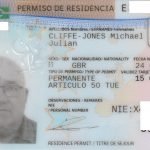
For UK Nationals, there is no longer any need to separately apply for “Permanent Residency” after completing 5 years of basic residency. This is because unlike with the old green cards, the new plastic TIE cards have a 5 expiry date. So when you later go to renew an initial TIE card upon its 5 year expiry, the police will note that you now qualify for Permanent Residency status, and hence will automatically renew and issue you a new plastic TIE card, this time marked as a ‘permanent’ one (although despite being called ‘permanent’ it still requires renewing every TEN years for a fee!).
UK NATIONALS already holding residencia in Spain – Swapping your existing residencia card for a voluntary T.I.E. card
If you already hold a green A4 or small green card residencia, then you DO NOT need to change it for a new TIE card. Many people are choosing to voluntarily change their cards, as they serve as an easier I.D. document than carrying a passport, but only whilst in Spain of course. Some officials are apparently refusing to accept the old style green residencias in certain situations. Sadly, this is pure ignorance on the part of the officials. The police have expressly confirmed that the old style green residencias are perfectly valid and hold the same status as the new TIE cards.
To switch from a green card to a new TIE card, firstly, download and complete Form EX23 , which can be found HERE . )
You must then apply for an appointment online HERE .
- choose your province
- then select ‘Trámites Cuerpo Nacional de Policia’
- then select ‘Policía Exp tarjeta asociada al Acuerdo de retirada ciudadanos británicos y sus familiares’
You must attend this appointment at the police station in person (not online, nor via Power of Attorney) with the following documentation:
- completed application form EX23
- proof you have paid the fee (via form ‘modelo 790, code 012’ – choose option ‘certificado de registro de residente comunitario’)
- passport type photograph (you must ensure this meets the Spanish administration’s requirements)
Certain police stations may also require you to provide photocopies of official documents such as your passport at your appointment, so it is advisable to bring photocopies as well as original documents.
Then, once the TIE card is ready for collection, you will need to return to the police station YOURSELF (not using your Power of Attorney) with your valid passport to collect the TIE card. Guru understands there is no time limit for such collection, so the next time you come to Tenerife should be ok.
What if I already obtained (or filed an application for) Spanish residency before 31st December 2021? Where do I now stand with my rights to live and work in Spain?
Well the good news is that anybody who applied for / or obtained Spanish residencia before 31st December 2020 (whether via the now-ancient ID photocard, the A4 green paper, the more recent green paper credit card size, or the new TIE card), your rights to live in Spain are now automatically protected under the Brexit Withdrawal Agreement and you do not have to do anything else.
However, for those holding one of the older forms of residencia, you can VOLUNTARILY choose to upgrade to the new-style T.I.E. Residency Card (a plastic card containing a photo etc, similar to the identity card for Spanish nationals, see example photo below). If you have already held your Spanish residency for more than 5 years, you that new TIE card will automatically carry “Permanent” status, and will require renewing after 10 years. Whilst those who have held Spanish residency for less than 5 years will automatically gain “Temporary” status and will need to renew their TIE card after holding it for 5 years.
For existing residents wishing to voluntarily upgrade to the new T.I.E. card, the procedure is set out further below under “ Obtaining a replacement Residency Card . Or for those holding an old green residencia, they can simply choose to keep their old green card or A4 paper, as their residency rights are already fully protected and guaranteed.
Once I have residency status, how long can I stay outside Spain before I lose it?
During your first 5 years of residency in Spain (i.e. under ‘temporary’ residency status), an absence of more than 6 months from Spain in any 12 month period will TECHNICALLY rescind your right to residency. However, it is unclear whether the authorities plan to actively monitor or enforce this rule once new ETIAS biometric border movement checks are introduced from late 2024 / 2025.
Once you have held a Spanish residency card for 5 or more years (and it hasn’t been actively revoked for any reason), you achieve ‘permanent’ resident status and cannot lose your rights to that Spanish residency unless you spend more than 5 continuous years out of Spain. So somebody with permanent residency rights could simply return to Spain every 4.5 years (and advisedly stay for more than 3 months!) in order to retain those rights.
The above rules apply regardless of whether you obtained your residency before or after the 31st December 2020 Brexit cutoff date.
If I apply for the TIE card residency, does that make me automatically tax resident in Spain? What is the difference between ‘residency’ and ‘tax residency’?
Some people are scared that registering for Spanish residencia (i.e. having a Green A4 certificate, Green Credit Card Sized card, or new T.I.E. card) will somehow make them tax resident in Spain. Technically, A TIE residencia application does NOT make you tax resident in Spain, nor does it affect your existing TAX RESIDENT status UNTIL you spend more than 6 months and a day in Spain in any calendar year in Spain, or unless your centre of interests (e.g. your business headquarters and main family home) happens to be in Spain.
However, as mentioned above, to retain your residency, you are technically required to stay in Spain for more than 6 months each year, which on paper would obviously trigger tax residency. As things stand, it appears to be largely a case of what you declare, at least until you are unlucky enough to get a tax inspection! Many winter ‘swallows’ with Spanish residencia stay for only 3 – 5 months per year and declare non-tax residency status. Whether they will encounter a problem with that rather contradictory position once the ETIAS system comes into force remains to be seen.
So unless you declare tax residency, you will essentially remain TAX RESIDENT in your home country and you will be treated as non-resident in Spain for tax purposes. Holding a green or TIE residencia card simply indicates your intention (and grants you the right) to stay in Spain for more than 90 days. It does nothing more than that and it is entirely separate to the tax residency rules.
For those doubting the above information and wishing to double-check the Spanish tax residency rules, we would recommend that you read the following information published on Price Waterhouse Coopers website (the largest firm of Chartered Accountants worldwide):
https://taxsummaries.pwc.com/spain/individual/residence
Regardless of whether you have basic Residency or full Permanent Residency, you are legally required to take certain additional steps to inform relevant parties that you are now in fact resident. These include your bank, your employer and of course, the Spanish tax office (Agencia Tributaria).
A fair percentage of foreigners living in Spain (who may already hold the basic green Residencia card or even a Permanent Residency card) still fail to comply with one or more of the fiscal/tax requirements. Whilst there are downsides to being fiscally resident in Spain (e.g. Spain will want to tax you on your worldwide earnings), there are various advantages, e.g:
- Resident bank accounts attract lower fees than non-resident accounts.
- Residents routinely receive more generous mortgage deals on better terms.
- Residents are not charged ‘notional income tax’ on their principal residence in Spain (Non-residents are taxed on a notional 2% income on each property even if they don’t actually rent it out!)
- Residents can make lifetime gifts or leave assets in Tenerife under their Will to first line descendants with a 99.9% reduction on Gift Tax or Inheritance Tax.
- Residents can sell a property in Spain without the buyer having to deduct 3% retention on account of your potential Capital Gains Tax liability
- Residents over 65 who have lived in a property for 3 years don’t have to pay any Capital Gains Tax when they sell, regardless of the profit.
- Residents may offset the costs of purchasing a new home against any capital gains applicable on selling their old home.
- New Residents may import a vehicle and various other personal effects within 12 months of arrival without paying the usual Customs Import Tax (subject to conditions).
As stated above, the potential disadvantage of being fiscally resident is that Spain will tax you on your worldwide income. However, this may not be a disadvantage to everyone. Many countries have higher income tax rates than Spain, but in Spain the higher-rate tax calculation kicks in at a lower amount than in most countries. Also, many countries have double-taxation treaties, meaning that if you have to pay tax in a foreign country, your country of residence (i.e. Spain) will give you a credit for that overseas tax paid, meaning that you don’t pay twice.
An additional disadvantage with being fiscally resident in Spain is that since 2013 residents are required to declare all assets held in other countries where those assets (or group of assets within one type) are worth in excess of €50,000 Euros. The relevant form for making the declaration is Form 720. Penalties for non-disclosure can be severe. The form can be completed online HERE if you have an electronic NIE / DNI or alternatively a ‘Cl@ve’ PIN .
Failure to correctly register your true residential status can also technically result in a fine of €300. However, TENERIFE GURU has not heard of any case where this fine has been levied. We also suspect that €300 is not an effective deterrent for those with more to gain financially by avoiding Spanish residency.
The requirement to file a Resident Tax Return depends on your personal circumstances and applies regardless of whether you have yet applied for basic or permanent residency. If you spend more than 183 days in Spain in any calendar year, or have your centre of economic or vital interests in Spain, then you will be considered a resident for tax purposes. Thereafter, if you also earn greater than €22,000 income from any source in the relevant tax year (salary, dividends, business income etc), then you are required to file a Residents Tax Return.
Those actual residents who don’t file a ‘residents’ tax return are liable to late filing penalties plus interest on any tax payable. The taxman can go back up to 4 tax years in respect of false or non-declarations and unpaid tax. In addition, those who fail to register for tax-residency at all may be excluded from certain resident’s exemption schemes (e.g. a 99.9% inheritance tax reduction on assets they leave in the Canary Islands upon death).
Contrary to popular belief in some quarters, non residents in Spain must also file a non-resident tax return if they own any property in Spain, or earn more than €22,000 per annum from all of their Spanish based income.
For most foreigners who own a property in Tenerife but don’t earn any significant income here, they are simply required to complete and file a basic tax return (Modelo 210). Under this form, the taxman charges standard income tax upon a notional income of 2% per annum on any property held by a non-resident, even if the property is not rented and generates no actual income. This rule was introduced many years ago in response to the vast majority of non-resident owners renting out their properties but failing to declare the income. It is quite unfair on honest owners who don’t actually rent out, but that is the current law. Hence, the owner of a small apartment will typically pay a few hundred Euros per annum in respect of this tax.
Those non-residents who do rent out their property and who generate more than 2% income per annum are required to file a more detailed tax return, depending on the individual circumstances.
Due to the greater complexity (and cost) involved in filing a more detailed return, it appears that many non-residents just file the basic Modelo 210 and take their chances that they won’t get caught. Naturally, Tenerife uru could never endorse such a brazen approach! The taxman is also stepping up checks to try to catch those renting out their property for a substantial part of the year. Such checks now include reviewing electricity and water usage for the property. Where such usage exceeds the deemed average use for 6 months per year (i.e. more than 50% of a typical permanent resident’s bill), further investigations may be conducted.
FINAL NOTE: There is the strong possibility that Spain will soon grant UK nationals a new special status for residency applications (e.g. similar to that already granted to Norway and Switzerland). So any UK Nationals considering making a Spanish visa application which isn’t urgent, should perhaps hold on and see if the rules change in the coming weeks or months, rather than immediately jumping through the above hoops to apply for a third country visa via the Spanish Consulate in London, Manchester or Edinburgh.
Apply for VISA to Spain in UK
Welcome to the website of the spain visa application centres.

- Other languages
- Accessibility

- Information and services
- About the UAE
- Visa and Emirates ID
Tourist visa
A tourist visa is for those who are not eligible for visa on arrival or a visa-free entry to the UAE. You can apply for a tourist visa through airlines, hotels and travel agents. Read about the eligibility criteria and the steps to apply.
Multiple entry 5-year tourist visa
Who is a tourist visa for, who can apply for your tourist visa, related eservices.
The multiple entry 5-year tourist visa enables tourists to enter the UAE multiple times on self-sponsorship and remain in the country for 90 days on each visit, and can be extended for further 90 days. This type of tourist visa can be issued for all nationalities.
To obtain this visa, the applicant must have:
- a bank balance of 4,000 USD or its equivalent in foreign currencies during the last six months
- a valid health insurance policy applicable in the UAE
- a ticket to and from the UAE
Documents required
To apply for the multiple entry tourist visa, the applicant must provide the following:
- a colored photo
- a copy of the passport
- medical Insurance
- bank statement for the last 6 months with a balance 4,000 USD or its equivalent in foreign currencies
- tour programme
- a ticket for onward journey.
Read related news coverage on WAM .
Related online services
- Issue family group multiple entry long-term tourist visa - 5 years - (all nationalities) – ICP
- Issue multiple entries long-term tourist visa - 5 years - (all nationalities) – ICP
Tourist visa is for those who are not eligible for visa on arrival or a visa-free entry to the UAE. Tourist visa can be obtained for eligible individual tourists from around the world. Females below the age of 18 are not eligible to apply for this type of visa unless they are travelling with their parents.
According to a Cabinet resolution passed in July 2018, children under the age of 18 years who are accompanying adults, can get a free visa for their visit from 15 July to 15 September each year.
Tourist visas through airlines
Each airline has some conditions, which must be met in order for your visa to be arranged by them. One of the conditions is flying with them. For more updated and specific information, check the following UAE-based airlines for visa types, facilities, terms and conditions:
- Visa services from Etihad Airways - Etihad Airways
- Visa Services offered by Emirates Airline - Emirates Airline
- Visa services from Fly Dubai - Fly Dubai
- Visa services from Air Arabia - Air Arabia
Tourist visas through agencies and hotels
Licensed travel agents and hotels in the UAE can arrange a tourist visa for you provided you purchase the ticket through them and maintain hotel reservation with the specific hotel.
You can also contact travel agencies in your country for any tourist packages available to the UAE in collaboration with a local tour operator.
It is important to check the authenticity of travel agents you are dealing with and refrain from paying or sending copies of your official documents until after you are 100 per cent sure the tour operator is genuine. You can seek the help of the UAE embassy in your country for verification.
Note: The UAE embassies do not issue tourist visas. In order to get a tourist visa to the UAE, you need to get in touch with one of the UAE-based airlines, a tour agency or a hotel (where you intend to stay) in the UAE who will apply for visa on your behalf to the official visa-issuing authorities in the UAE.
- Tourist visa from Etihad Airways - Etihad Airways
- Tourist visa from Emirates Airline - Emirates Airline
- Tourist visa from Fly Dubai - Fly Dubai
- Tourist visa from Air Arabia - Air Arabia
Was this information helpful?
Give us your feedback so we can improve your experience.
Thank you for submitting your feedback.
Popular searches
- Government services around the clock
- Moving to the UAE
- العربية Other languages

This New Multi-Nation Visa Will Grant Tourists Entry to Six Gulf Countries
H opping between Gulf countries could soon be as easy as traveling through Europe's Schengen Area : just flash your passport at the entry point and seamlessly travel from one country to the next—no extra paper work required.
Six countries in the Persian Gulf region recently agreed to create a shared visa for travelers, meaning foreign tourists would need just a single passport visa to enter all six of the neighboring nations.
The participating countries include the United Arab Emirates, Bahrain , Oman , Saudi Arabia, Kuwait, and Qatar —meaning tourists could soon visit Dubai and Abu Dhabi in the UAE, see Saudi Arabia’s ancient city of Diriyah or the intricately hewn sandstone tombs at Hegra, and camp bedouin-style in the Qatari desert all in one fell swoop—without the bureaucratic headache of multiple visa applications. The only Gulf country to not participate in this is Iraq.
These six nations already have close ties, and together make up the Gulf Cooperation Council (GCC), a regional union that cooperates on certain economic and governance matters. The current GCC president, Sayyed Hamoud bin Faisal Al Busaidi, first announced that the council had approved the joint visa plan back in November 2023. Now, officials estimate the new multi-nation visa could launch as soon as later this year or early 2025.
The joint visa could help increase international tourism to the countries, “especially to Bahrain and Kuwait as well as Oman, which currently do not offer direct flights from and to the US,” says Amalia Lazarov , a travel specialist at Travelicious who plans luxury trips through the Gulf nations.
Currently, each country has a range of visa policies for American tourists. In Qatar and Kuwait, US leisure travelers can apply for a free visa on arrival, while Saudi Arabia requires American tourists to pay a fee of about $128. Bahrain and Oman also grant free visas on arrival to Americans, but they’re only valid for two weeks (the US State Department advises tourists to apply for them online before travel).
The majority of the six countries have undertaken a concerted effort to grow tourism numbers in the past few years. Saudi Arabia, for instance, opened its borders to international tourists for the first time in 2019, while Qatar’s tourism industry was turbocharged when it hosted the FIFA World Cup in 2022. Both of these milestones have brought a flurry of high-end hotel properties and other tourist infrastructure projects, including luxury trains through the desert , new cruise terminals, and ambitious conservation projects . Meanwhile, travelers have never been more interested in visiting the UAE city of Dubai, which hosted a record-breaking number of tourists last year: More than 17.1 million travelers visited the sprawling metropolis in 2023.
Because they offer advantages for both travelers and the destination, joint visa policies seem to be growing in popularity. Aside from the Gulf nations’ plan, a similar idea was floated among six nations in Southeast Asia earlier this spring. That effort, which the prime minister of Thailand unveiled in April, would allow travelers a single visa to enter Thailand , Vietnam , Cambodia , Laos, Malaysia, and Myanmar.


IMAGES
COMMENTS
If you are a citizen of the European Union (EU), you do not need a visa to enter Tenerife. You can freely travel and stay in Tenerife for up to 90 days. For citizens of countries that are part of the Schengen Agreement, including the United States, Canada, Australia, and New Zealand, a visa is not required for stays of up to 90 days.
Passport. You will need a passport to be able to travel to Tenerife.It is important to check the age and expiry date to ensure that it is valid for travel.Your passport has to meet two criteria:. Valid for 3 months or more after the day you leave Tenerife. Please check the expiry date of your passport. AND; Less than 10 years old when you travel to Tenerife.
Tenerife is a Spanish territory and therefore all passport and residency rules are the same as on the Spanish mainland. European Union citizens can travel to Tenerife with national ID cards alone. If your country does not issue identity cards, then a valid passport is required. All non-EU nationals require a full valid passport.
Address, phone number and email address of the Tenerife tourist information office. More information on tourism in the Canary Islands | spain.info. ... Visa and passport. Do you want to know if you need a visa to visit Spain? Find out about the various types of visas and how to get them. Agenda; English. Español;
1. Schengen Visa. Tenerife, as part of Spain, is a member of the Schengen Area. This means that citizens from countries that are not part of the European Union or the Schengen agreement will need a Schengen visa to enter Tenerife. This visa allows holders to travel freely within the Schengen Area for up to 90 days within a 180-day period. 2.
The Schengen Agreement allows for visa-free travel between member countries, which includes most of the countries in the European Union. So, if you already have a valid Schengen visa for another country, such as France or Italy, you can use that visa to travel to Tenerife without needing to apply for a separate visa.
Covid-19 Travel Guidance. The rules and guidance regarding travel during Covid-19 change frequently. We have summarised the latest advice for travel via Tenerife South Airport here. For detailed information on the Covid documentation required for travel to Tenerife, please see here. Pick-up location.
Location: Spain Event: Effective June 24, 2021, U.S. citizens can travel from the United States to Spain if upon arrival they present a QR code generated through the Spain Travel Health portal, obtained through the website or by downloading the "SpTH app" in Google Play Store or iTunes App Store for each traveler, regardless of their age.
If you are a citizen of a Schengen Agreement country, including all 26 European Union (EU) member states as well as Iceland, Liechtenstein, Norway, and Switzerland, you do not need a visa to travel to Tenerife. The Schengen Agreement allows for visa-free travel within the participating countries for a period of up to 90 days within a 180-day ...
Tel: (020) 7589 8989 or 0906 550 8970 (recorded visa information; calls cost £1 per minute) or 0906 554 0714 (to make an appointment; calls cost £1 per minute). www.conspalon.org Opening hours: Mon-Fri 0915-1400 (visa information by appointment only). Telephone: Website: Address: , 20 Draycott Place, London, SW3 2RZ,
The requirements to enter Tenerife are set by the Spanish government, and are managed by the Spanish Foreign Affairs Ministry. In this section, we are talking exclusively about the documentation required to visit the island as a tourist. For other purposes, please consult the official website of the Spanish Foreign Affairs Ministry. Based on ...
When you need visas and entry requirements. The passport or travel document is always required and must be valid for up to three months after the expected date of departure from the Schengen area, and must have been issued within the previous 10 years to the date of entry. Citizens of the European Union, Iceland, Liechtenstein, Norway and Switzerland may enter and travel within Spain with ...
The best Tenerife travel guide to plan your trip. All you need for a holiday in Tenerife: attractions, hotels, tips, prices, and more. ... Also, be aware that the visa requirements are changing in 2025, so all travelers must apply through the European Travel Information and Authorization System (ETIAS) before coming to Europe. ...
Select from the list or hover over the map to find out about points of interest. Adeje. Puerto de la Cruz. Los Realejos. Santa Cruz de Tenerife. Candelaria. La Orotava. Arona. Garachico.
Explore the best places to visit in Tenerife: beaches, parks, restaurants, bars, hotels and more. Enjoy your holiday with guided tours, excursions, activities and day trips.
Tourist visa. You need this visa if you are visiting Spain for purely tourism purposes. Visitor visa. If you have a family member or a friend who you want to visit in Spain, then you need a visitor visa. Medical treatment visa. This visa will allow you to seek medical treatment at a hospital or medical facility in Spain for short-term stays.
Visa requirements. You can travel without a visa to the Schengen area, which includes Spain, for up to 90 days in any 180-day period. This applies if you travel: as a tourist; to visit family or ...
Spain Visa for Tenerife; Culture and Food in Tenerife; Tenerife Nightlife; Things to do in Tenerife. Some free activities; Mid-range activities; ... entry into Tenerife is a bit more complicated. A tourist visa is awarded upon entry which gives you 90 days within the island. If you love the island (and you will!) and wish to stay longer, there ...
When planning your travel to Tenerife during the COVID-19 pandemic, it is important to consider insurance coverage. Many insurance providers now offer specific policies that cover COVID-related expenses and risks. ... If you are currently in Tenerife and have a visa that is expiring soon, you may be wondering about the options available to ...
Visa: This document should be issued in the Spanish Embassy on the tourist's country of origin. This document you let you enter, work, study or just visit any of its cities. For the non-immigrant visitors that wish to come to the Canary Islands there are six types of visas: Transit Visa: Which will allow you to pass the international transit ...
Once you obtain your VISA and arrive in Tenerife, you may then proceed to apply for residencia by following the Step 1 and Step 2 procedures set out below. ... According to official police sources, you can use this temporary document to travel out of Spain and be allowed re-entry as a resident, thereby avoiding the 90 day in 180 day rule. Step ...
A Long Stay Visa for Spain is a permit to enter and remain in Spain for a period longer than three months. It enables its holder not only to reside in Spain, but also to perform several activities, which the Spain Schengen Visa prohibits. Long Stay Visa for Spain is also known as the Spanish Long-Term Visa or the Spain National Visa (D Visa).
All prospective applicants from UK can follow the guidelines here to apply for a Schengen visa while visiting Spain as their main country of destination. Spain Visa to UK, Apply Spain Visa from UK, Spain Visa Application Centre in UK, Spain Visa from UK, UK Citizen Apply Spain Visa, Spain Visa Application, Spain Visa Application from UK, Spain Visa for UK Passport Holder, Tourist Visa to Spain ...
You are currently not in possession of a visitor's visa. Your travel is for 90 days or less. ... Accordingly, all references to "country" or "countries" in the Visa Waiver Program authorizing legislation, Section 217 of the Immigration and Nationality Act, 8 U.S.C. 1187, are read to include Taiwan. This is consistent with the United States' one ...
The multiple entry 5-year tourist visa enables tourists to enter the UAE multiple times on self-sponsorship and remain in the country for 90 days on each visit, and can be extended for further 90 days. This type of tourist visa can be issued for all nationalities. To obtain this visa, the applicant must have: proof of stay (hotel/residential ...
Currently, each country has a range of visa policies for American tourists. In Qatar and Kuwait, US leisure travelers can apply for a free visa on arrival, while Saudi Arabia requires American ...